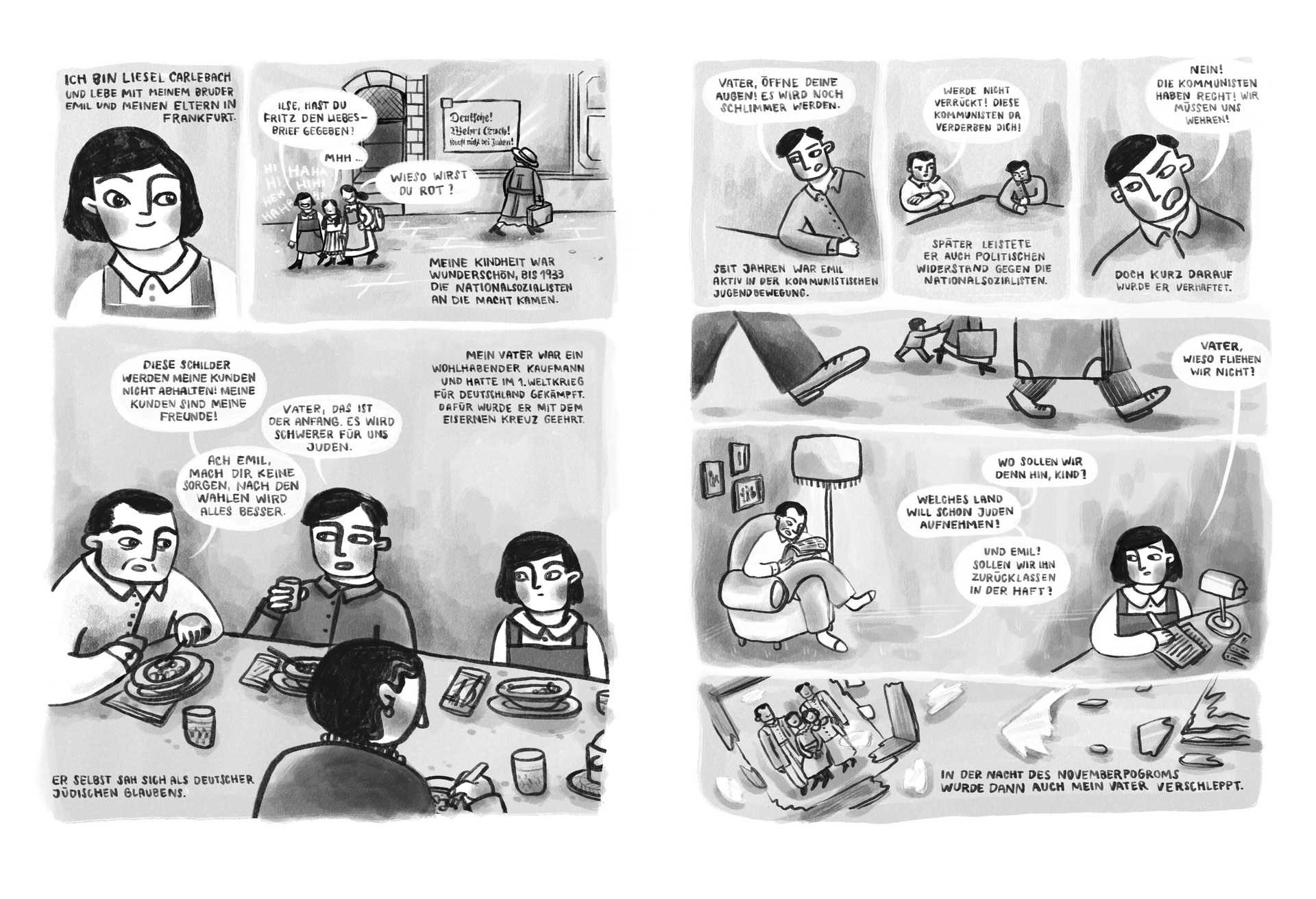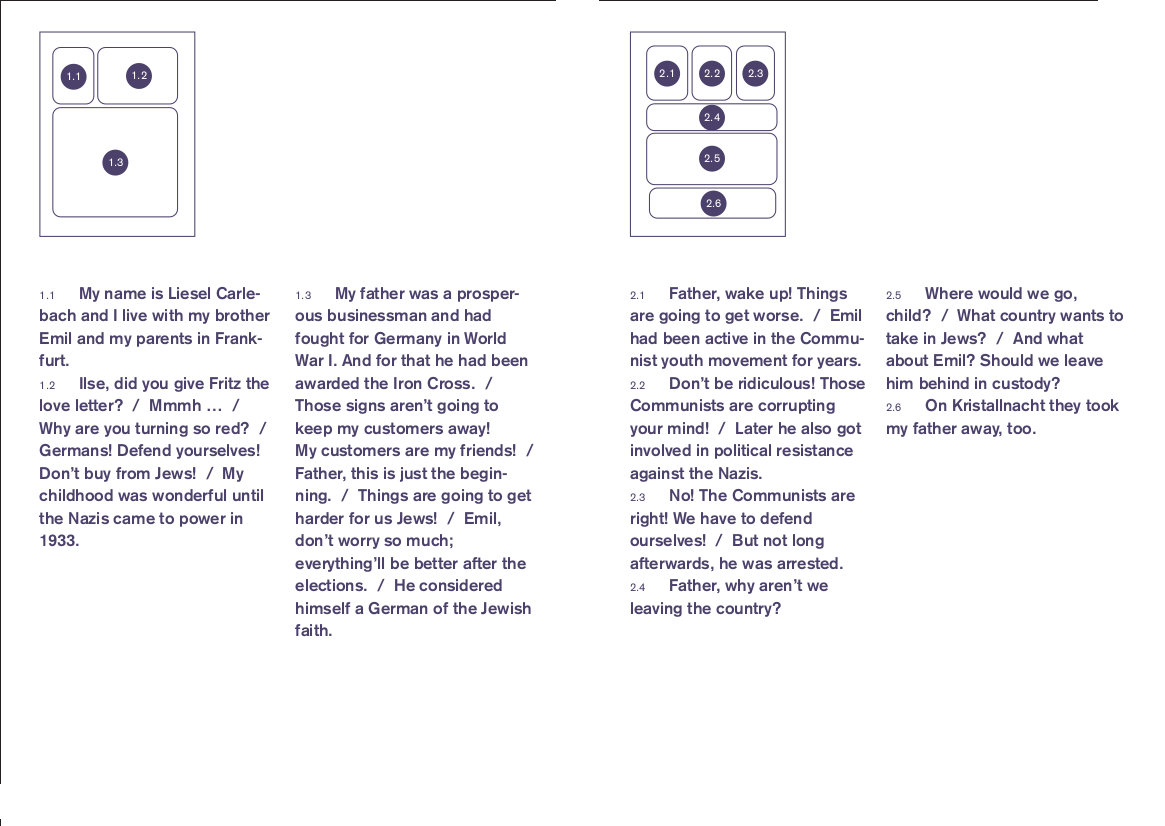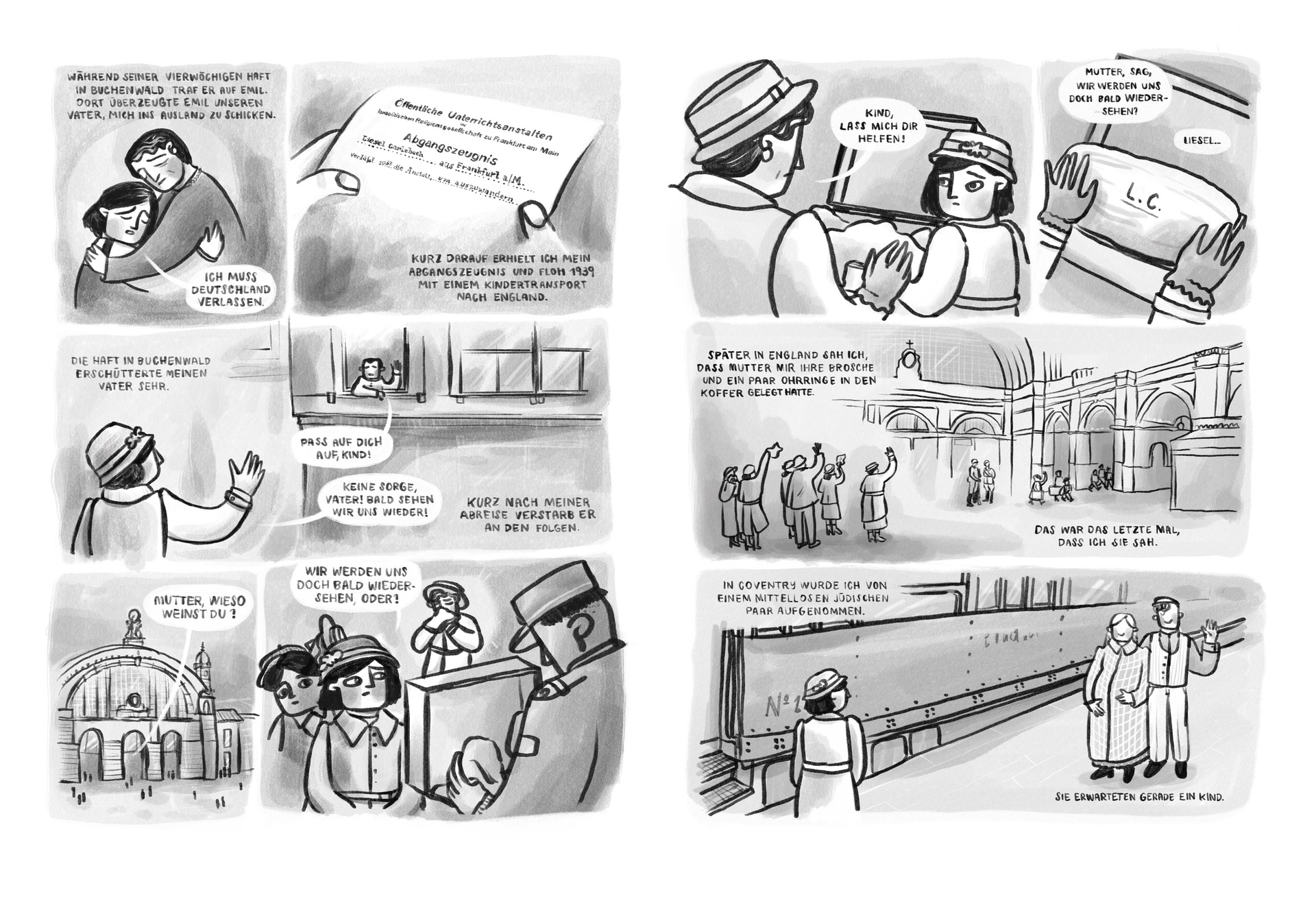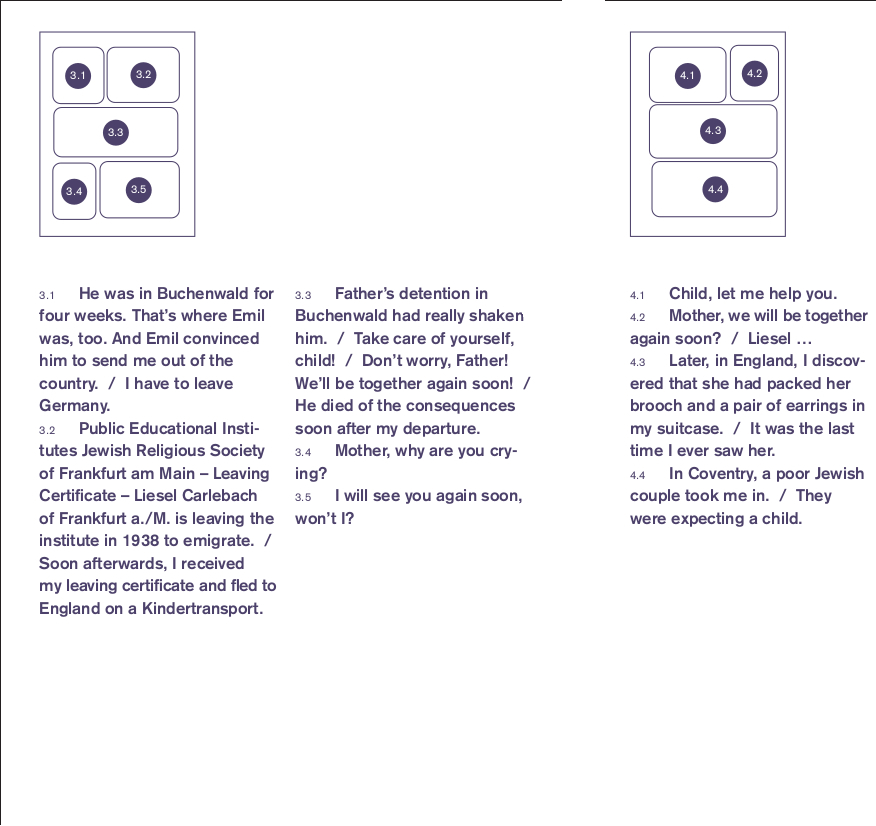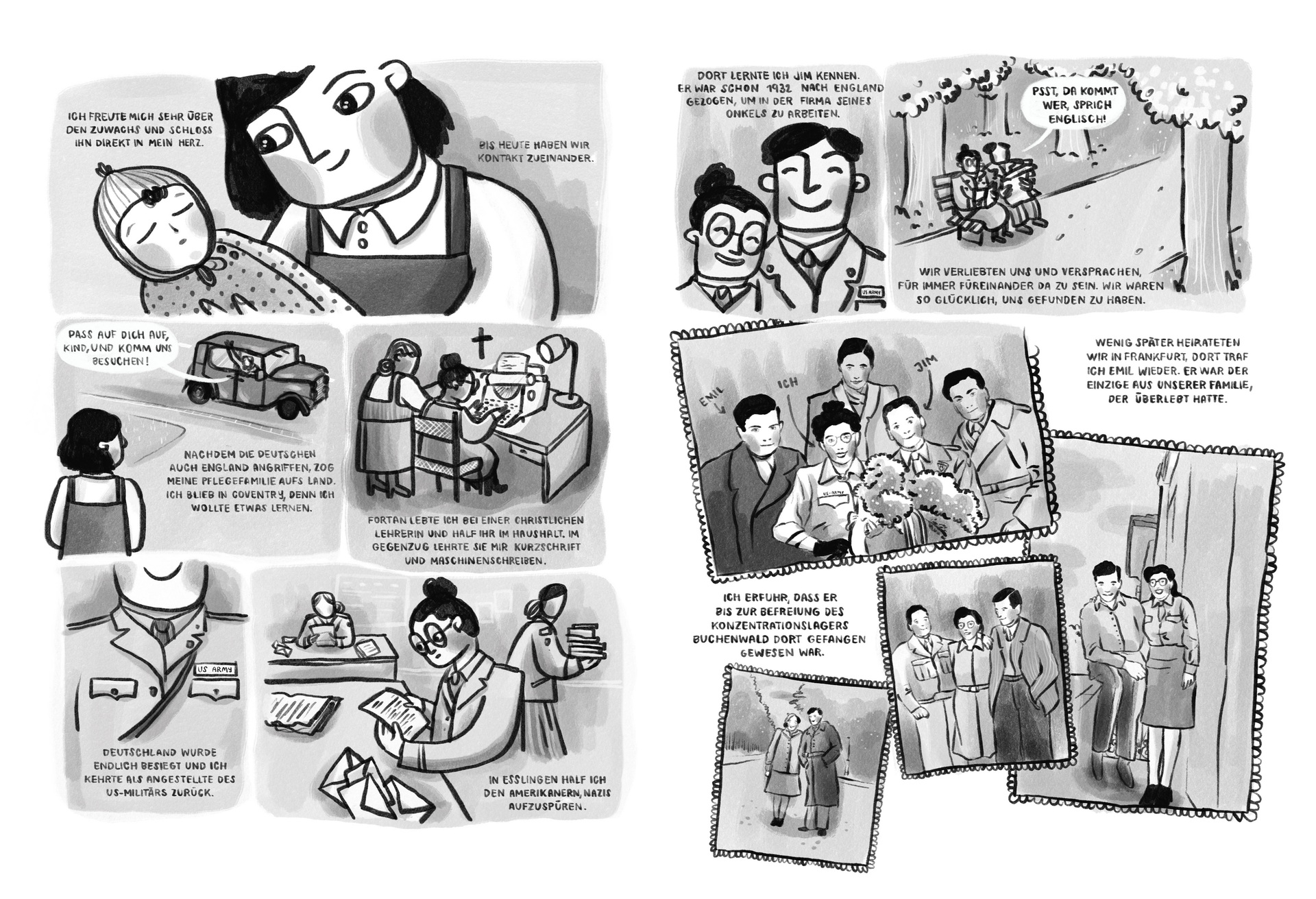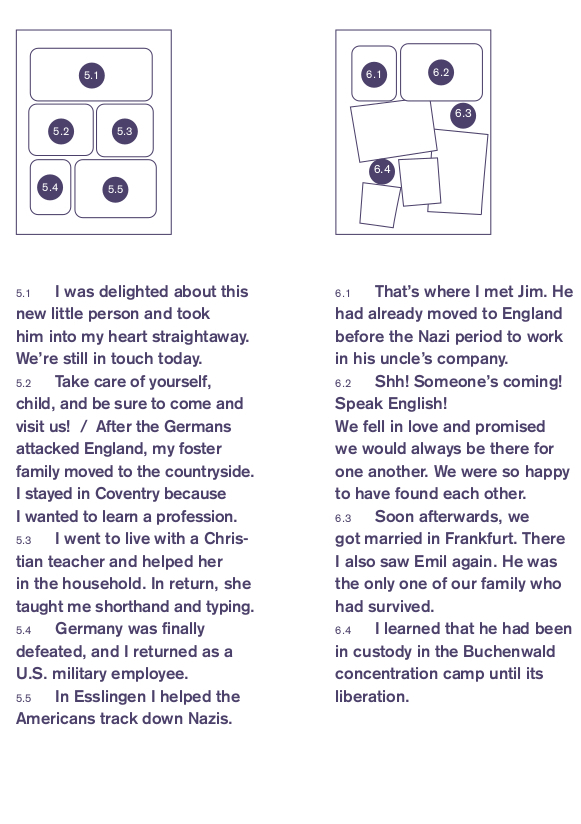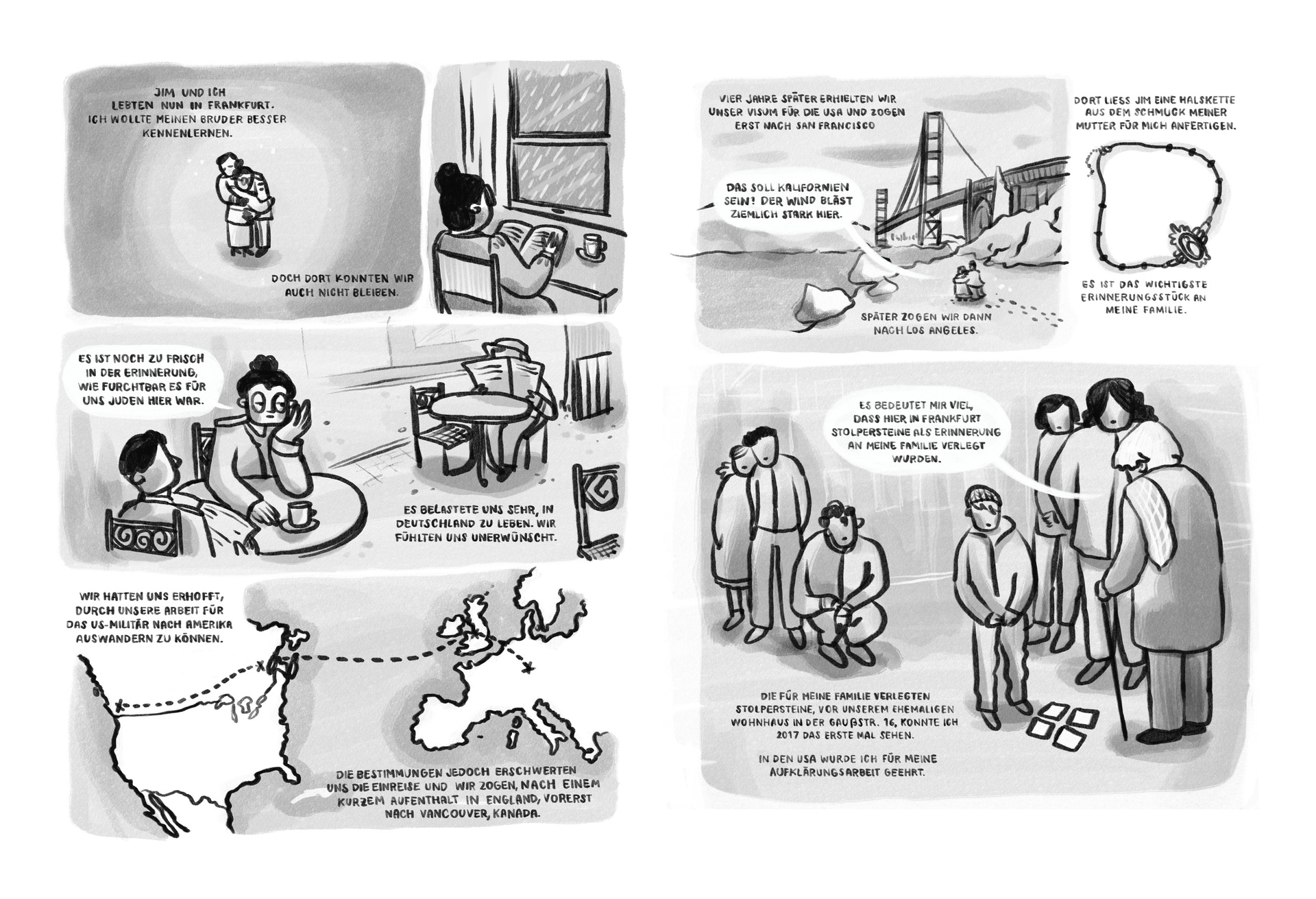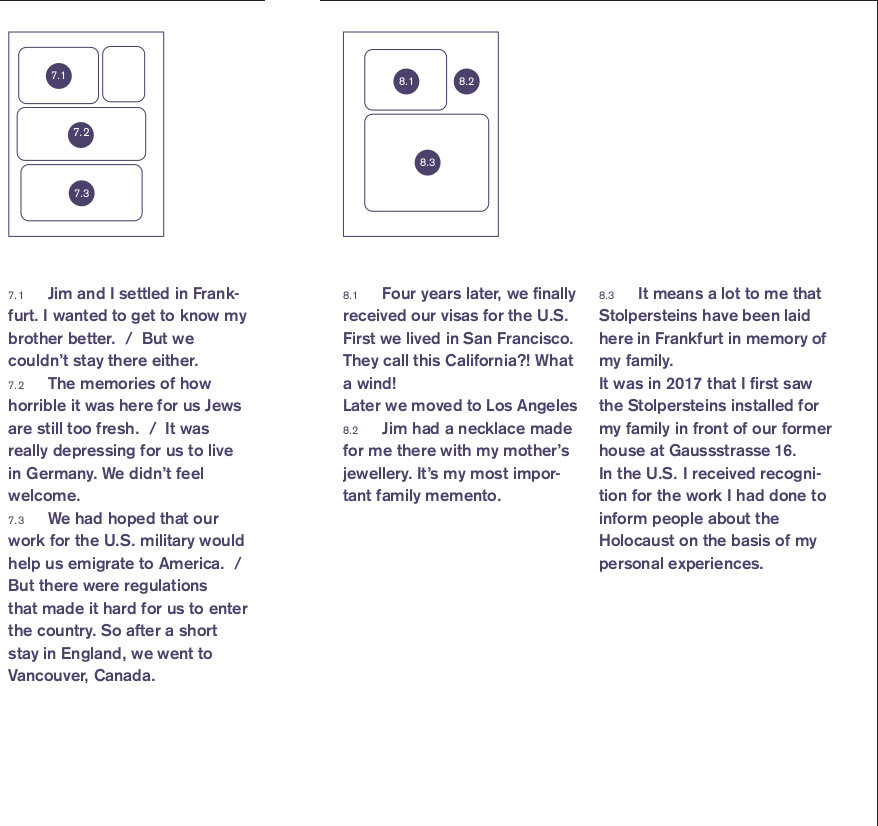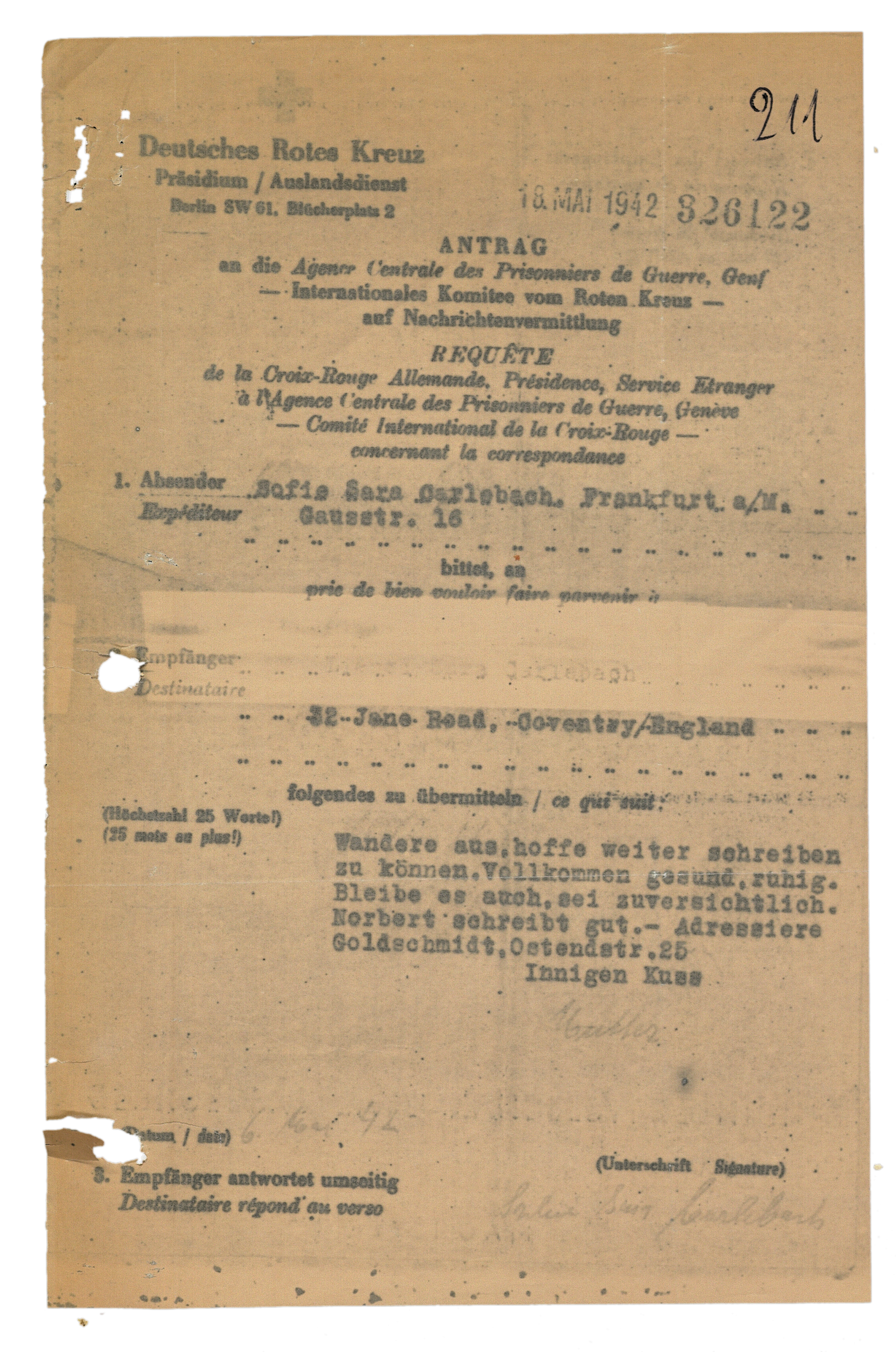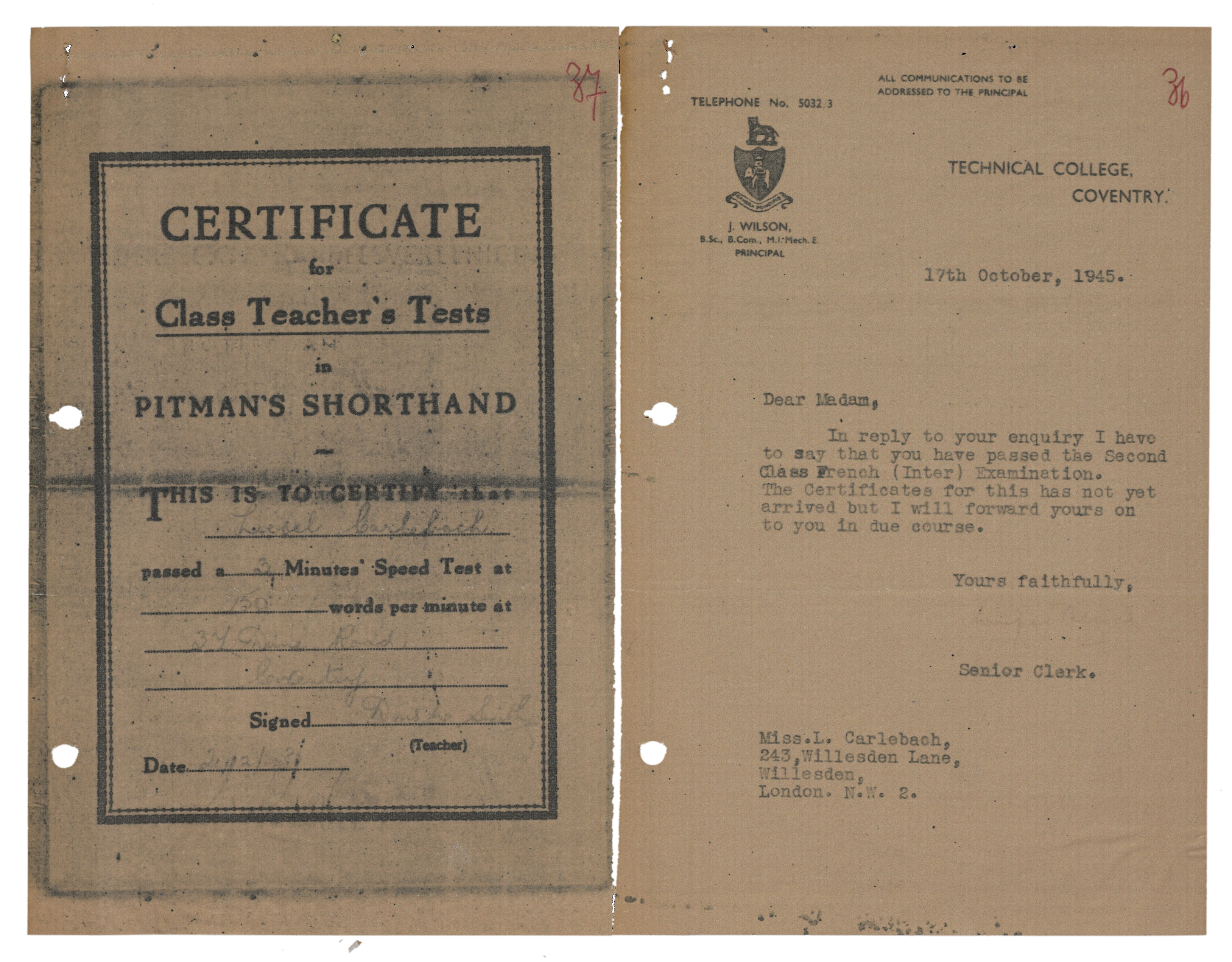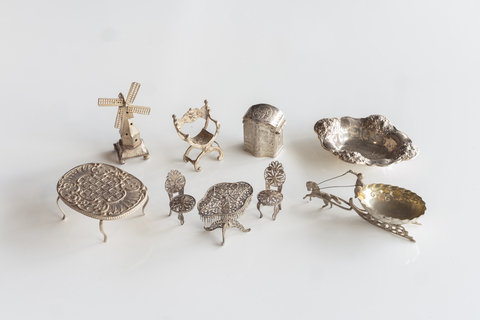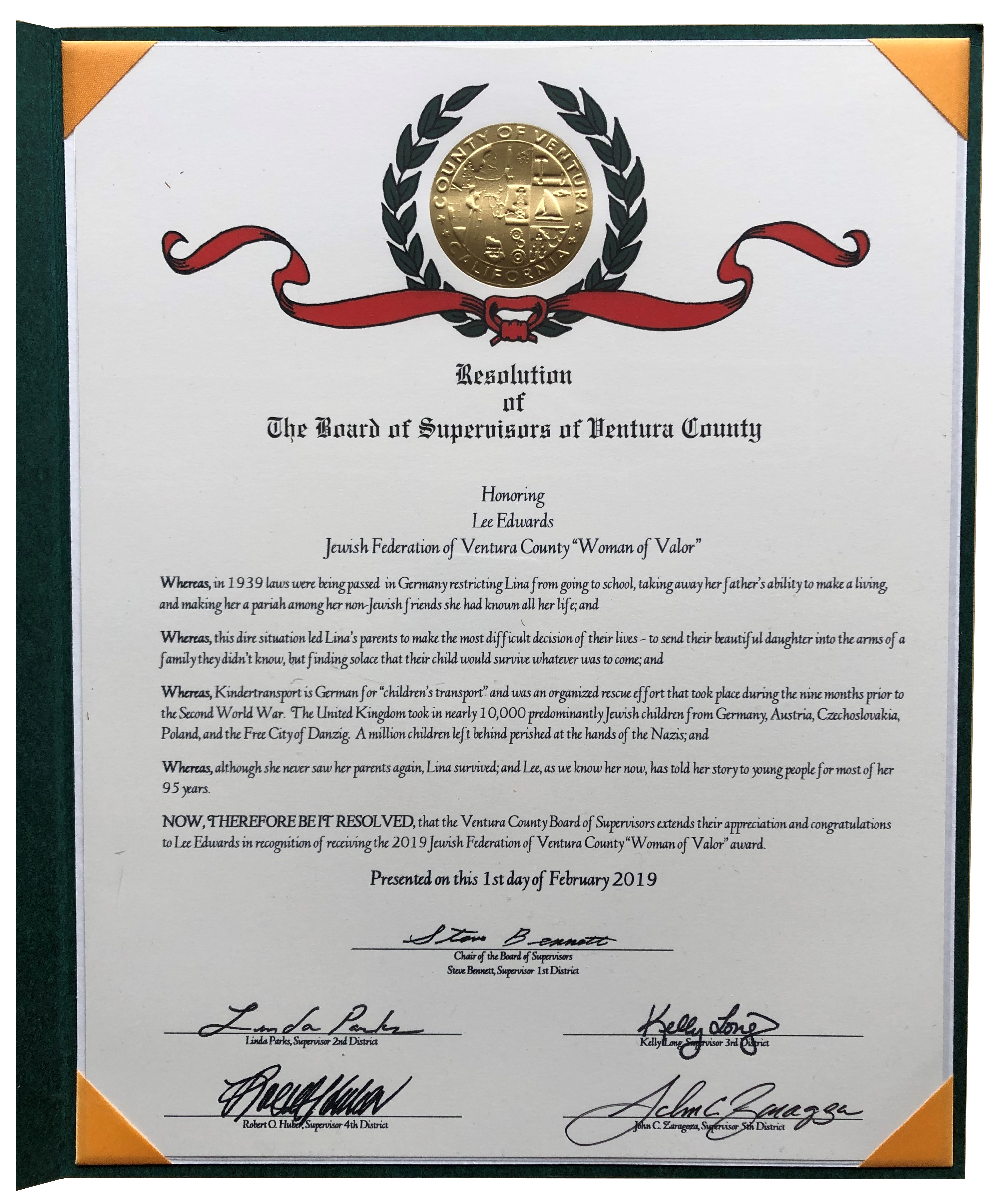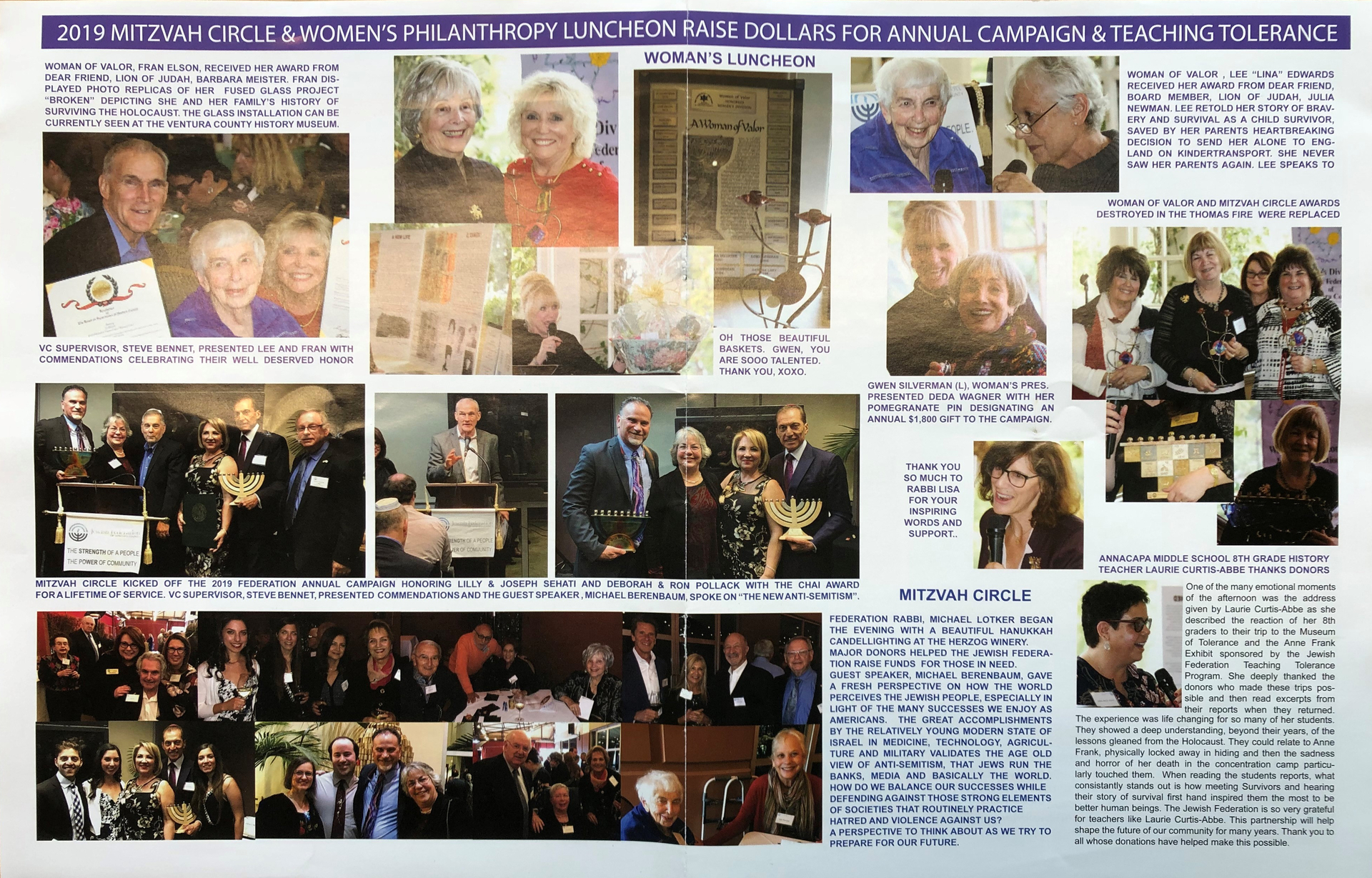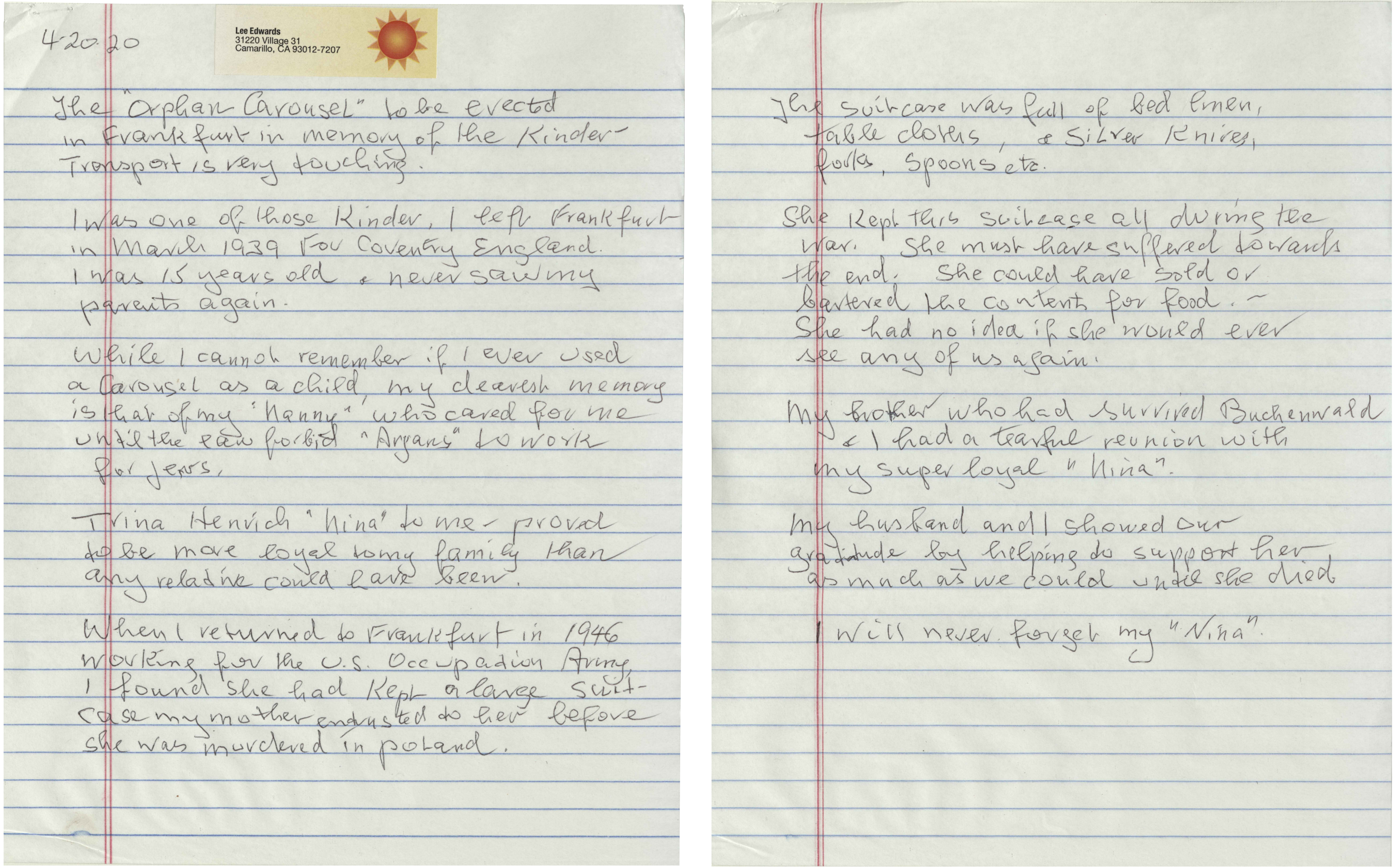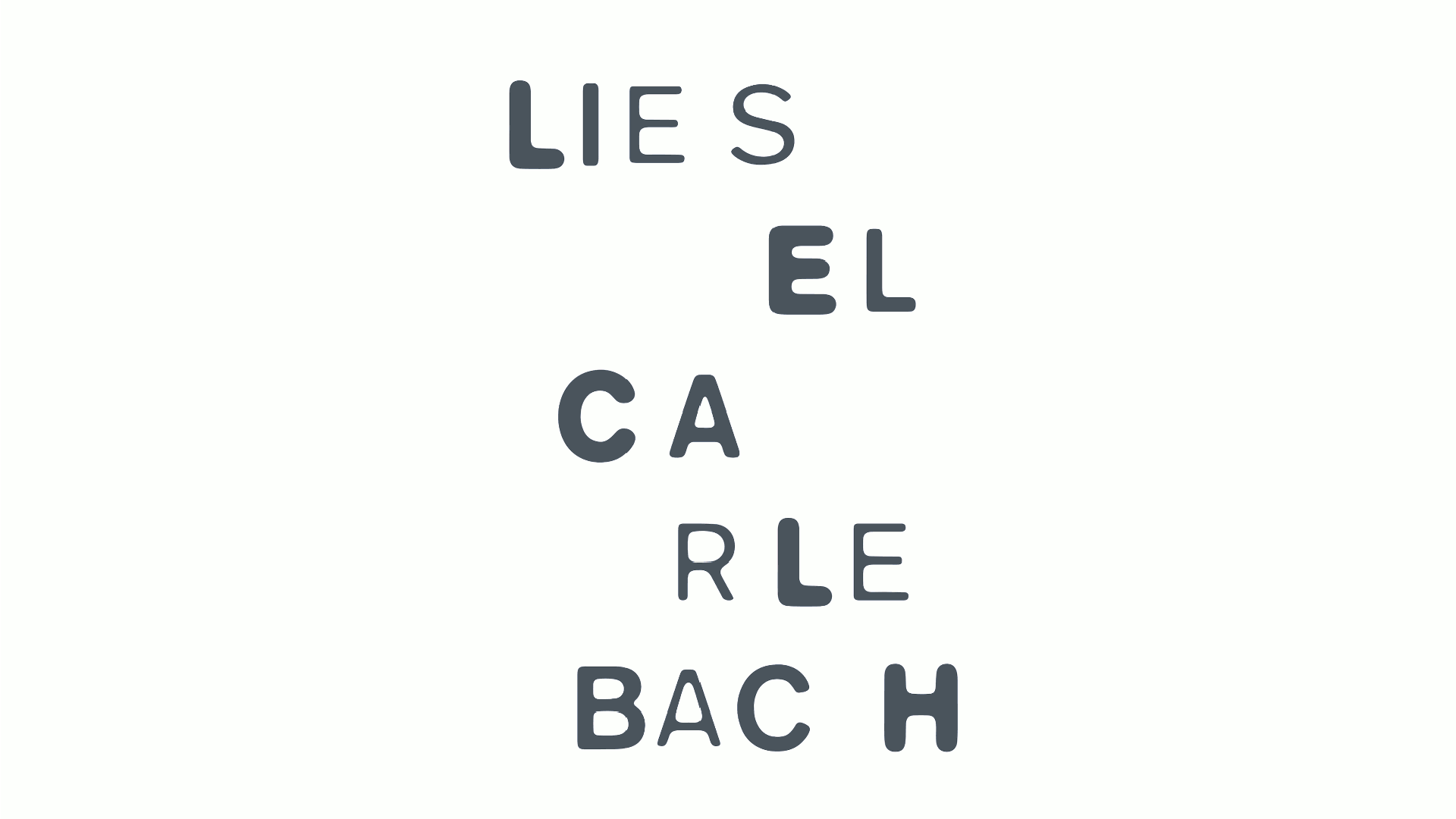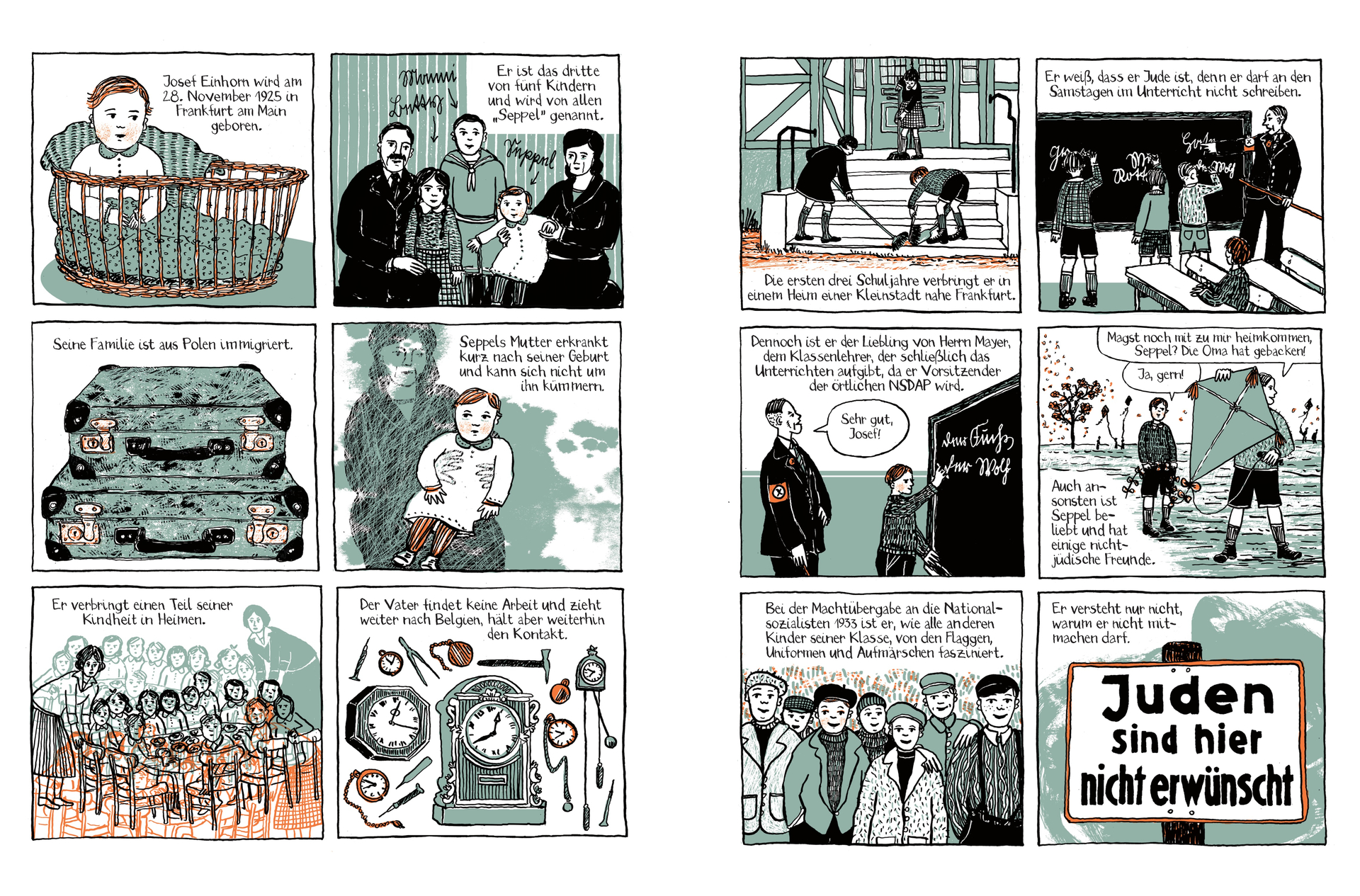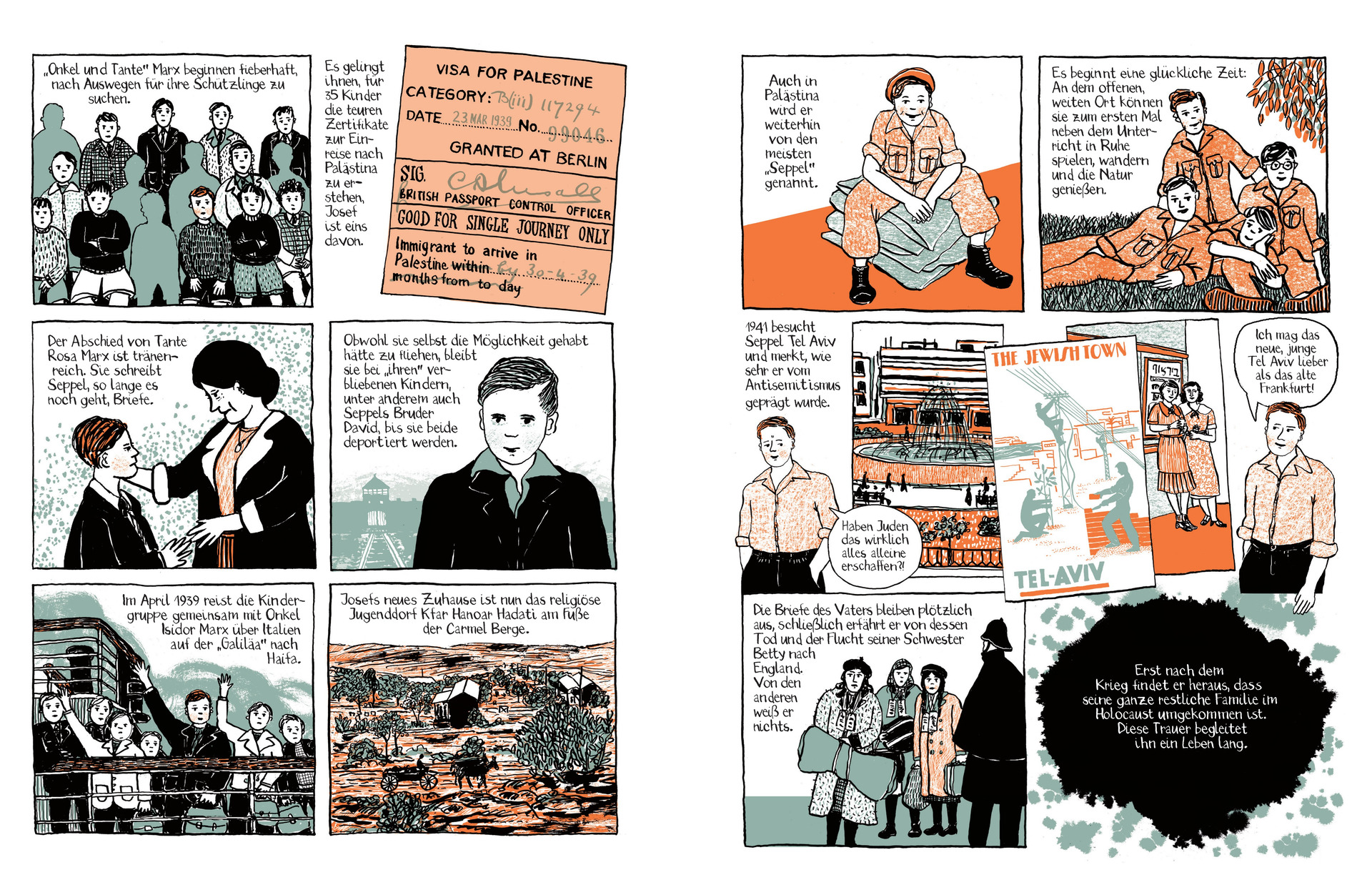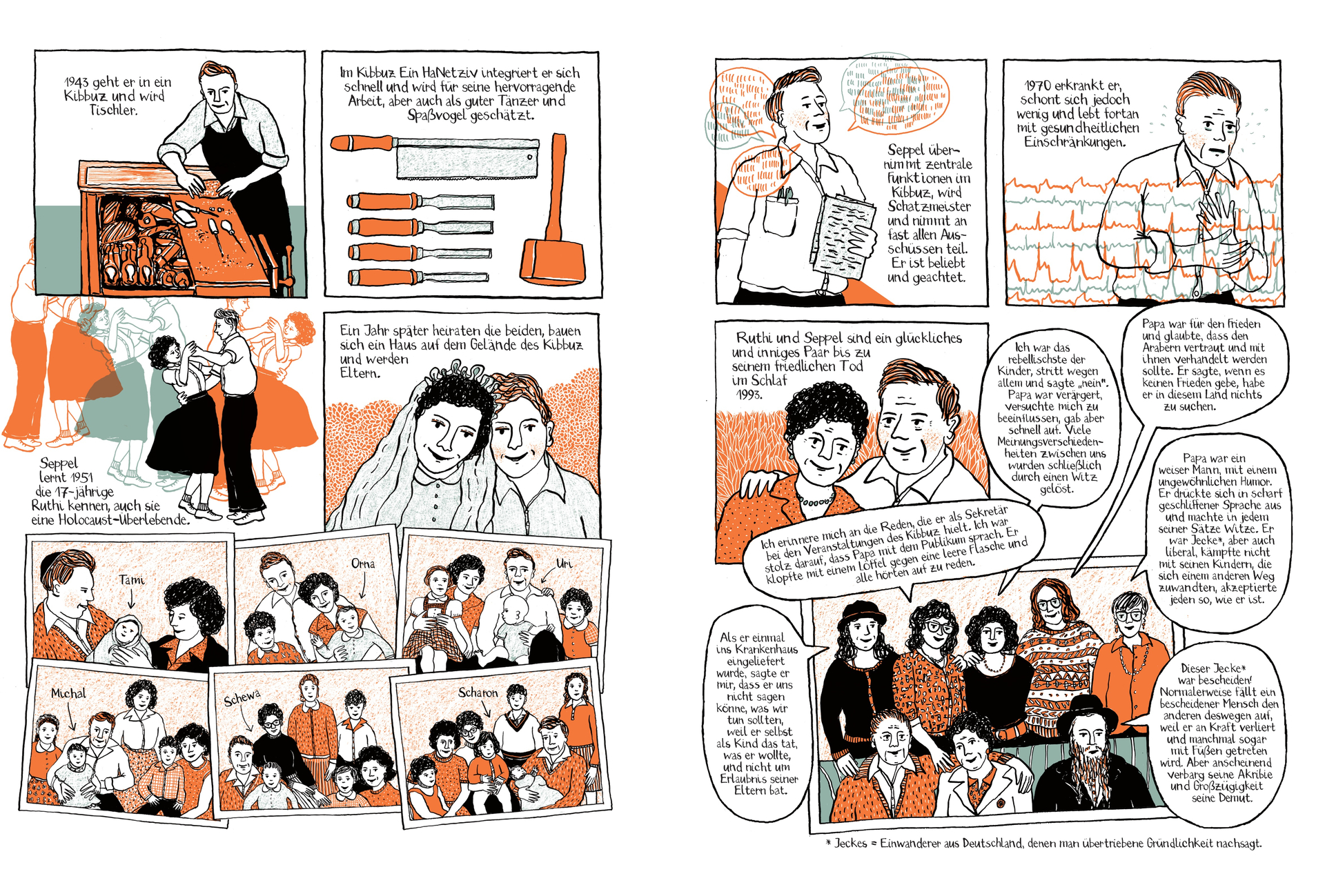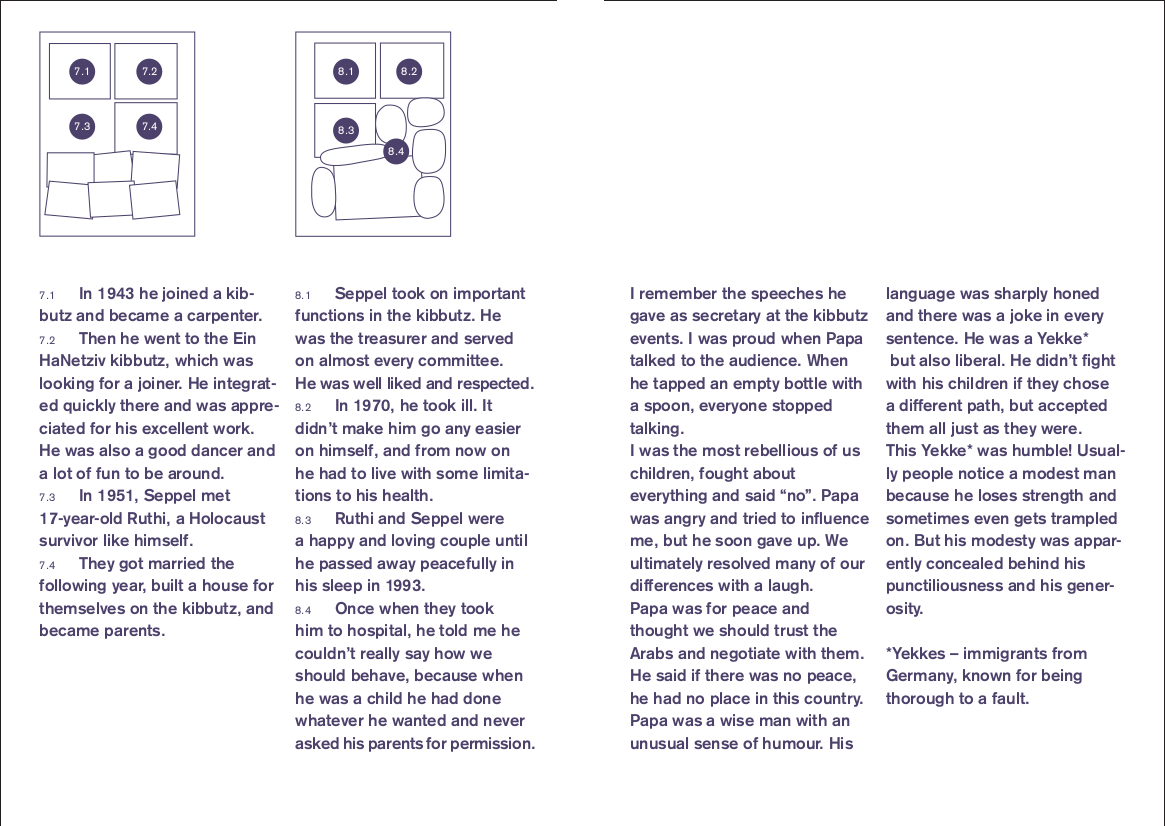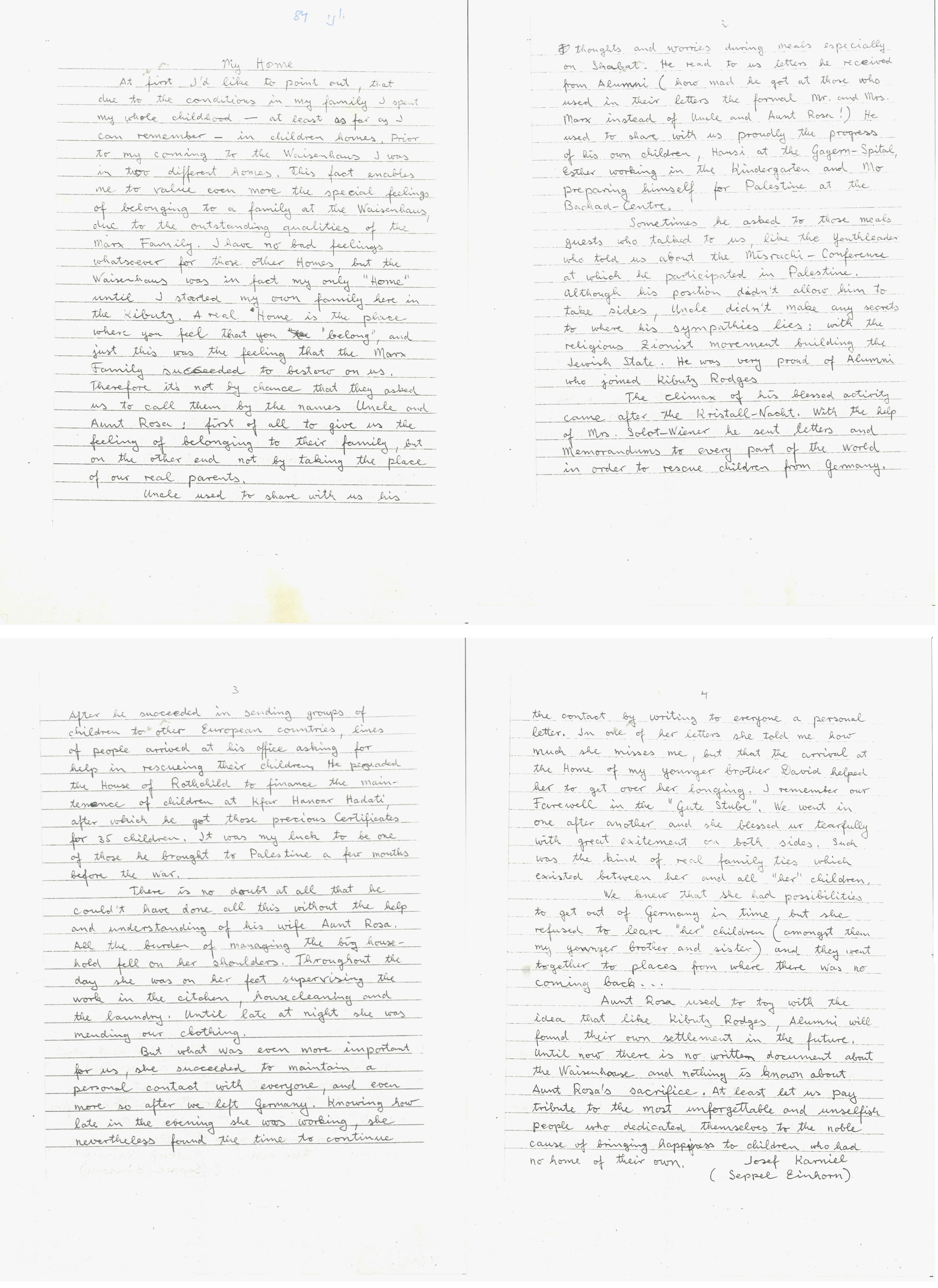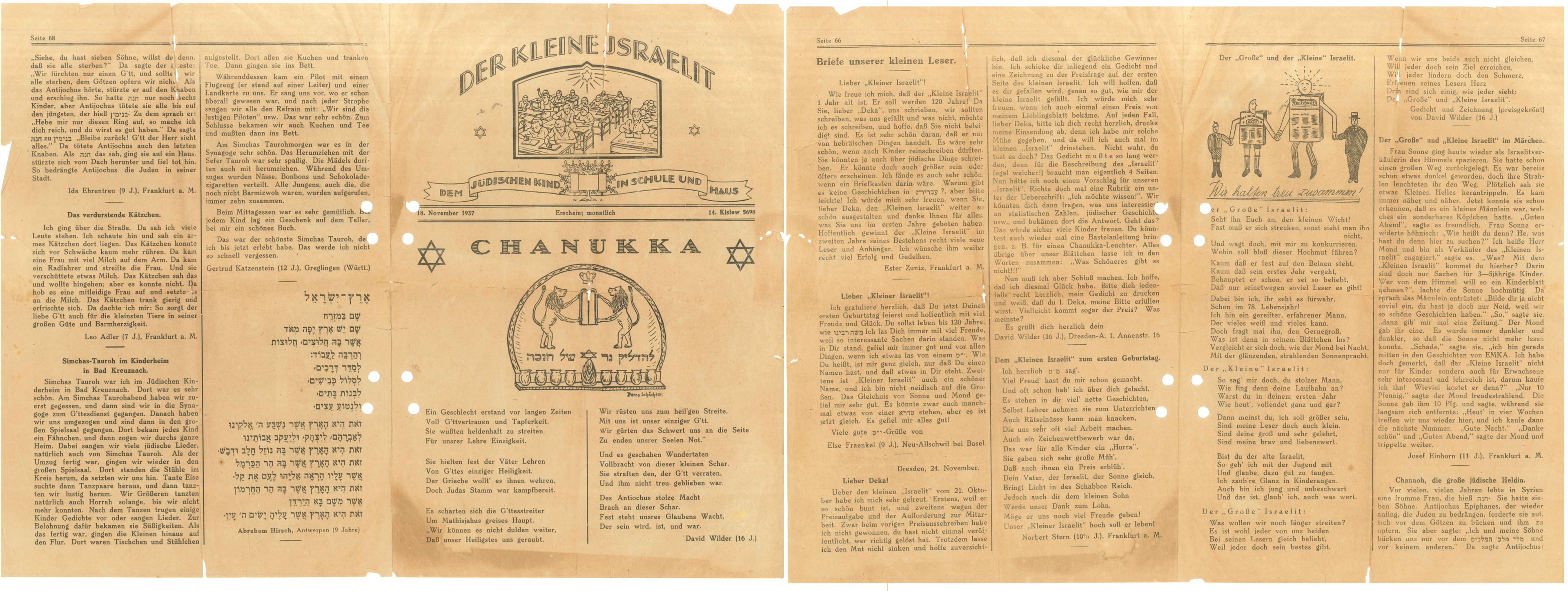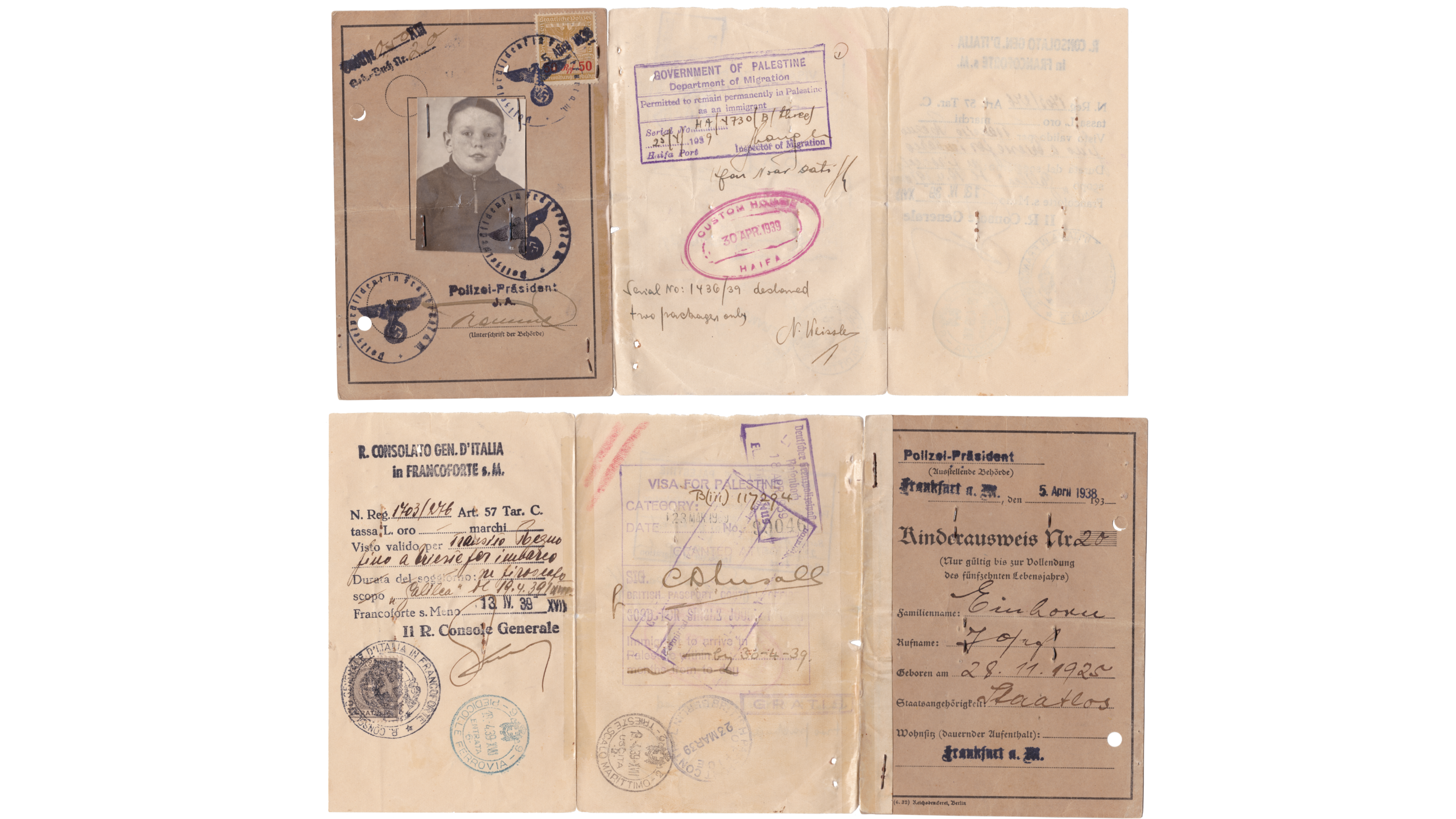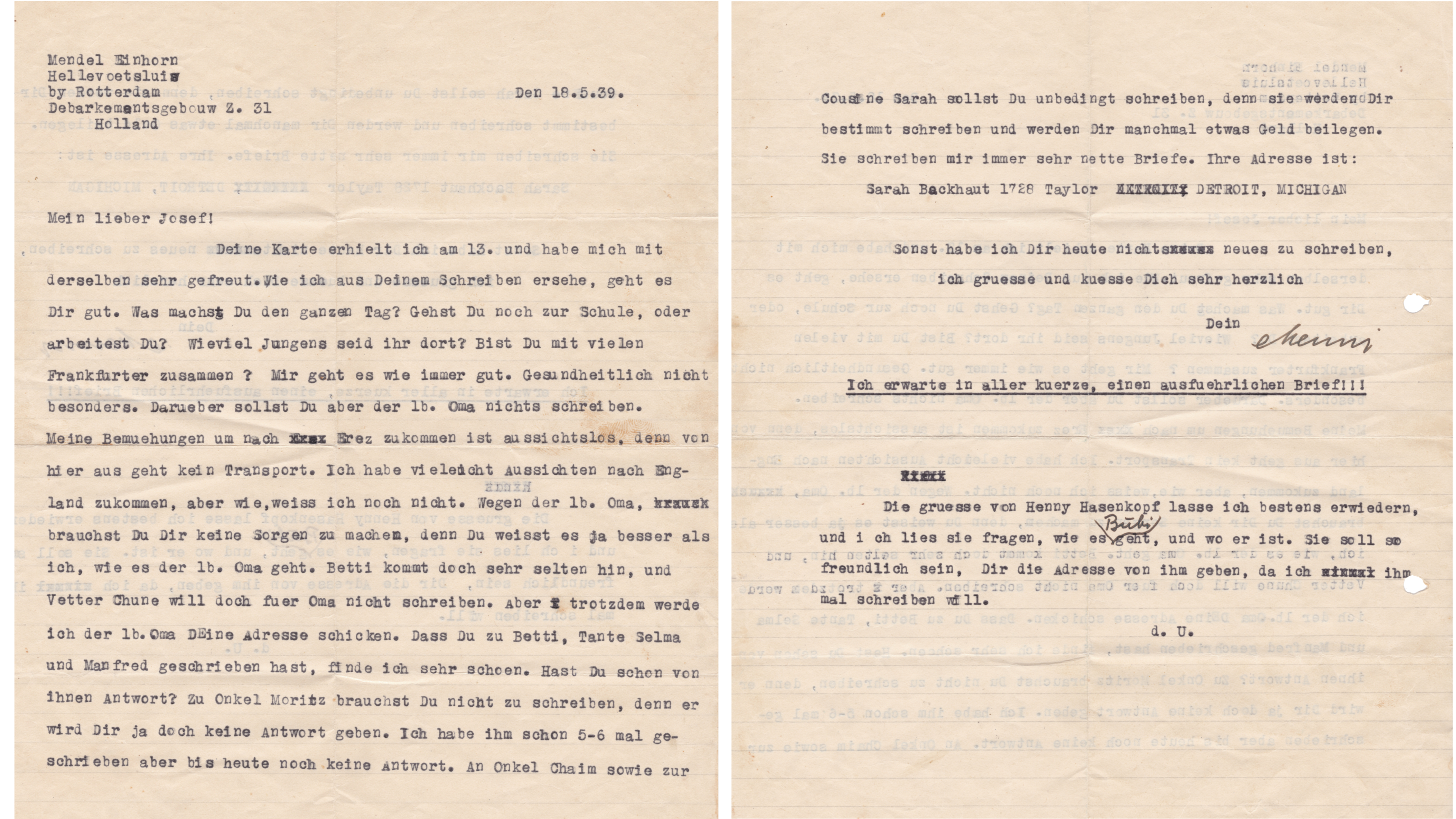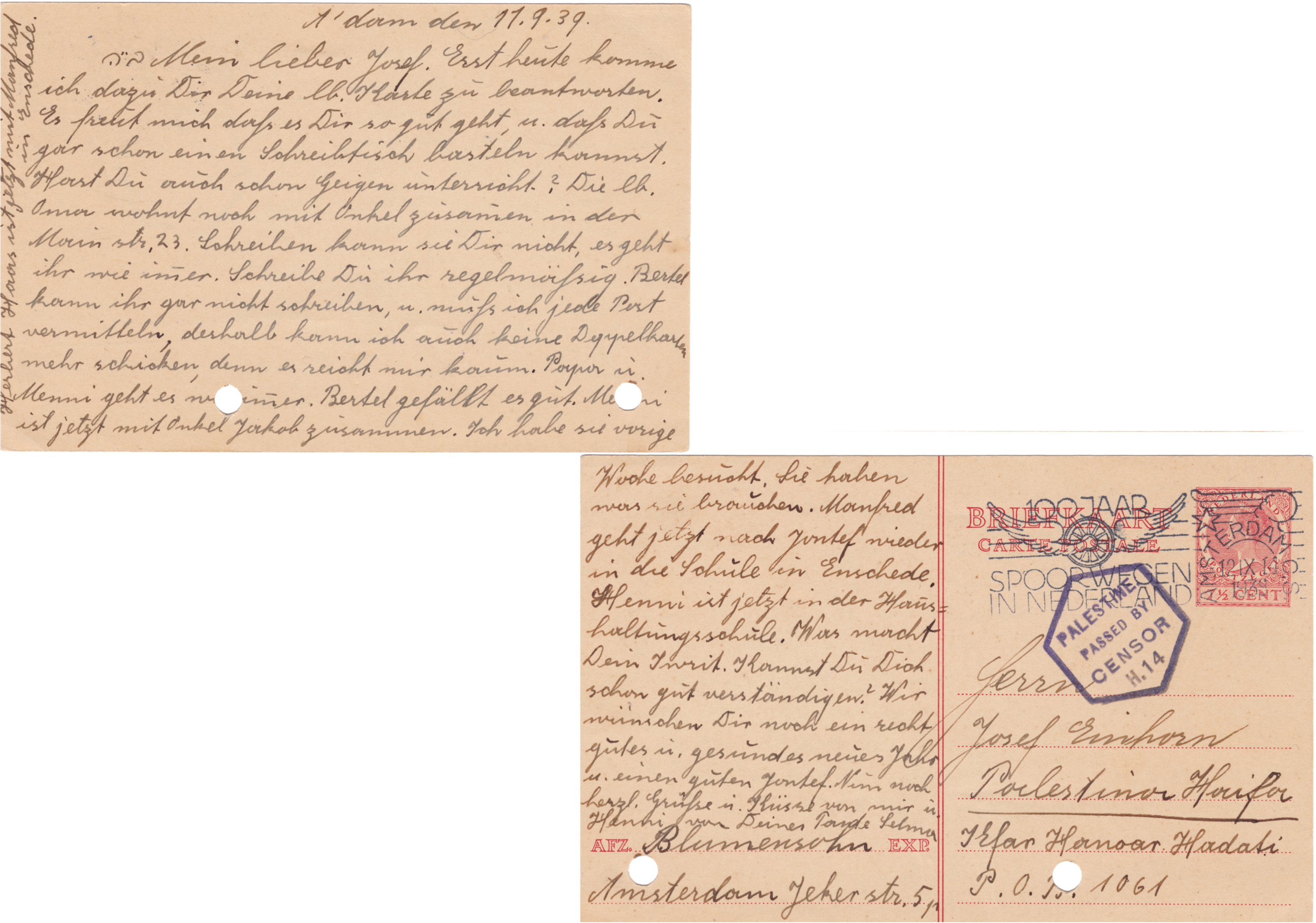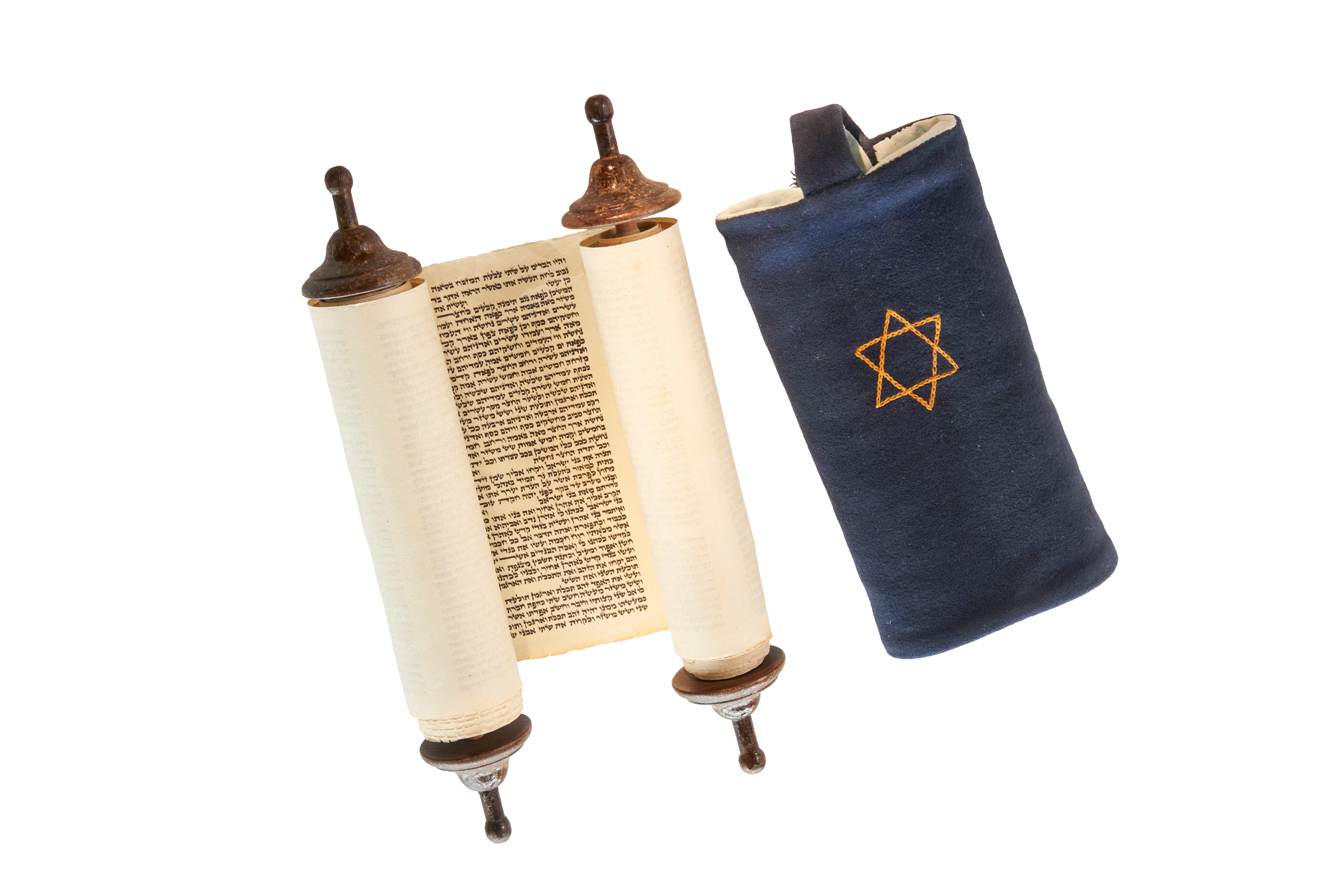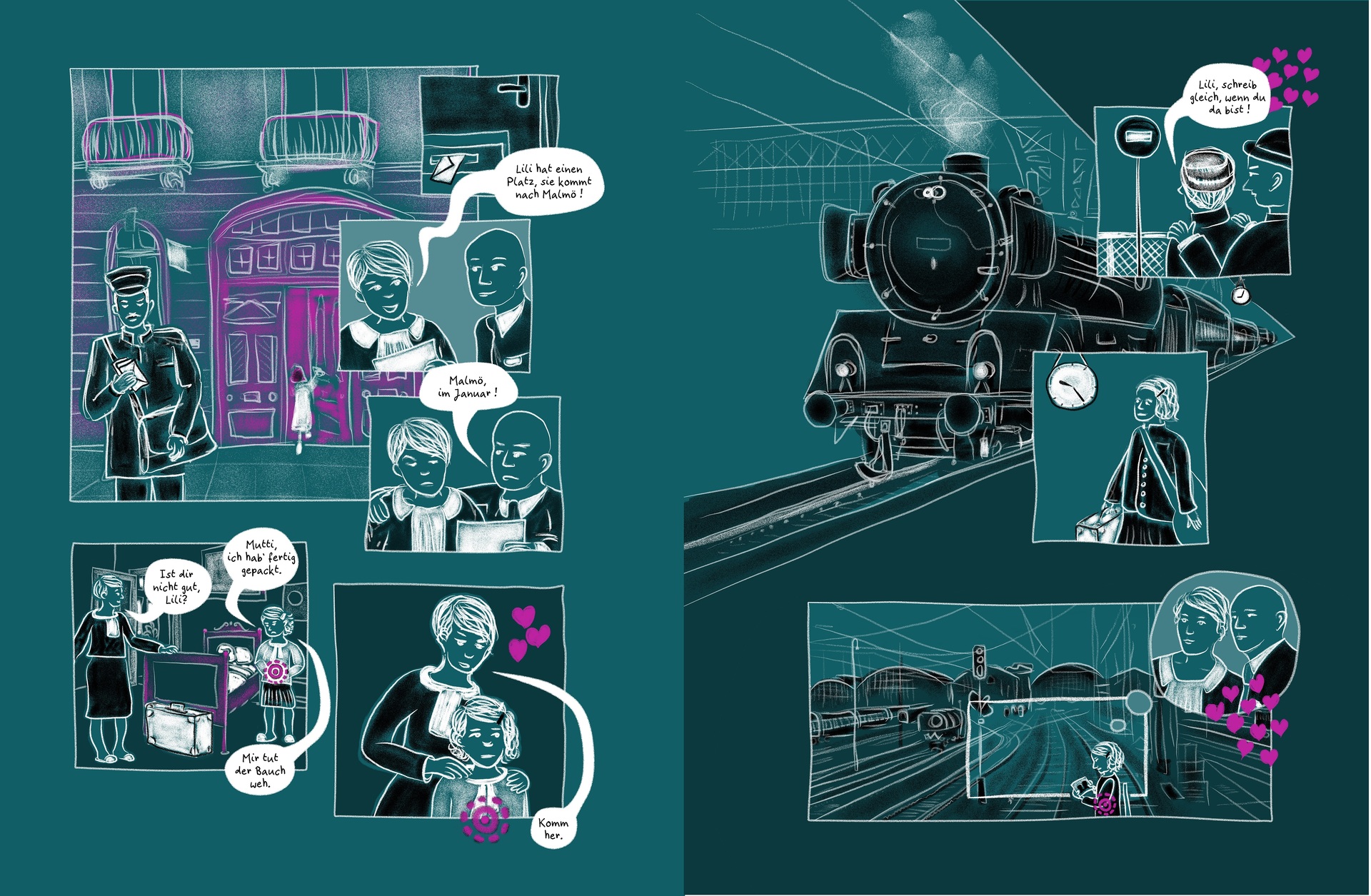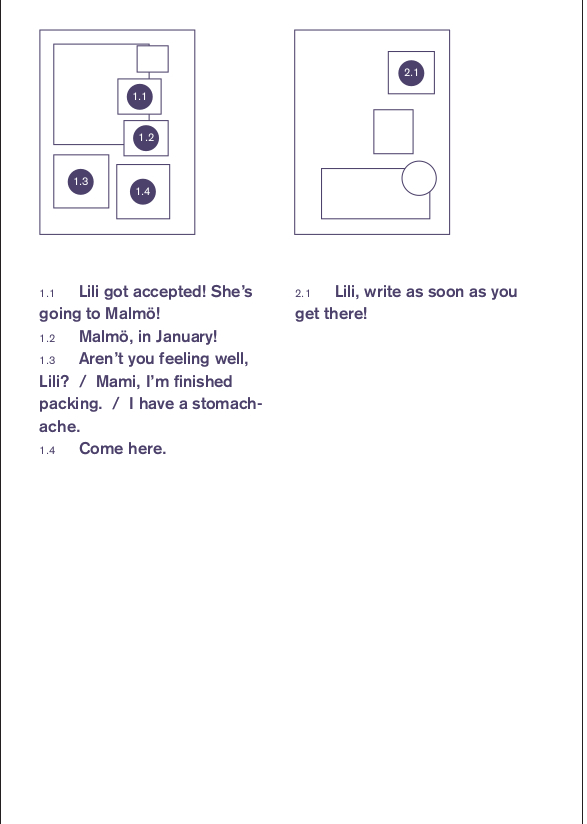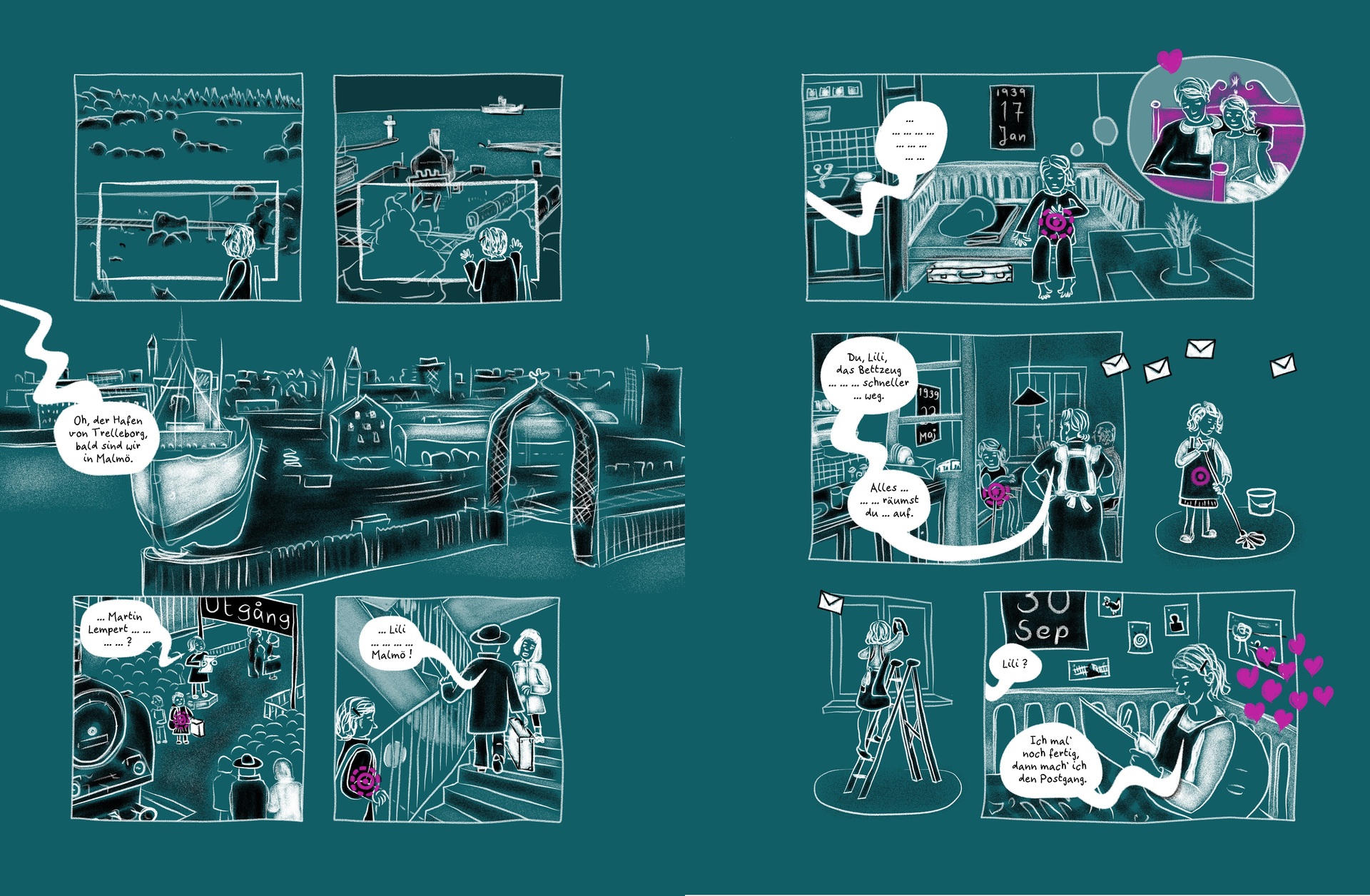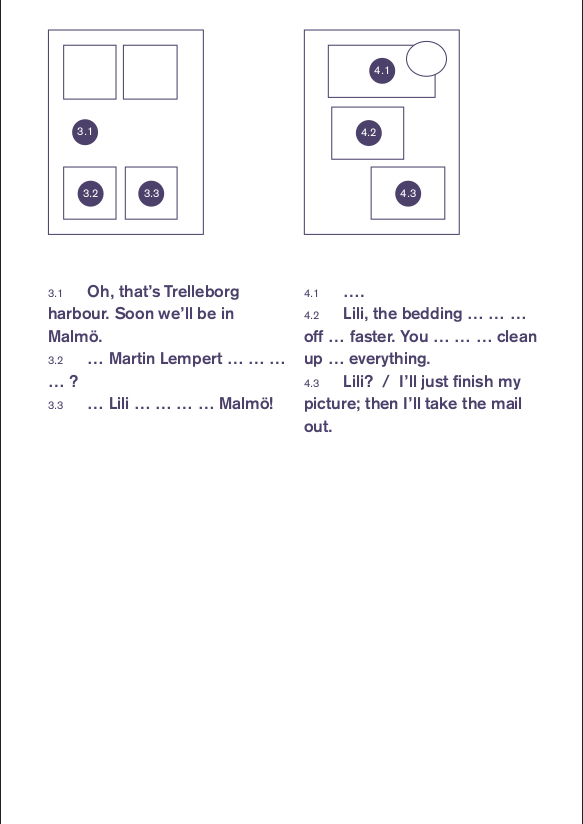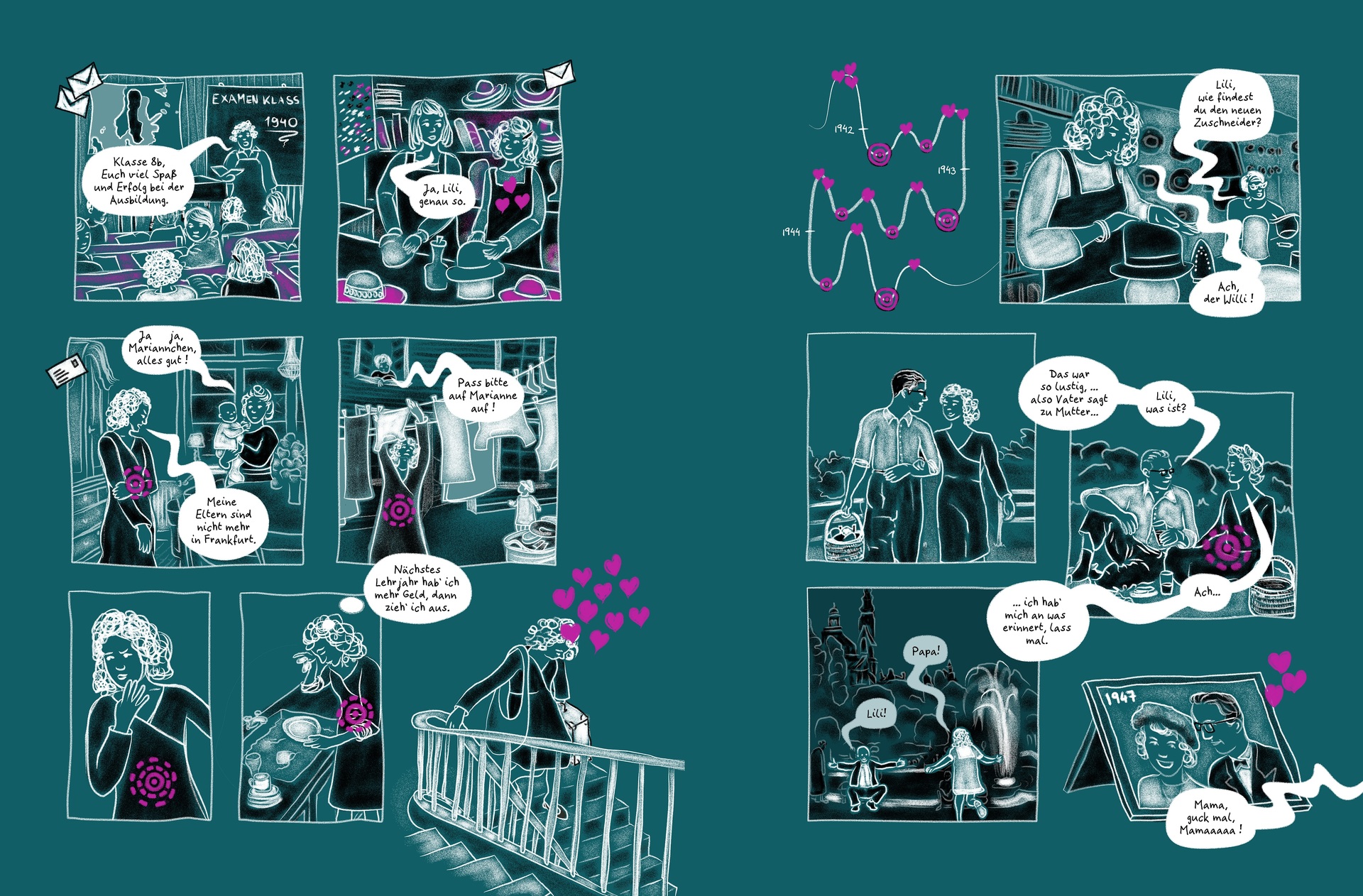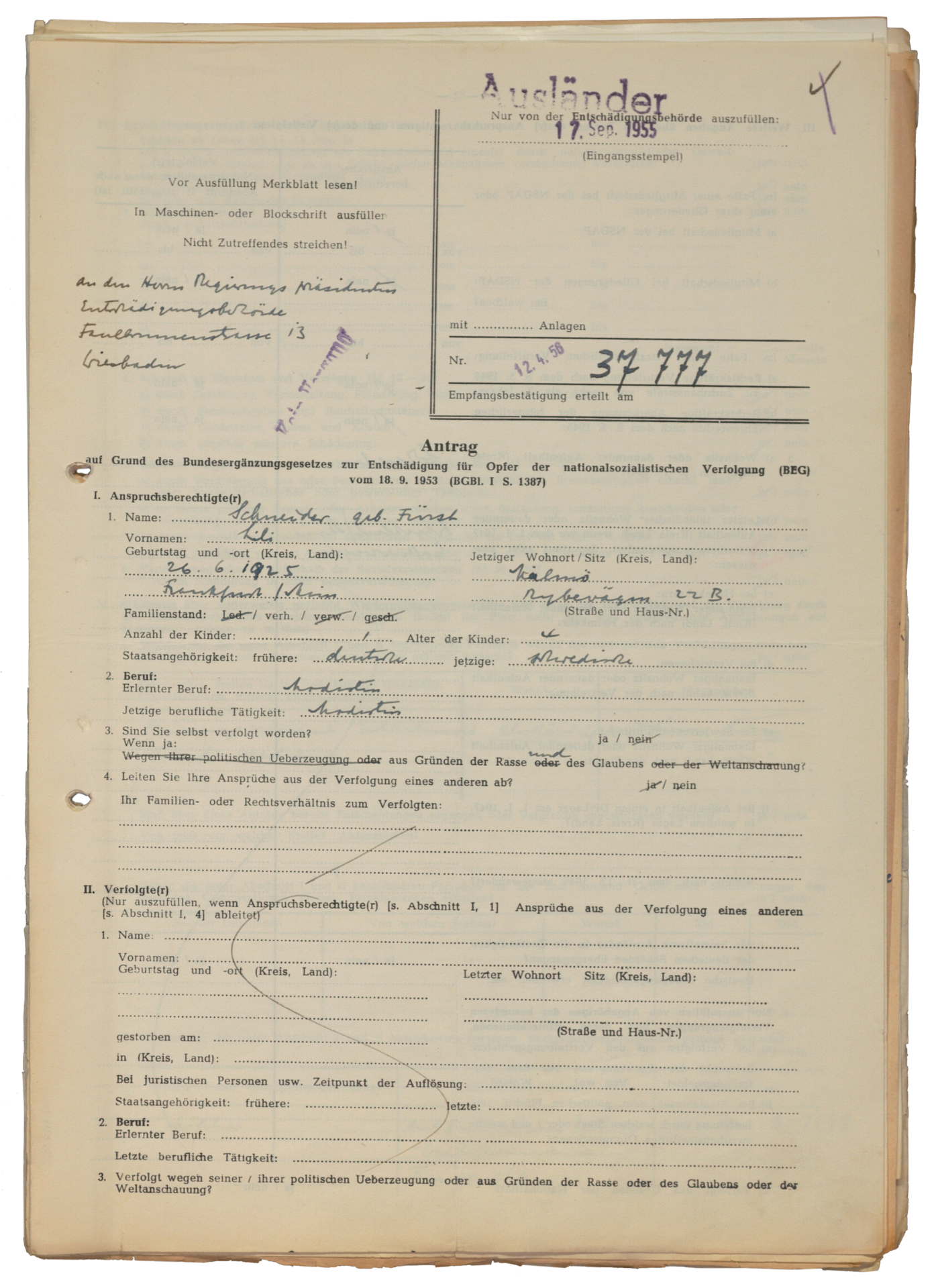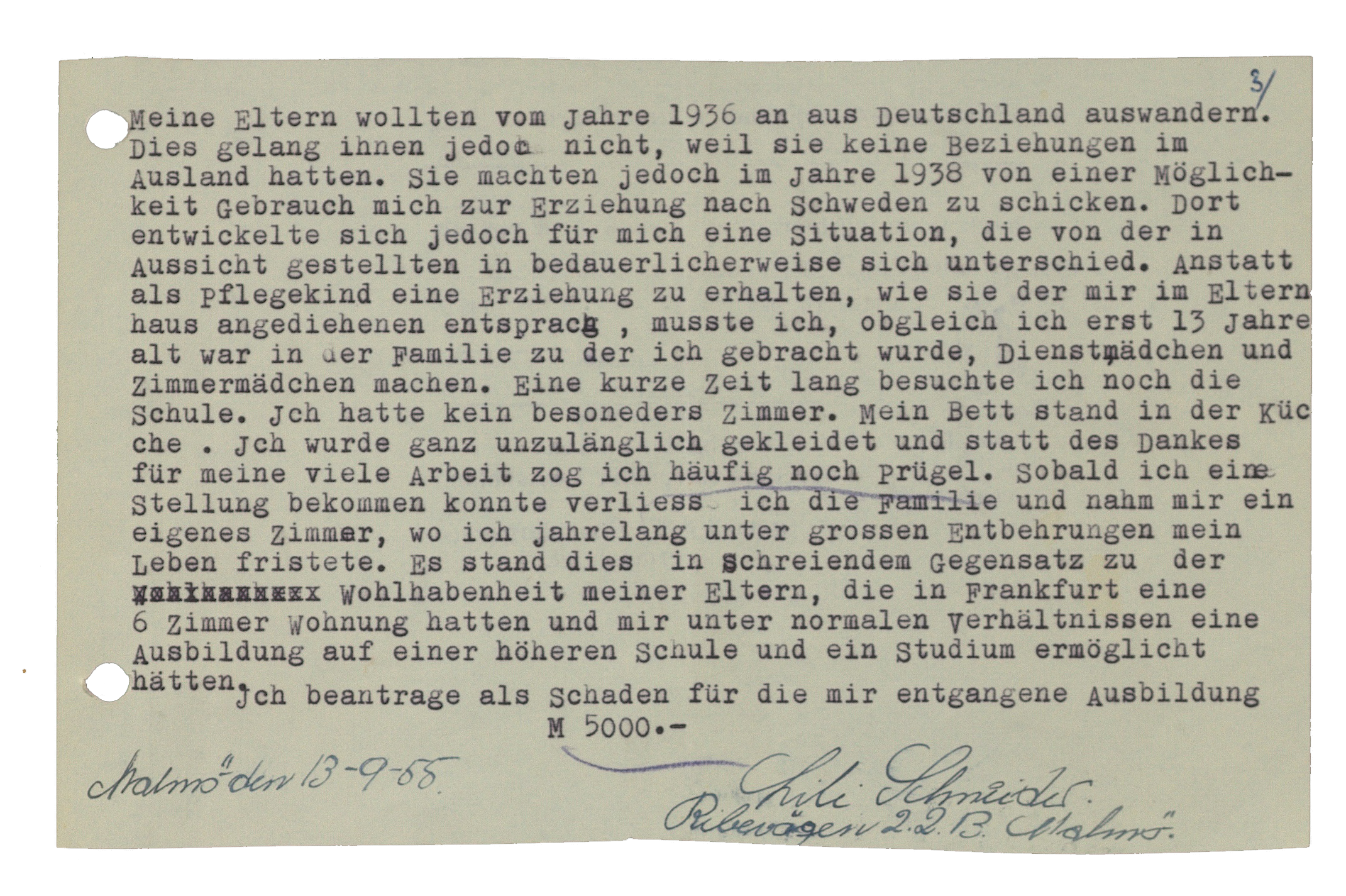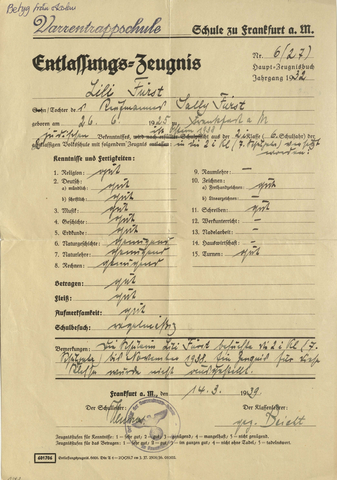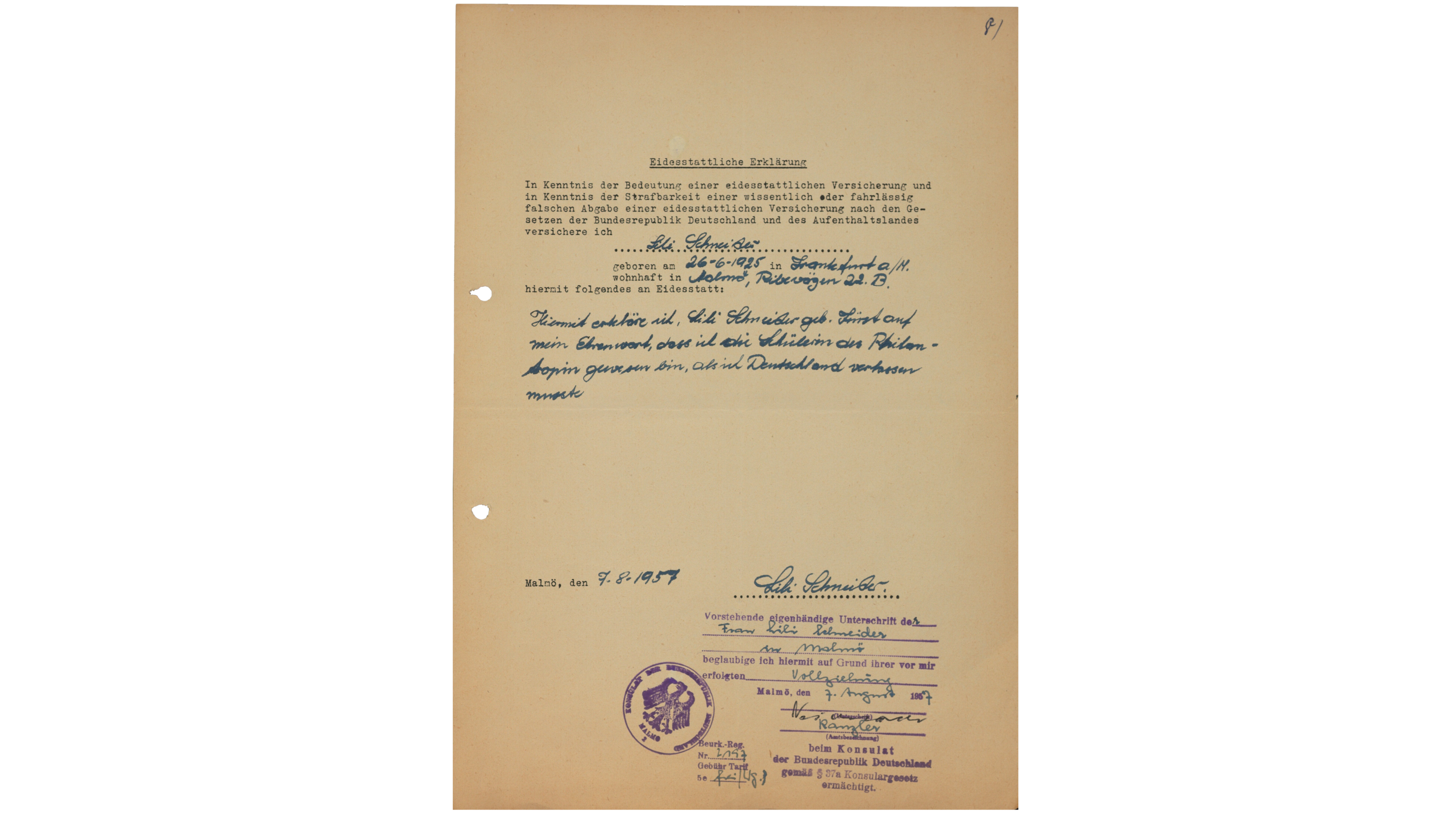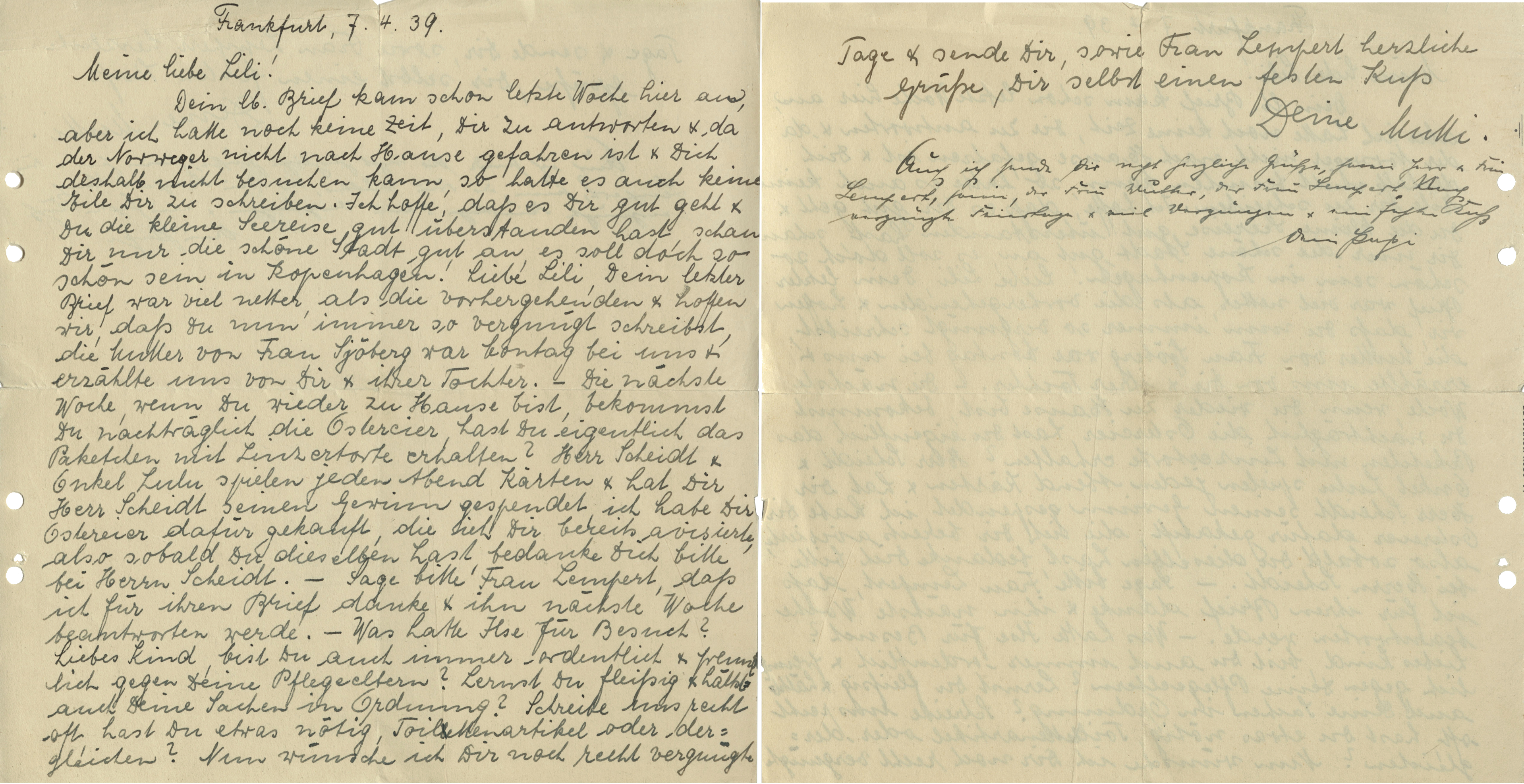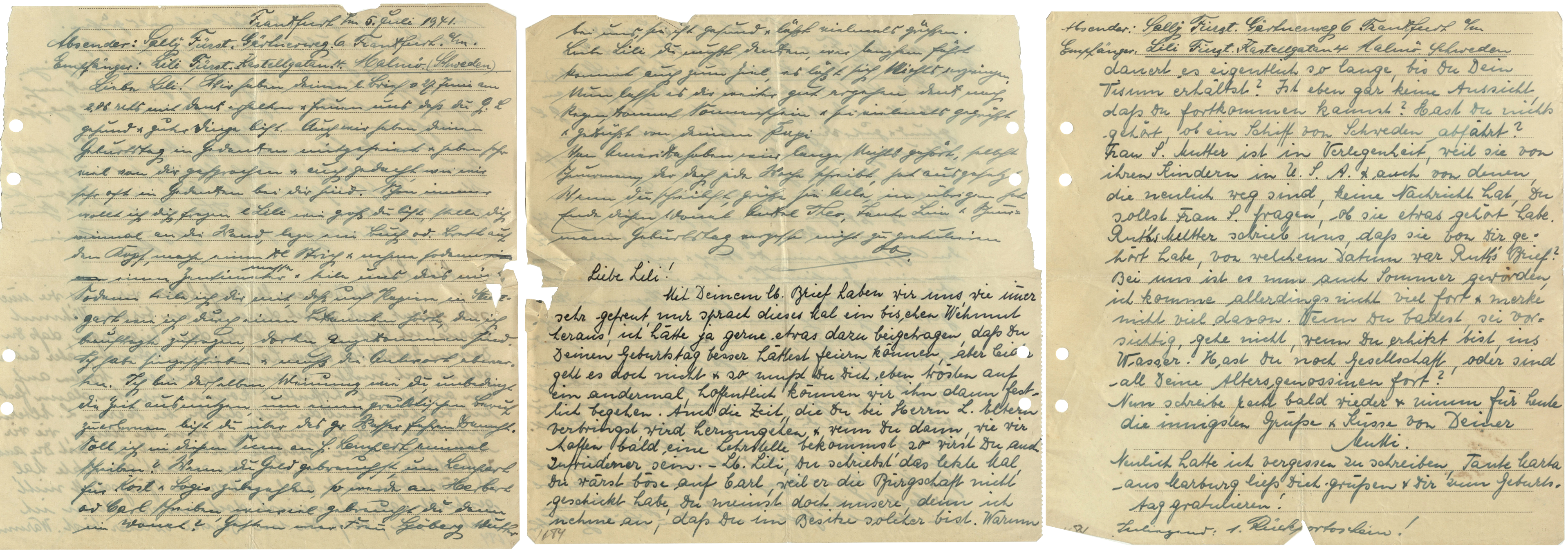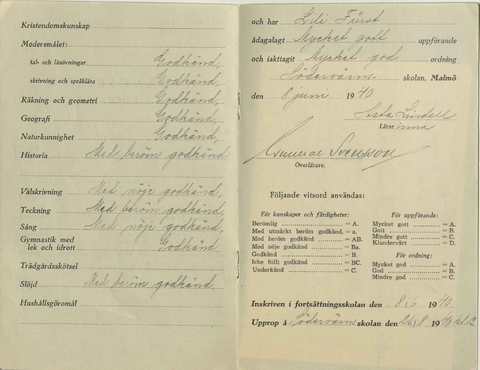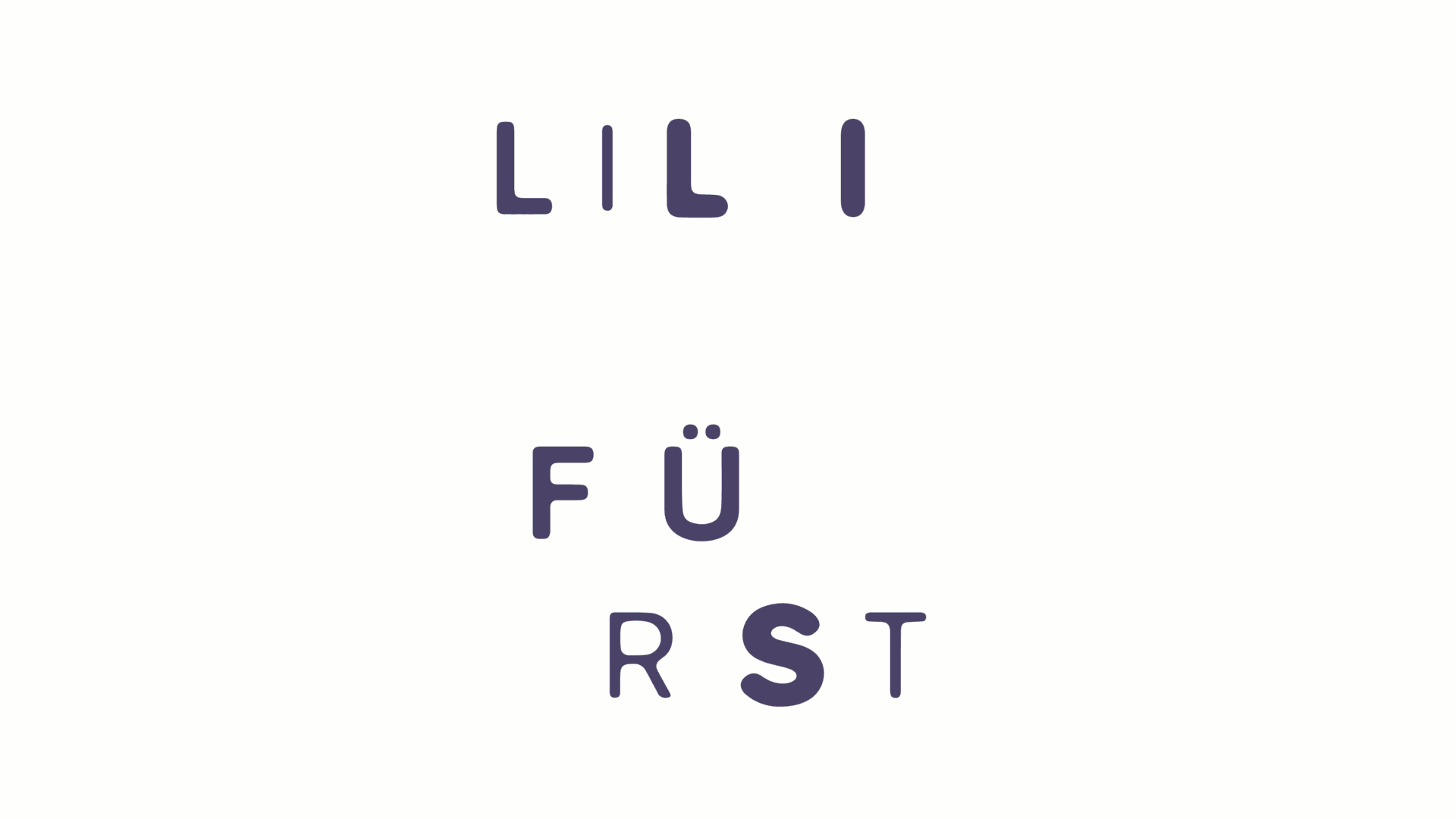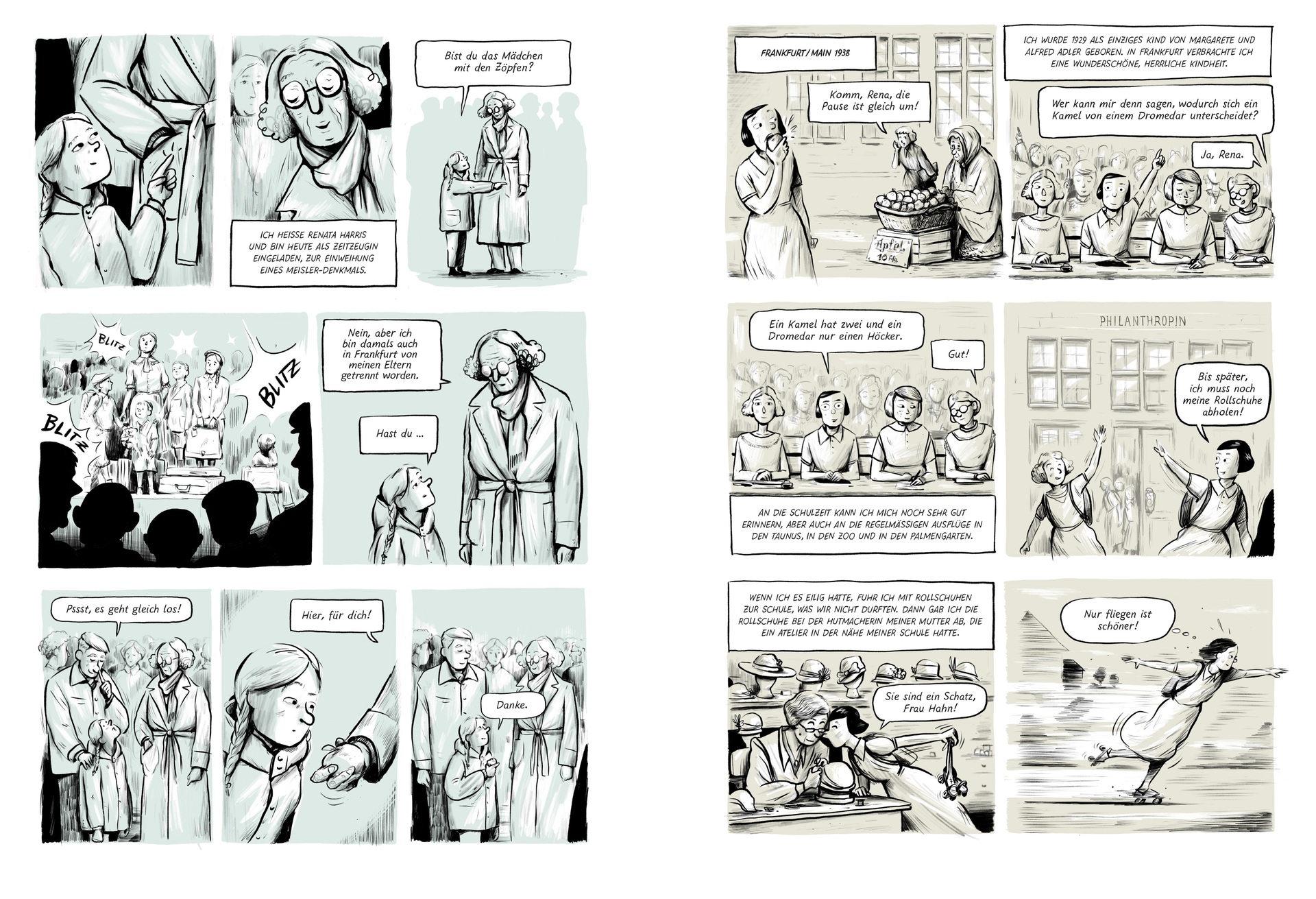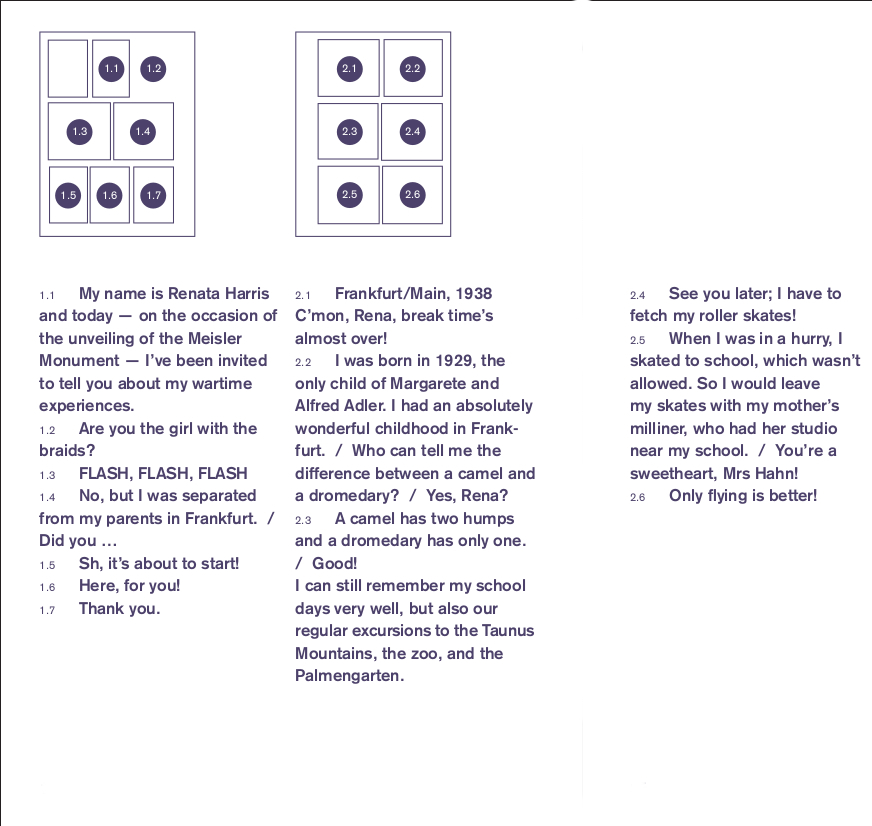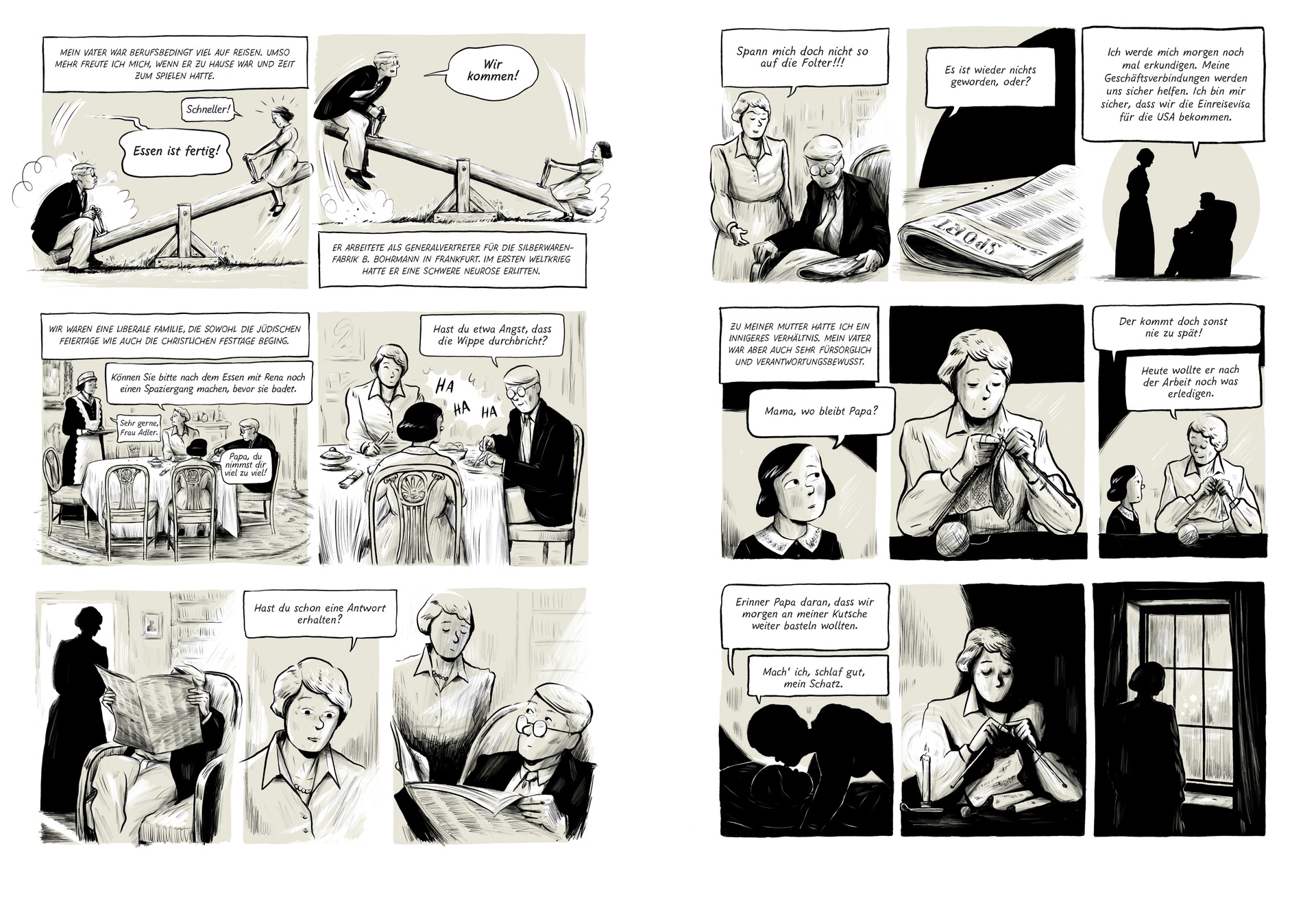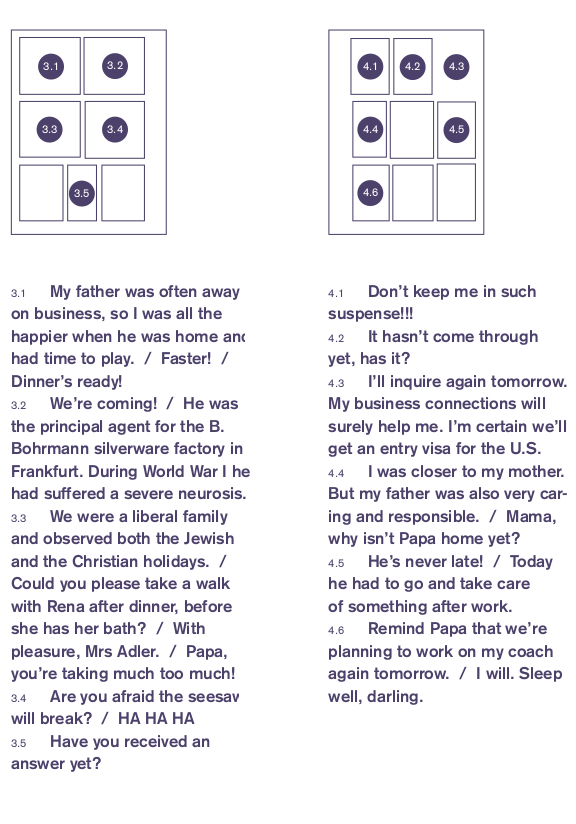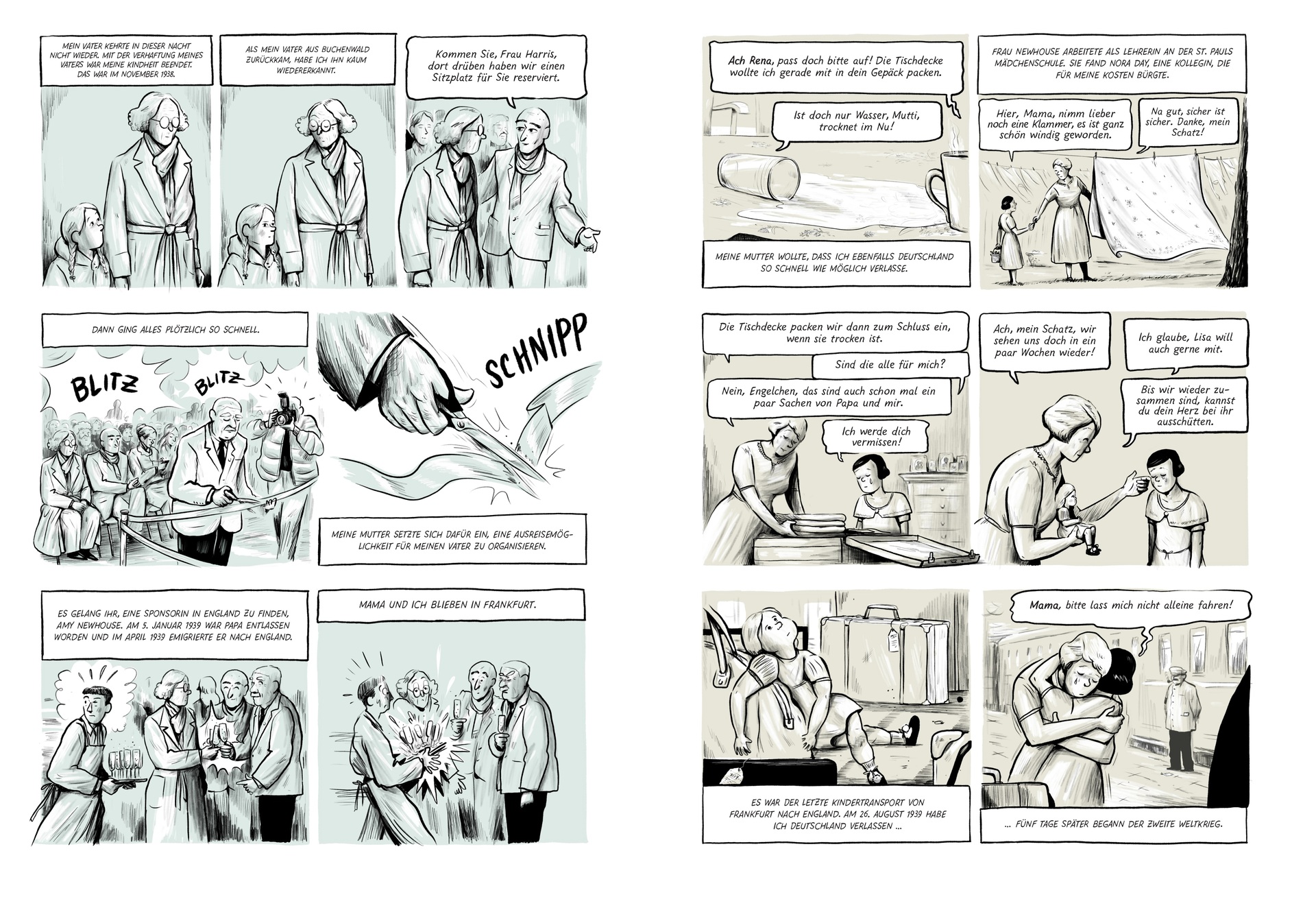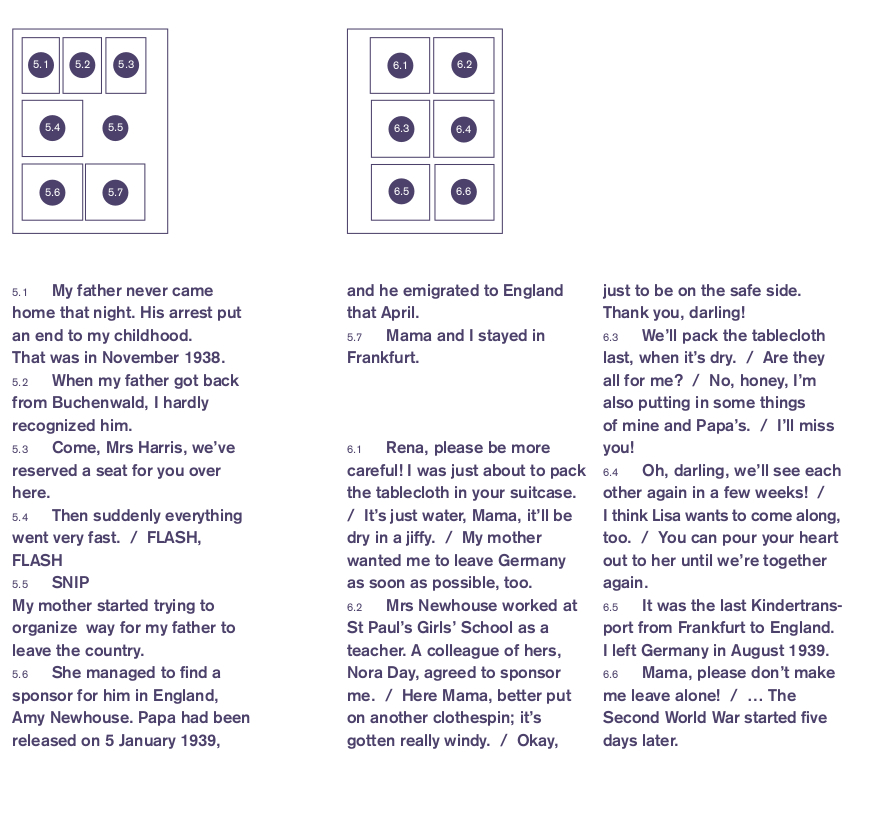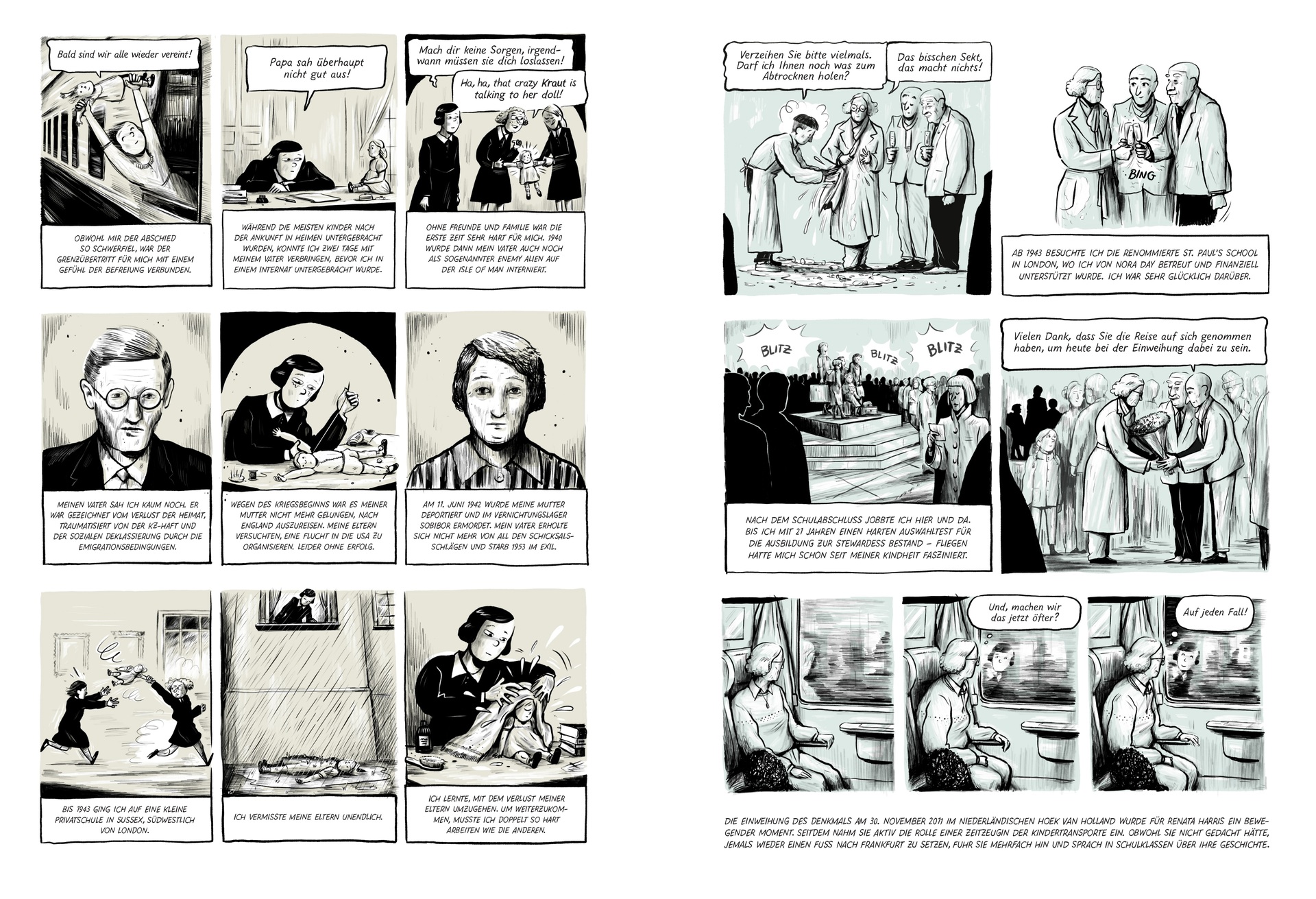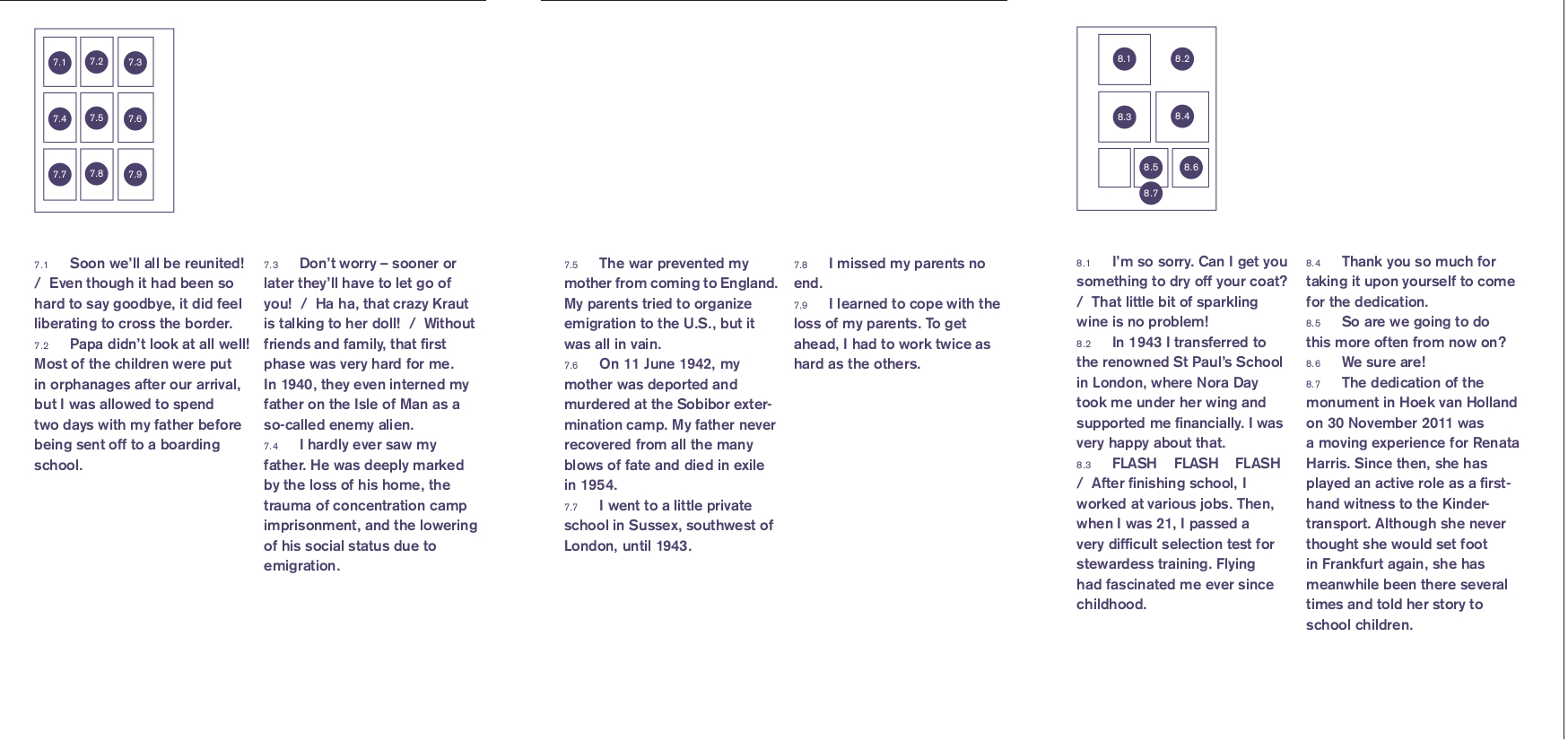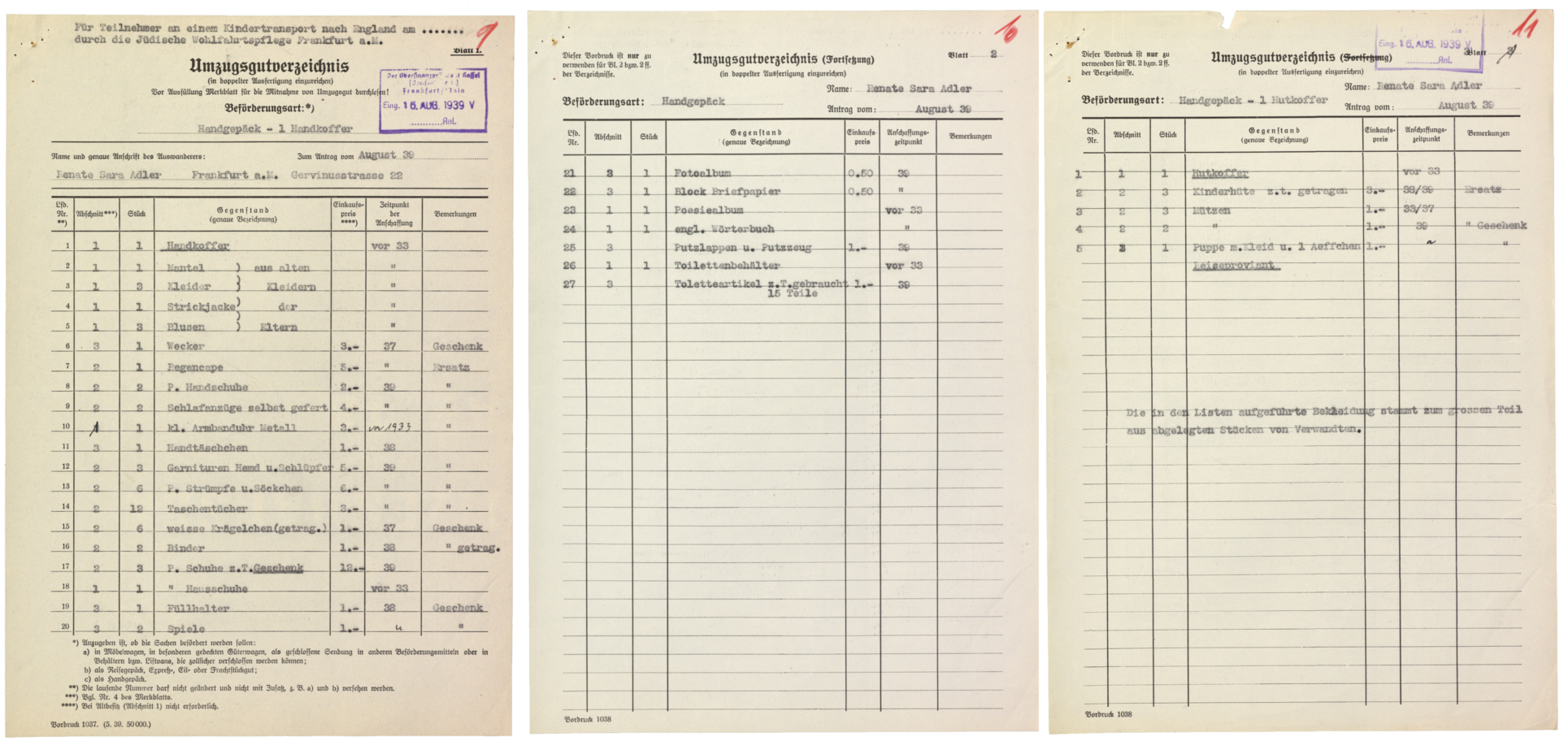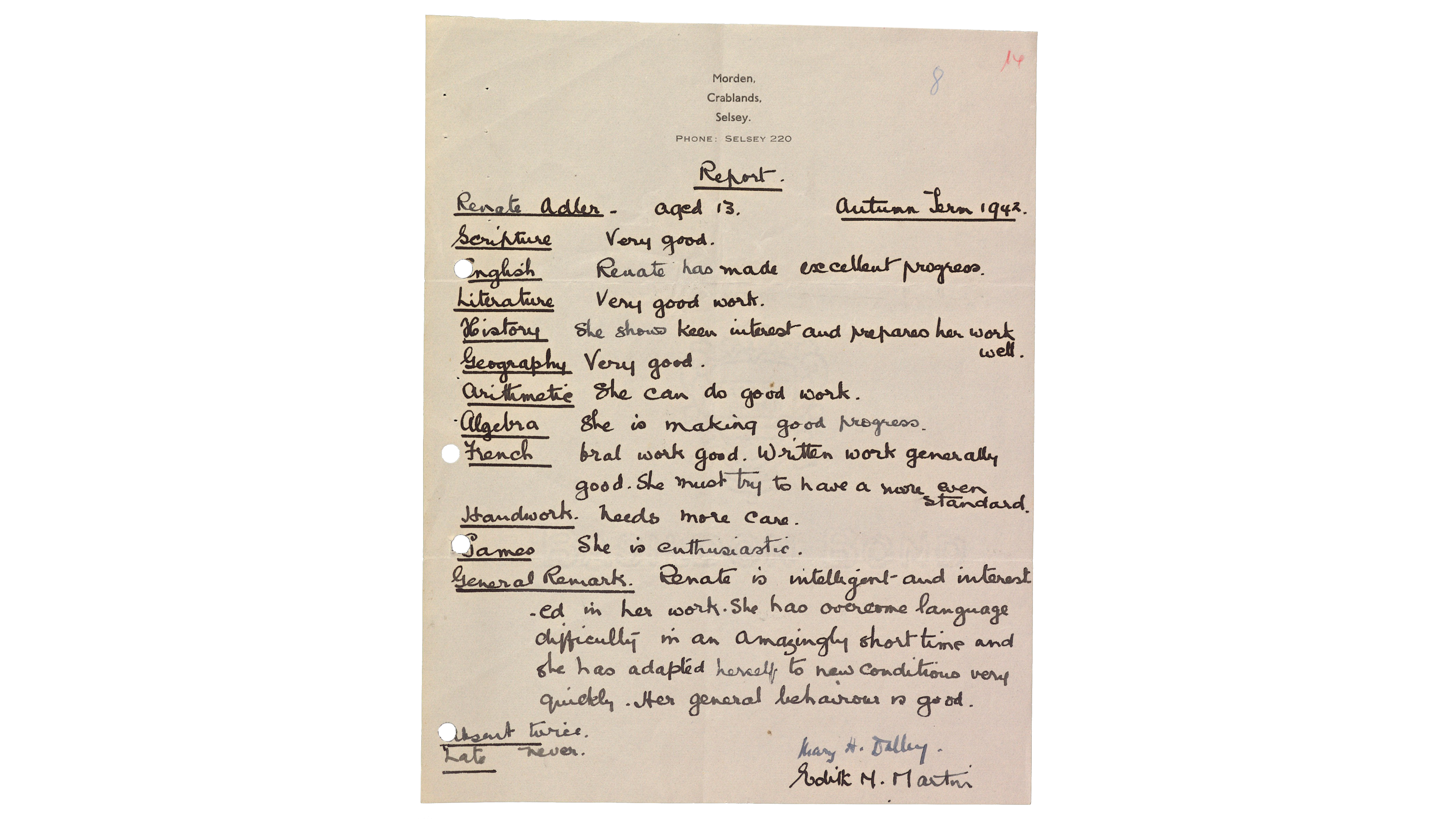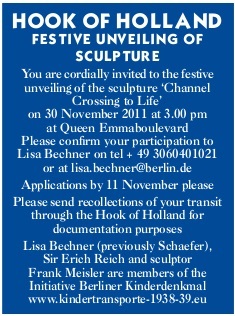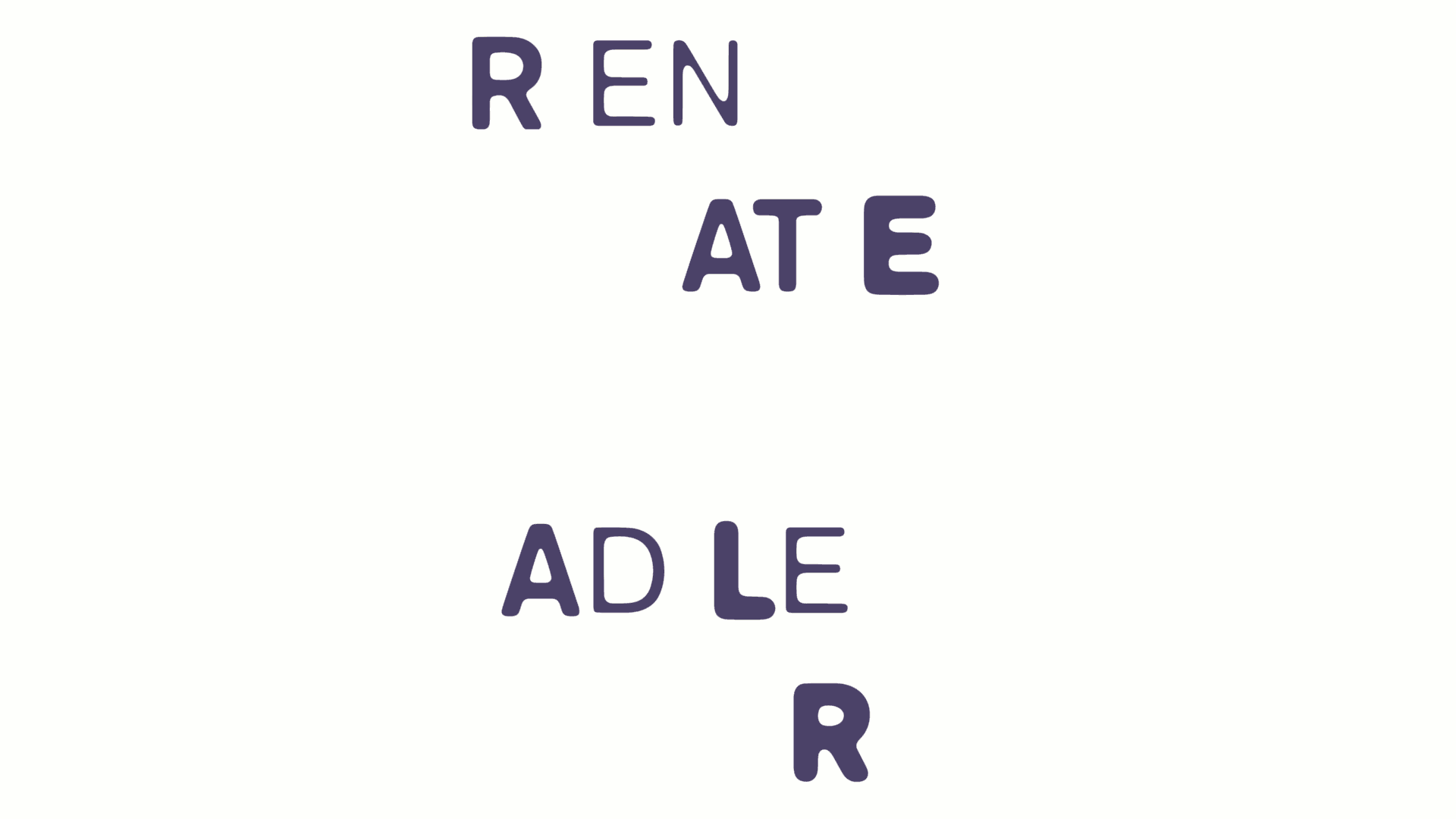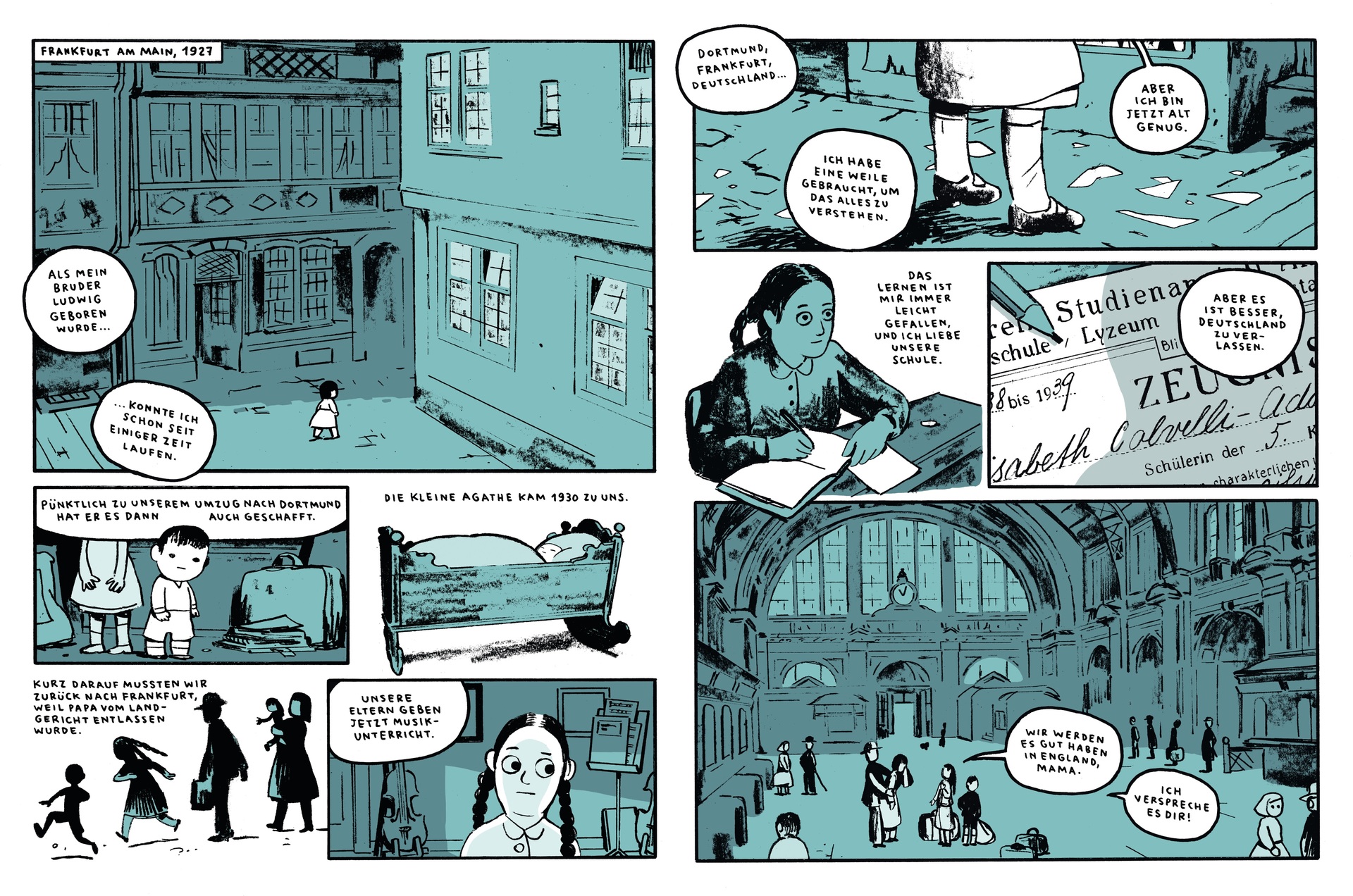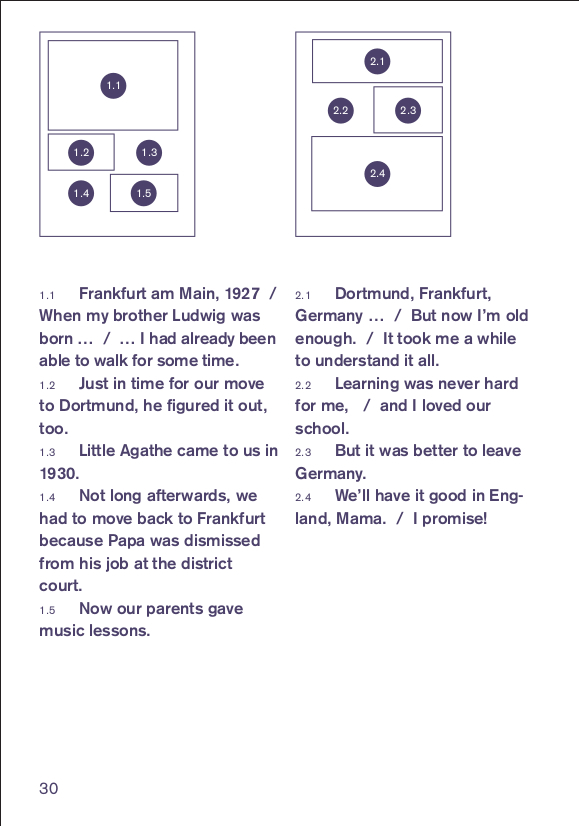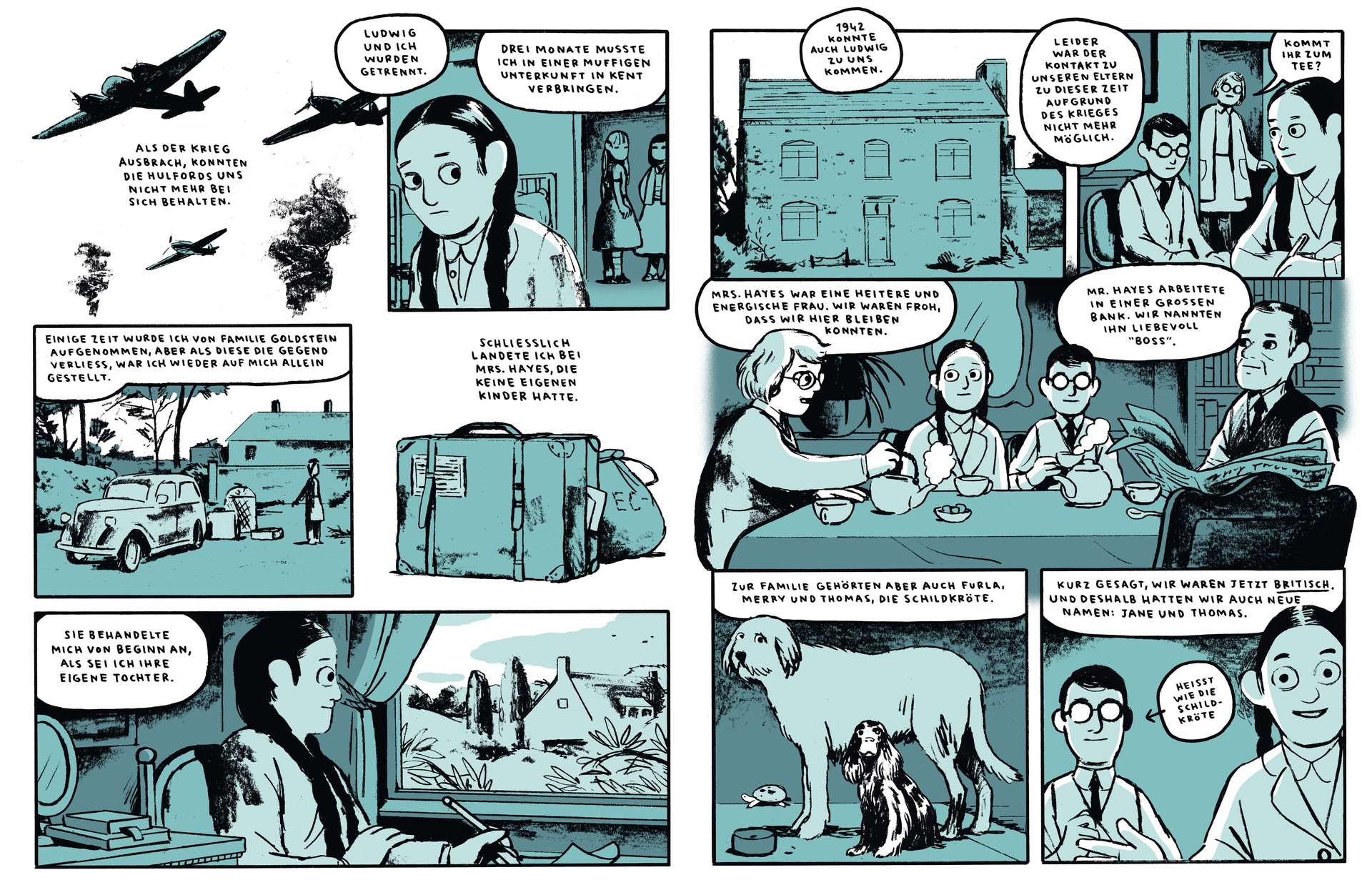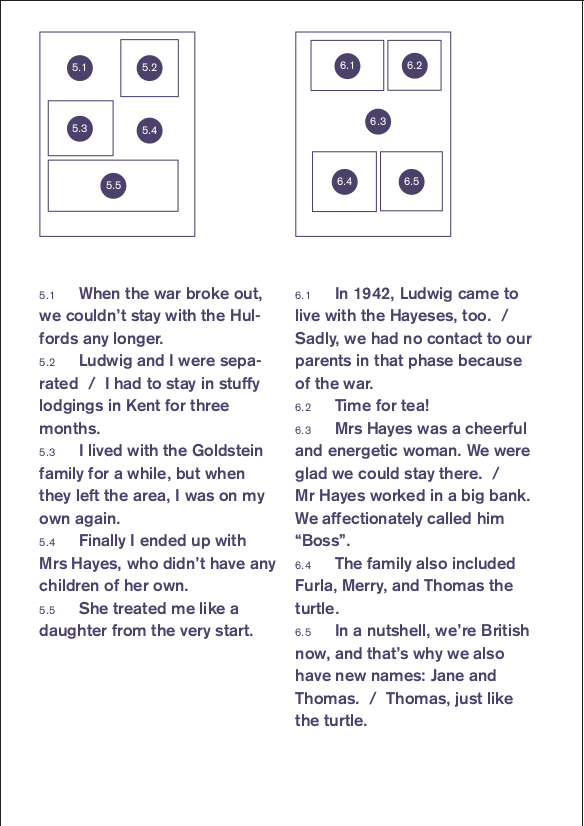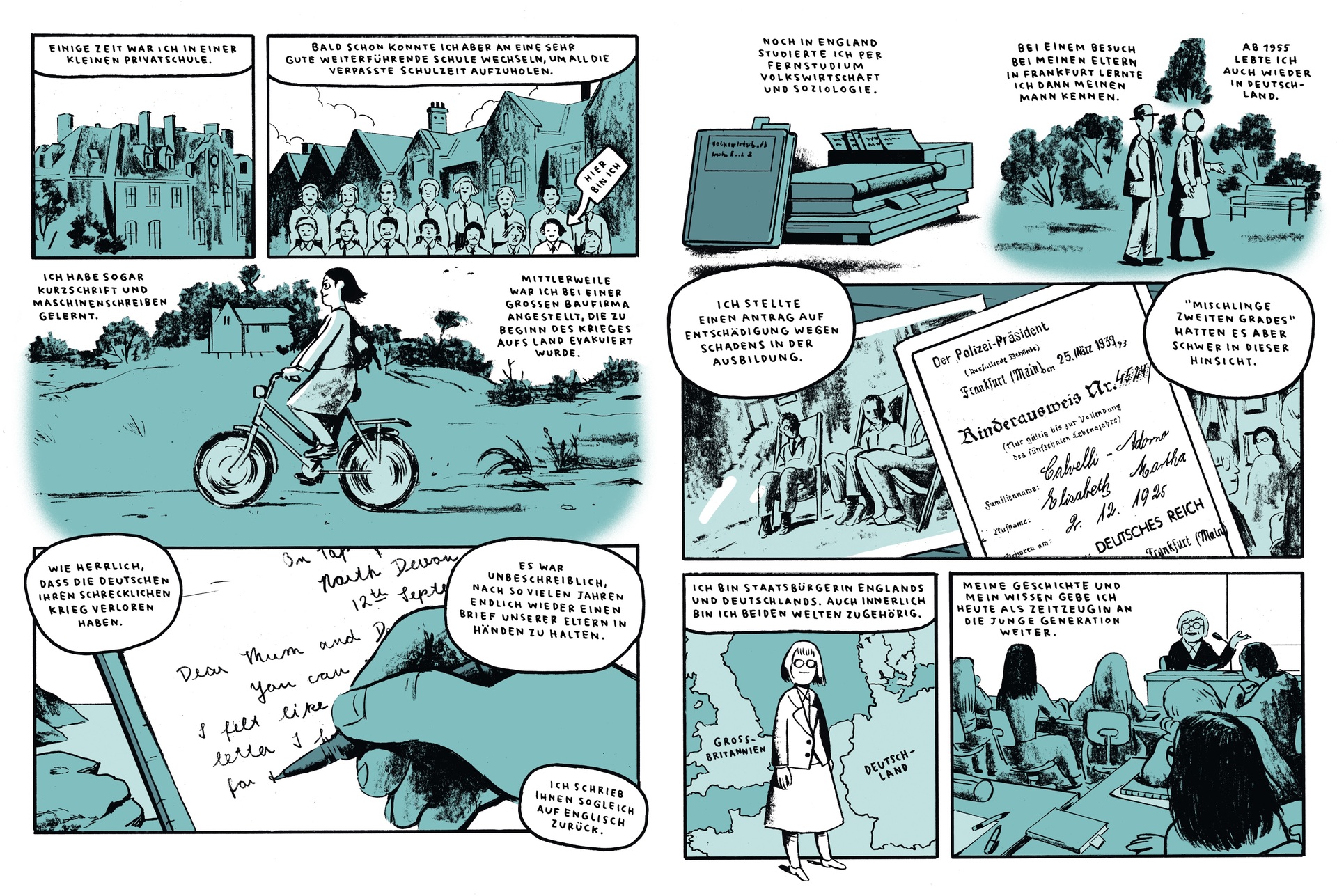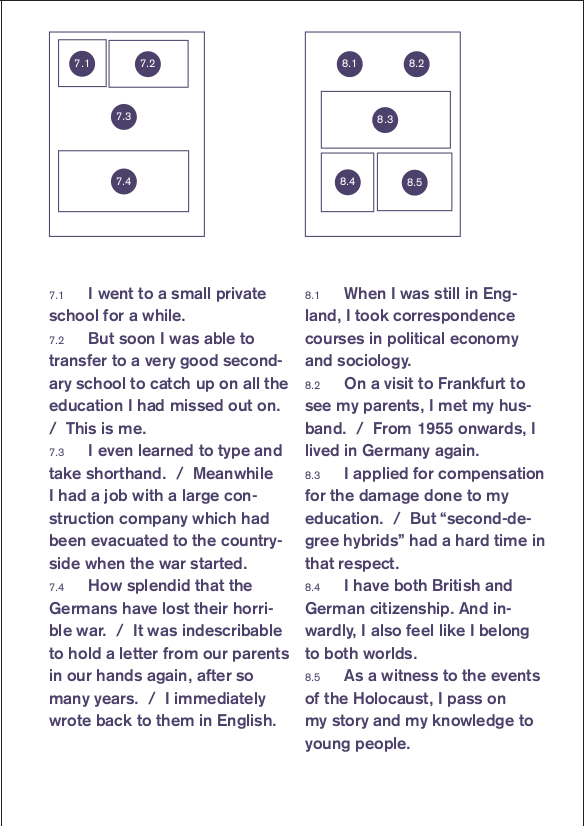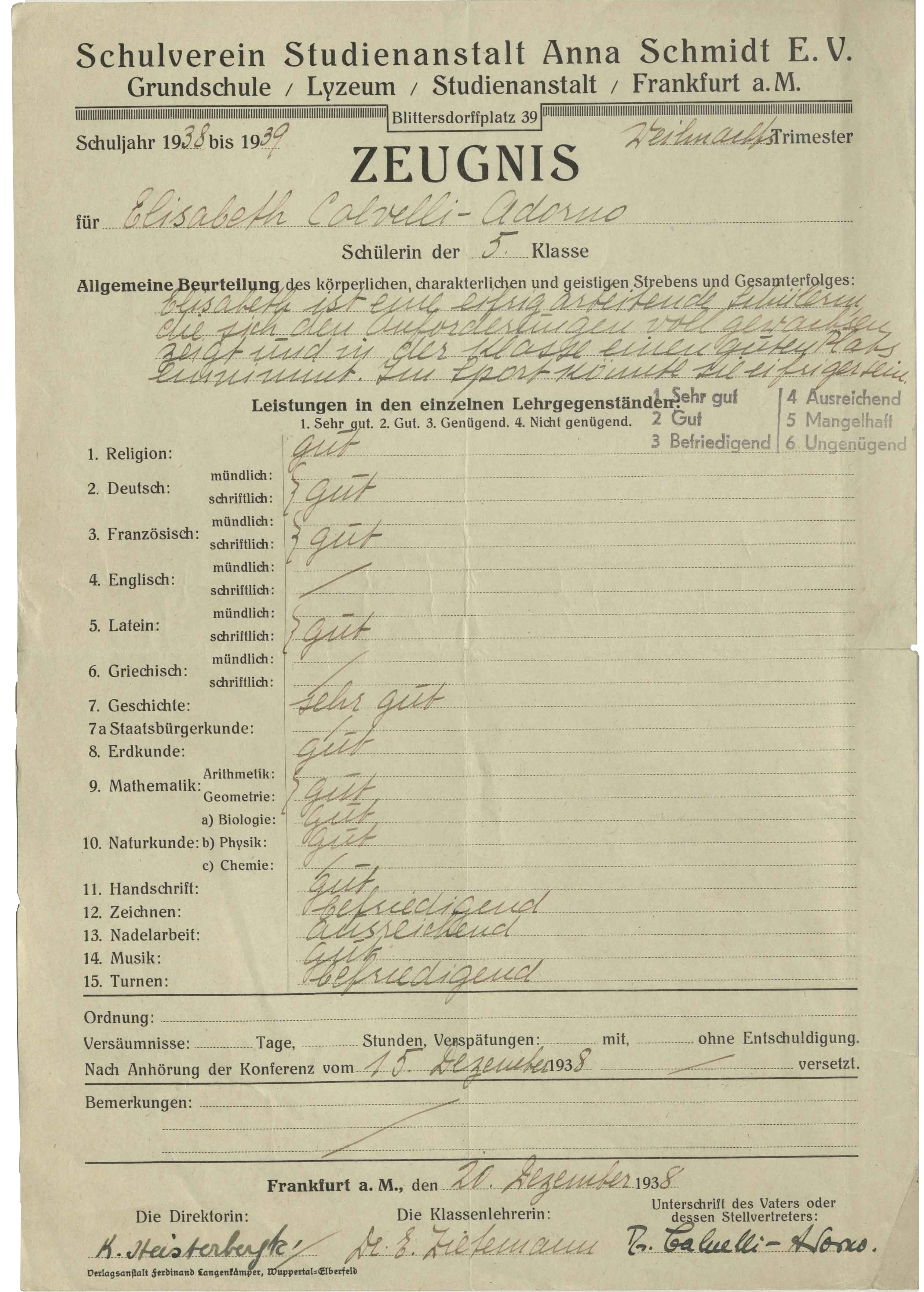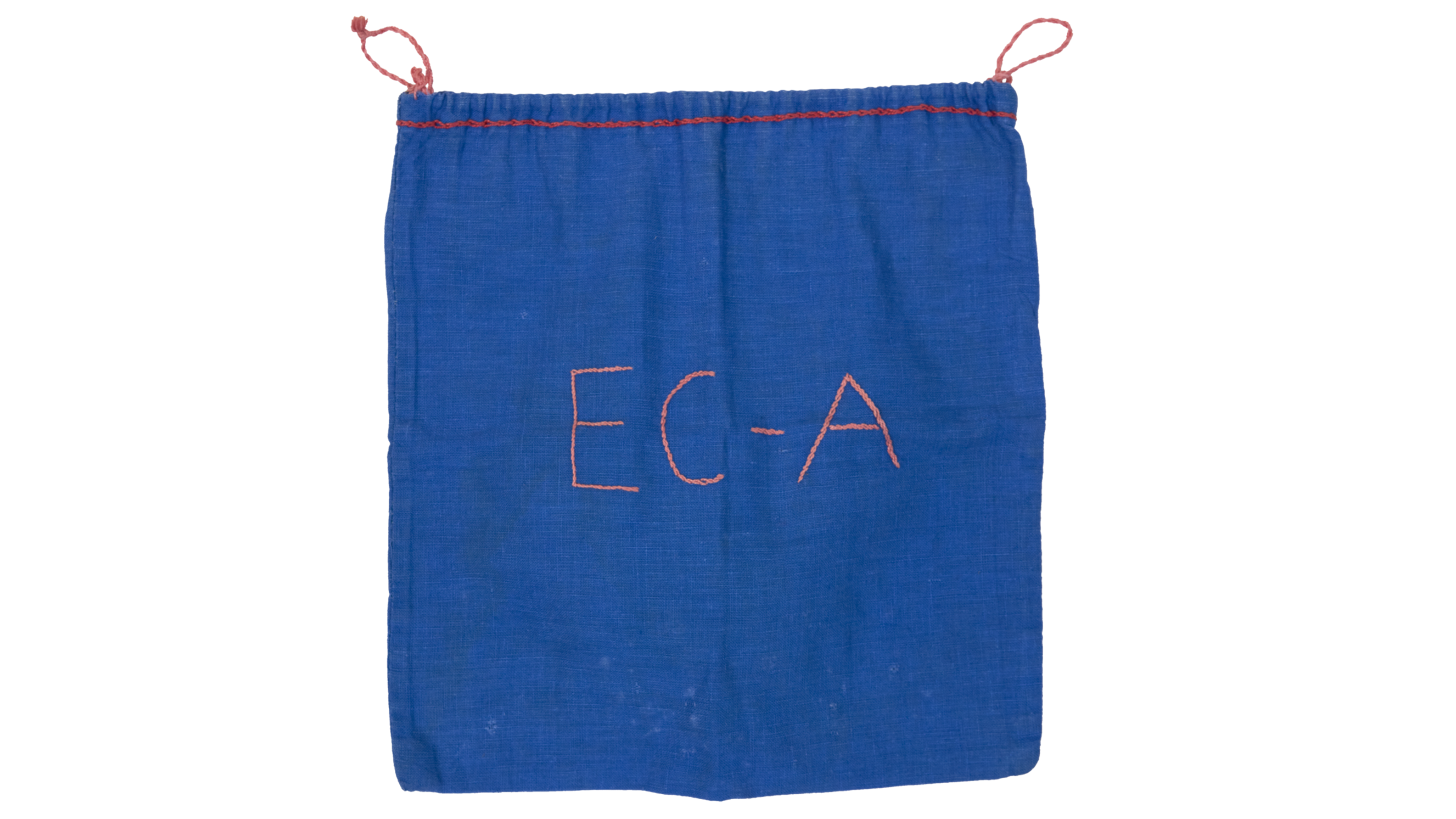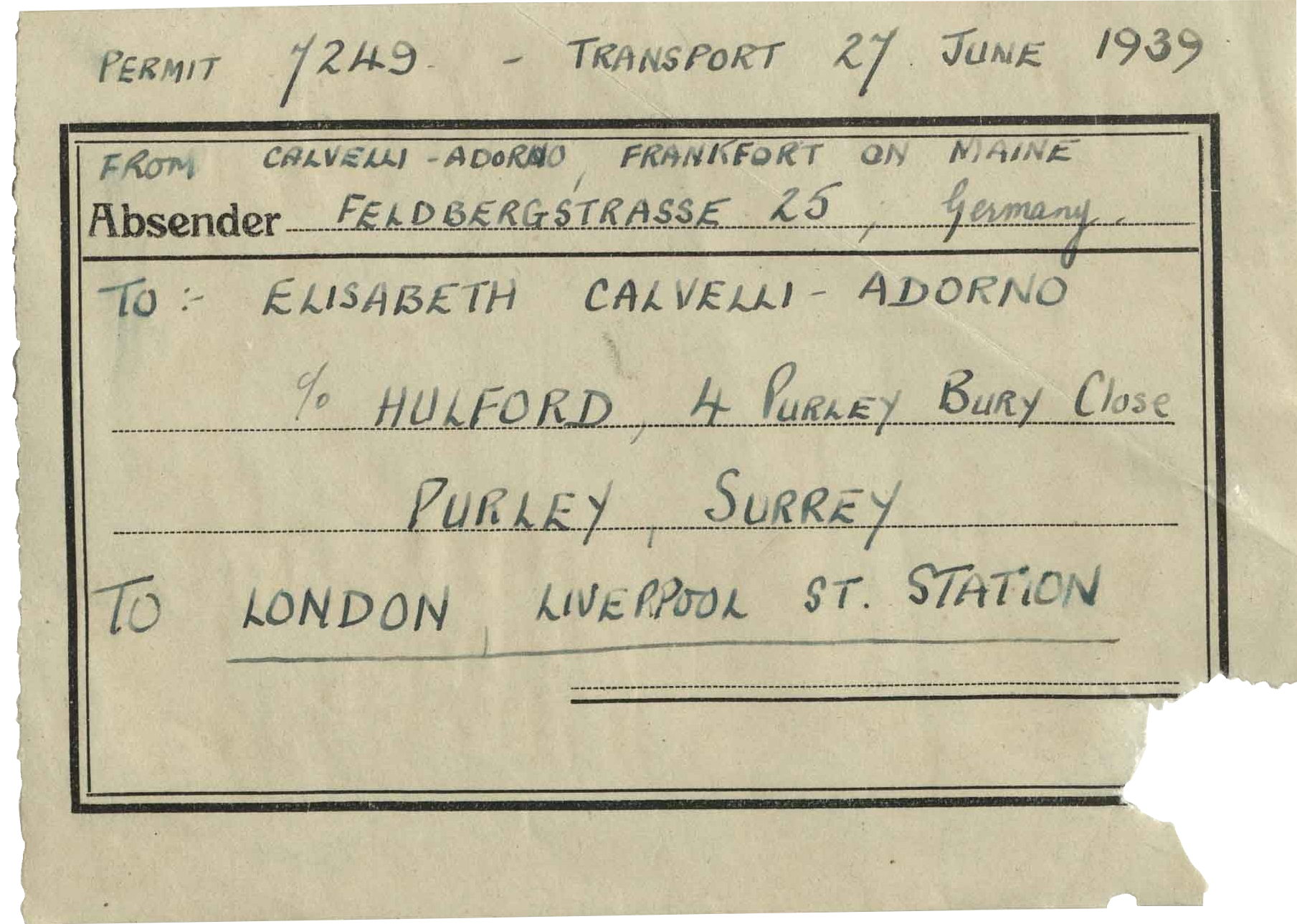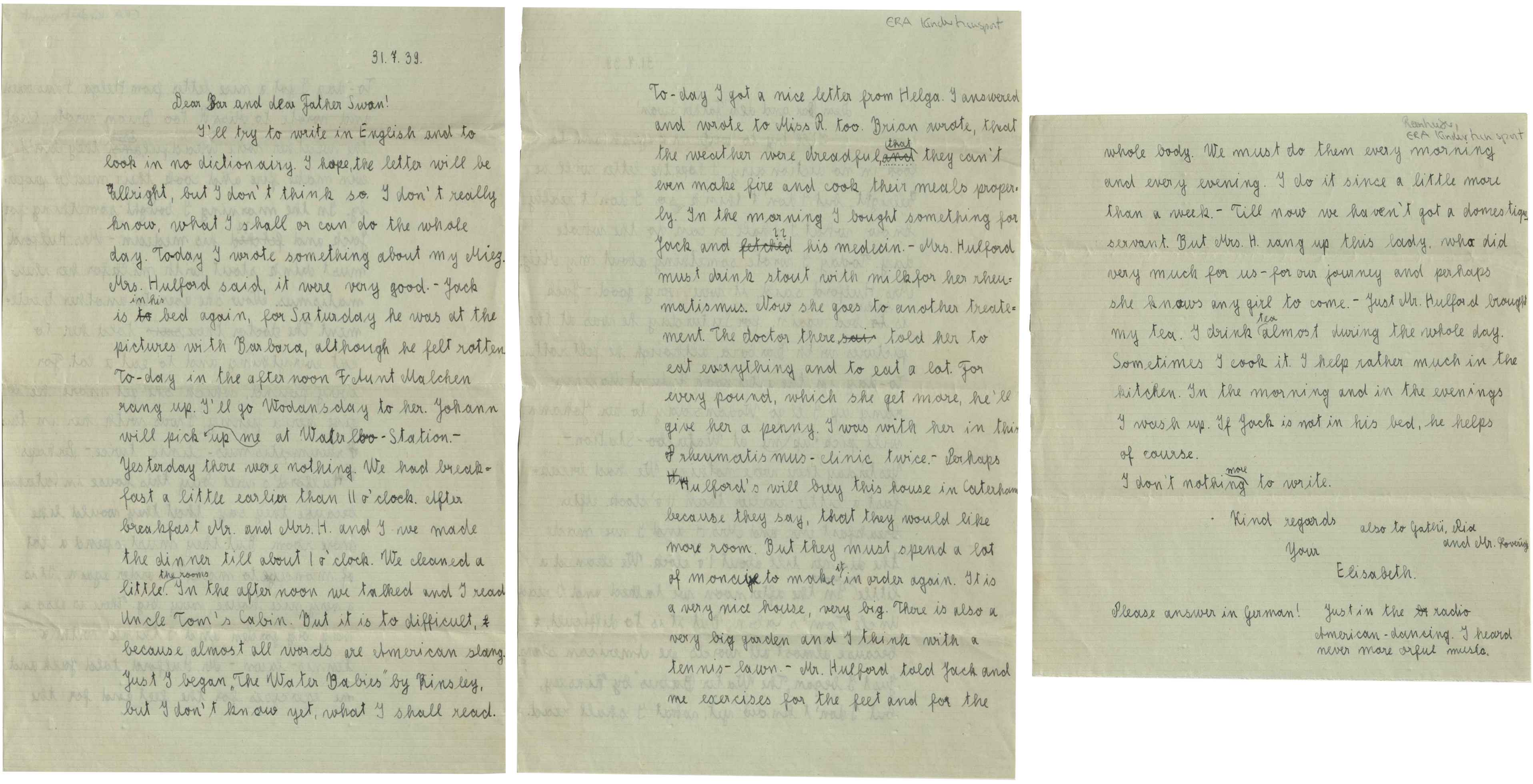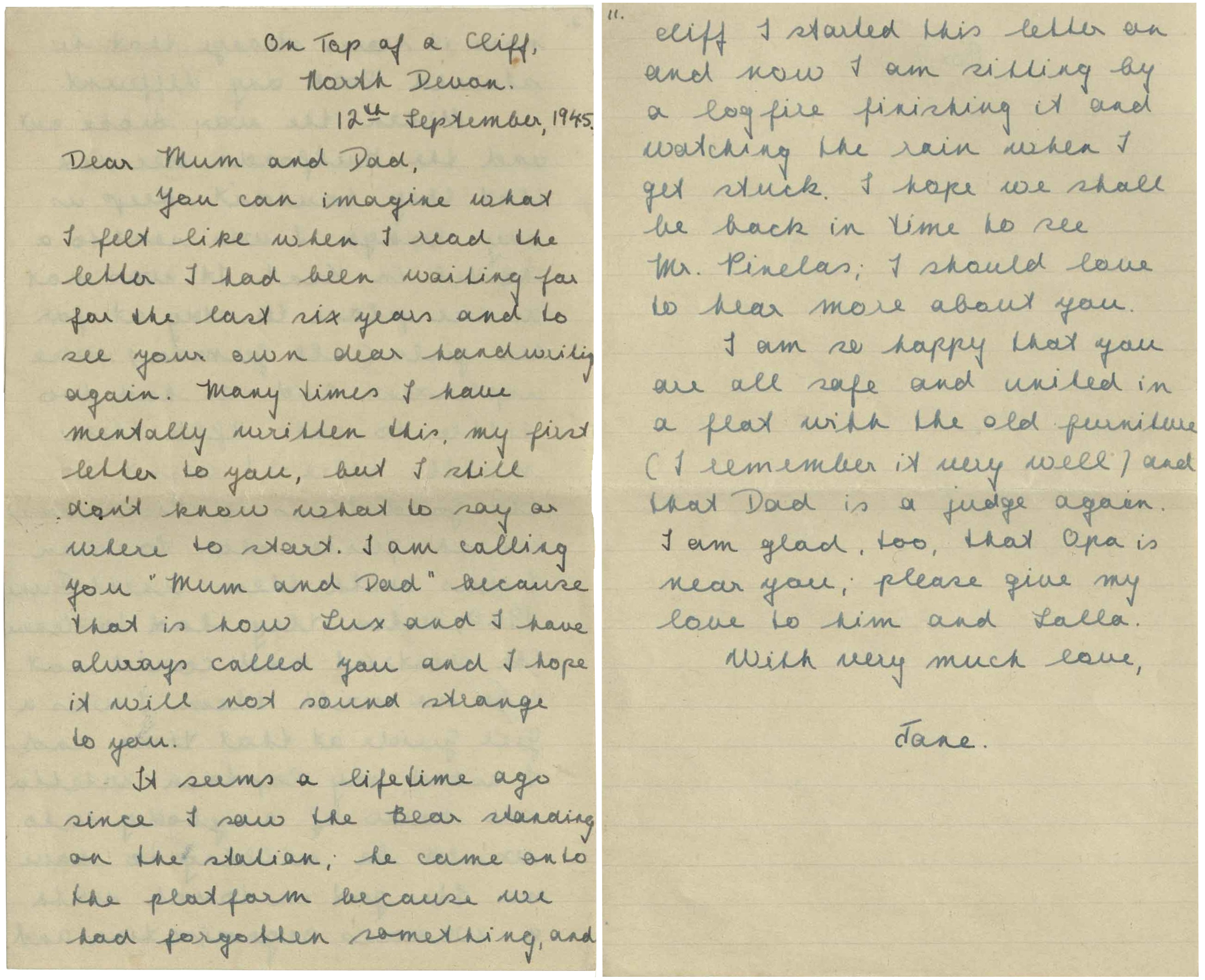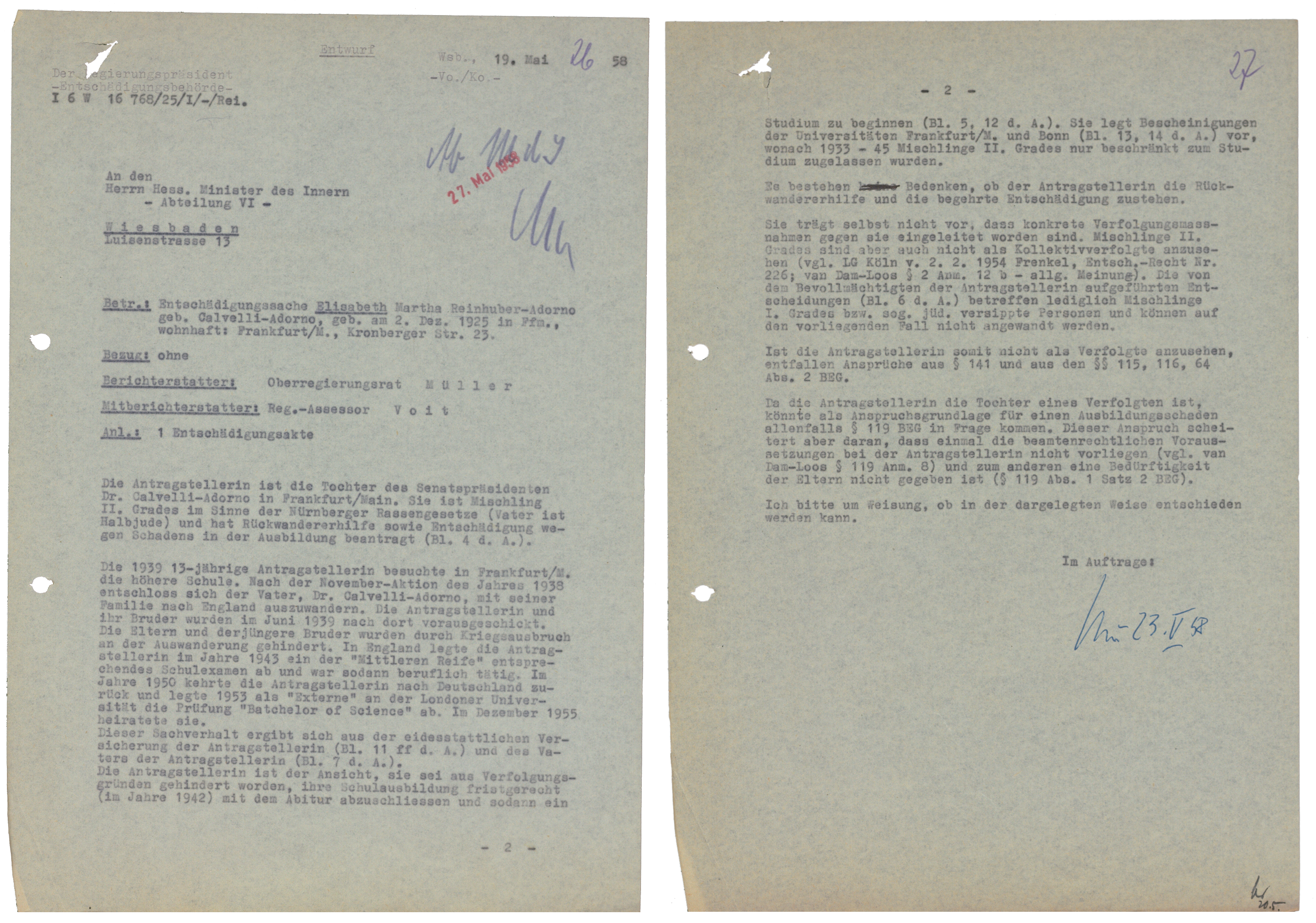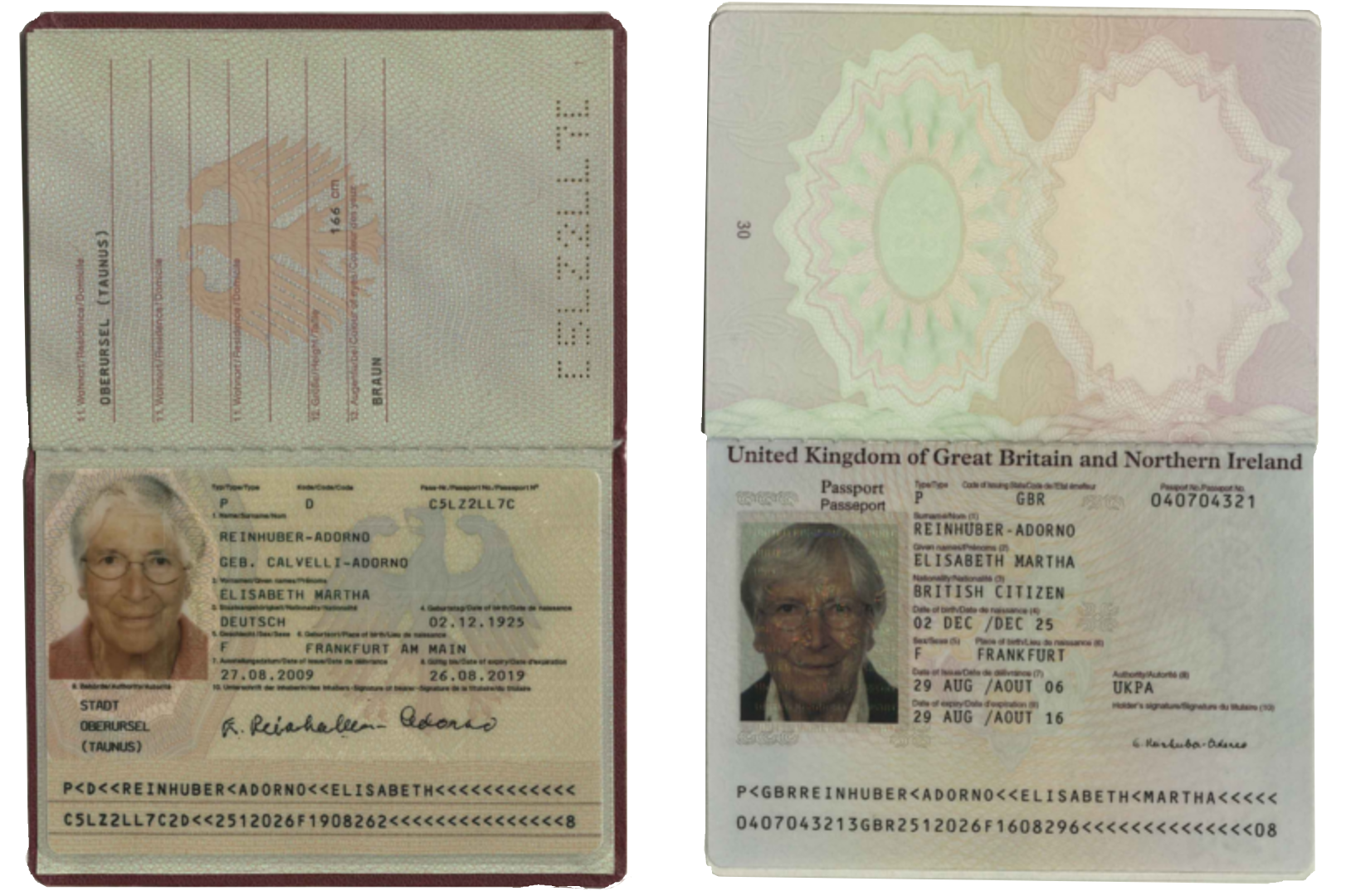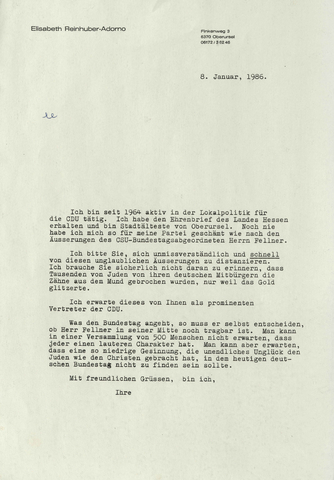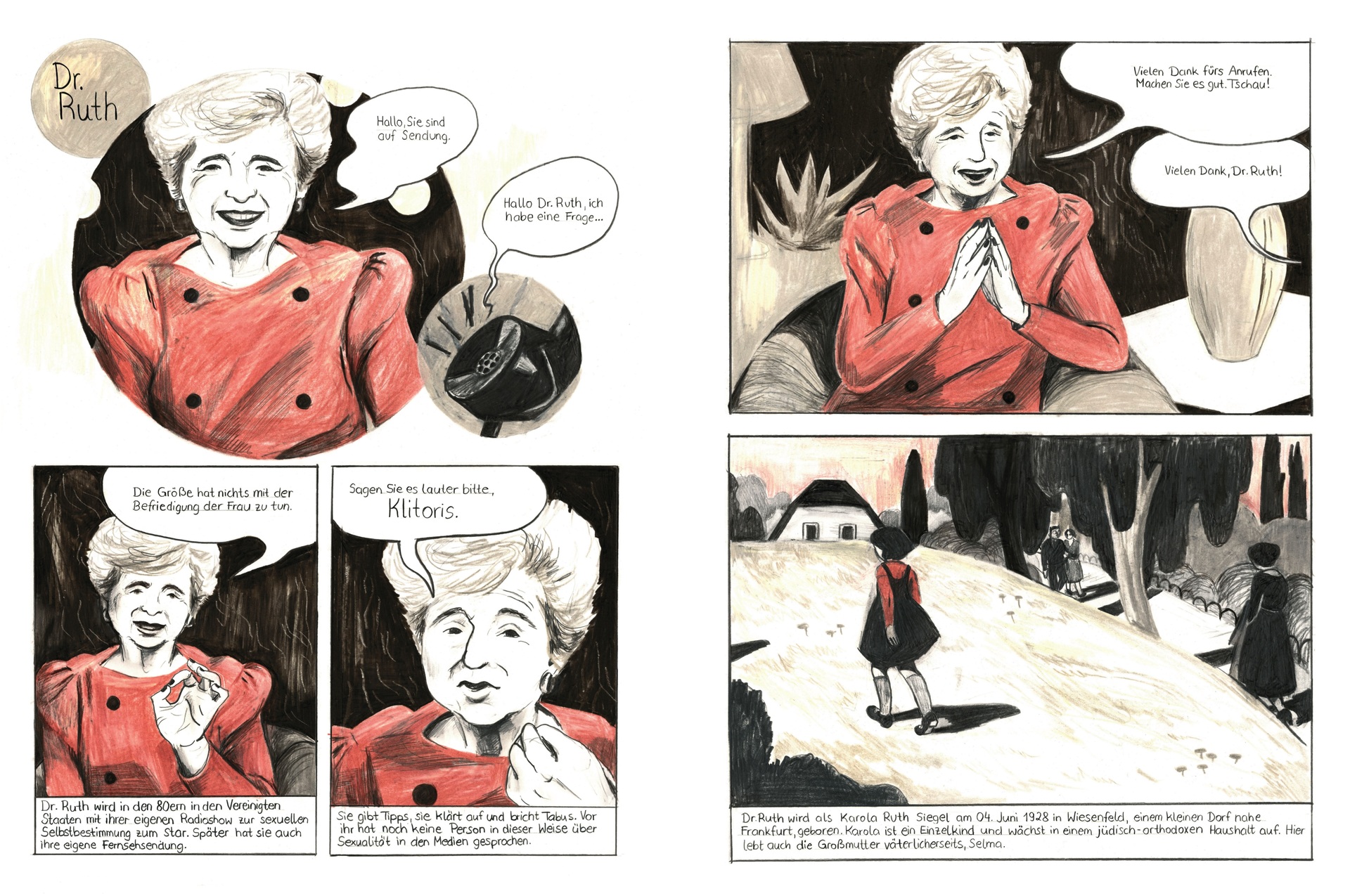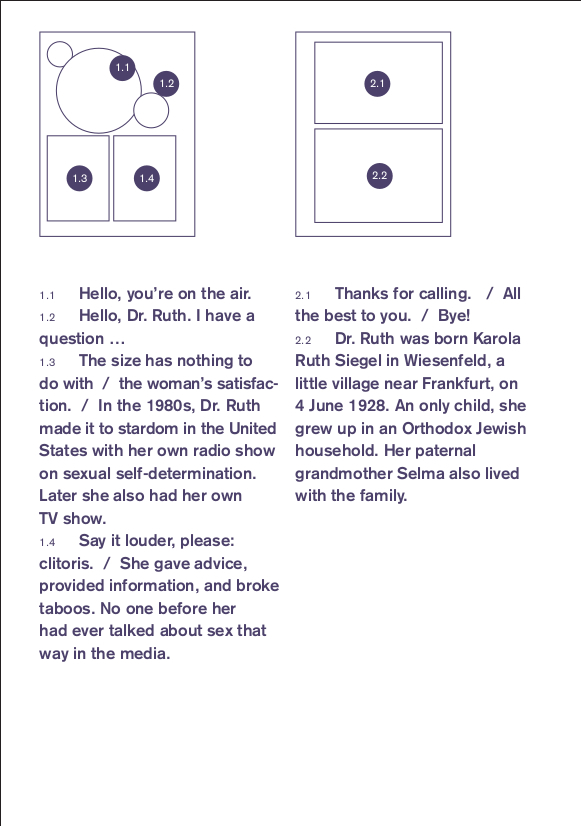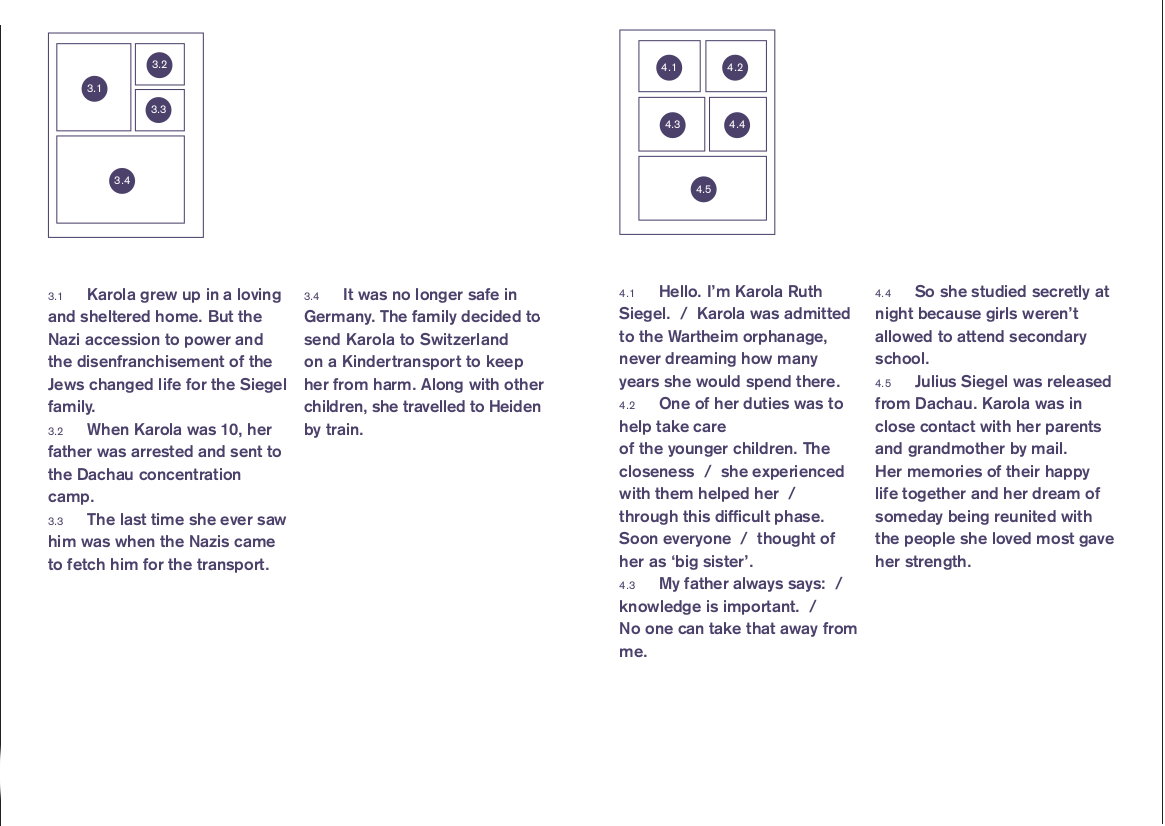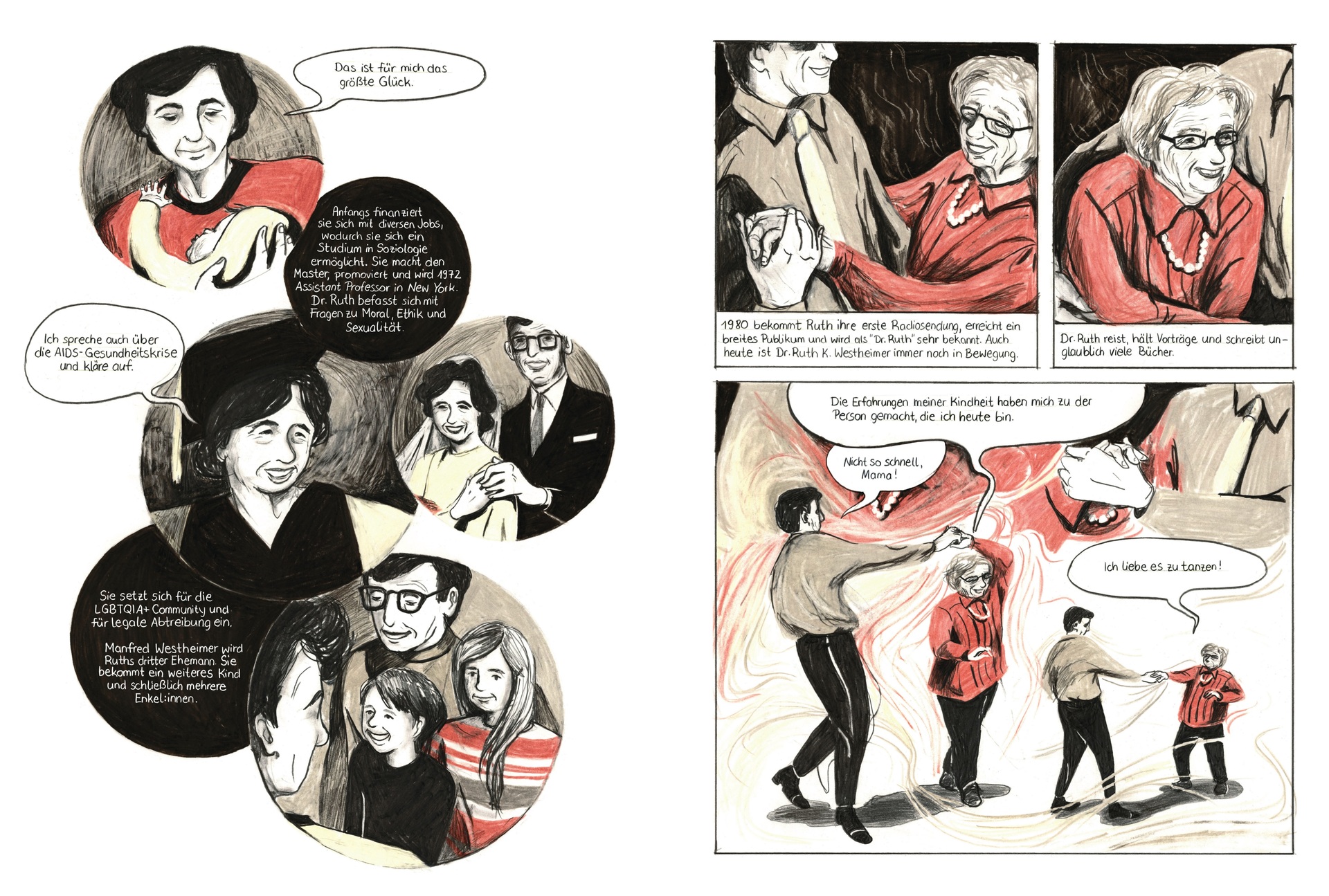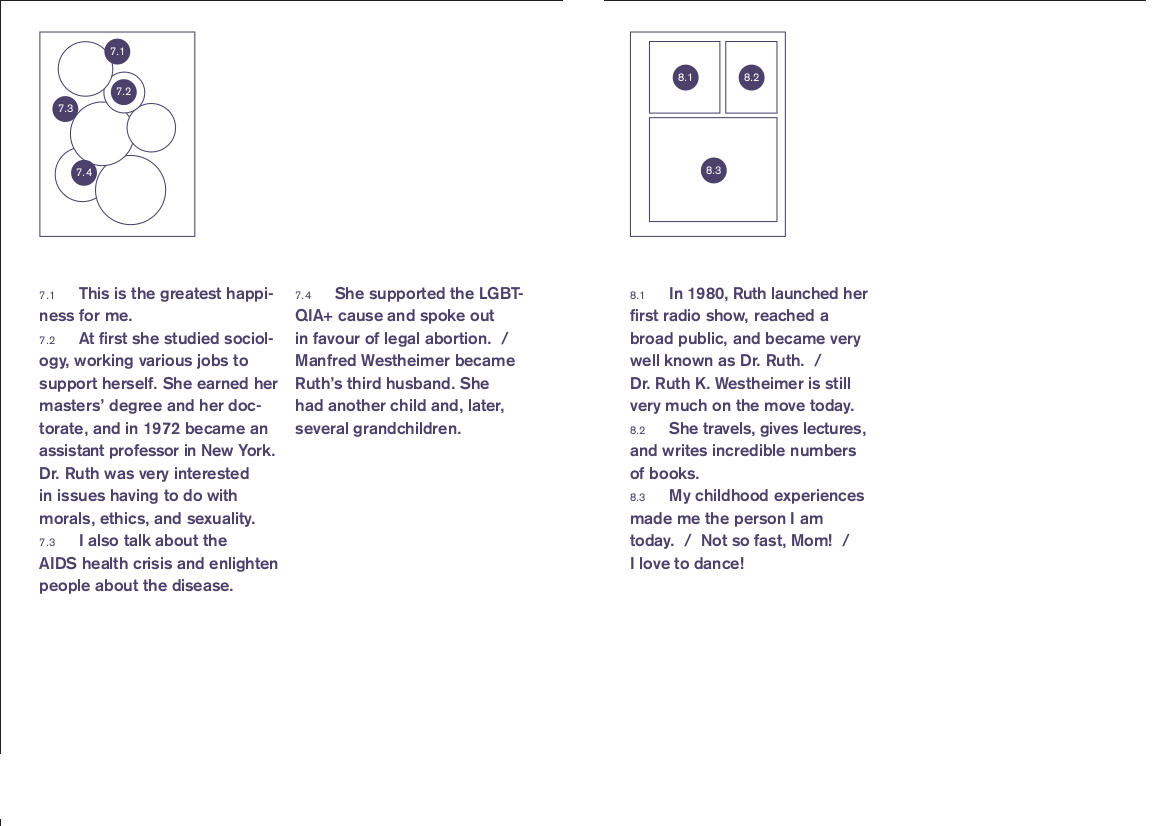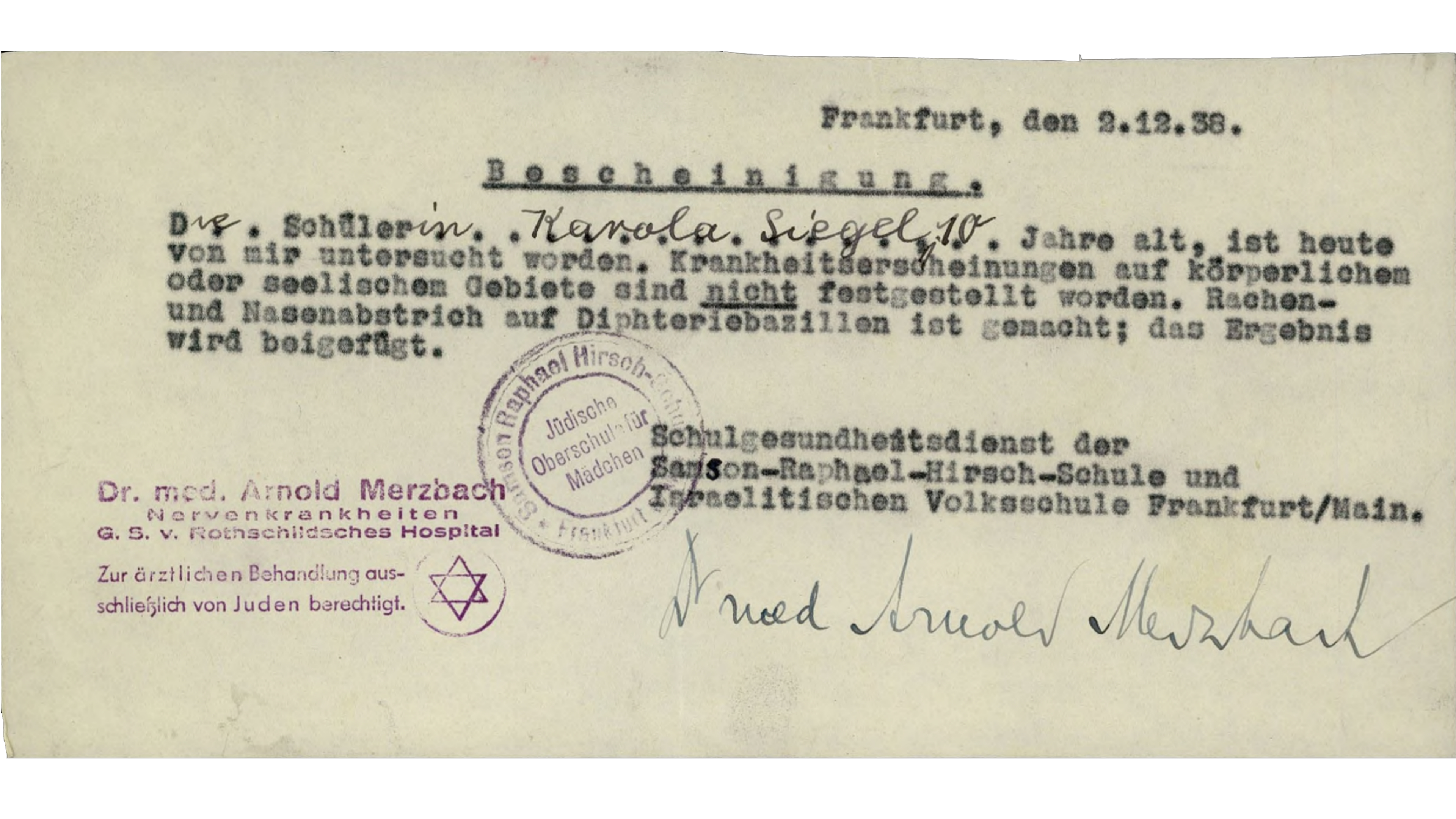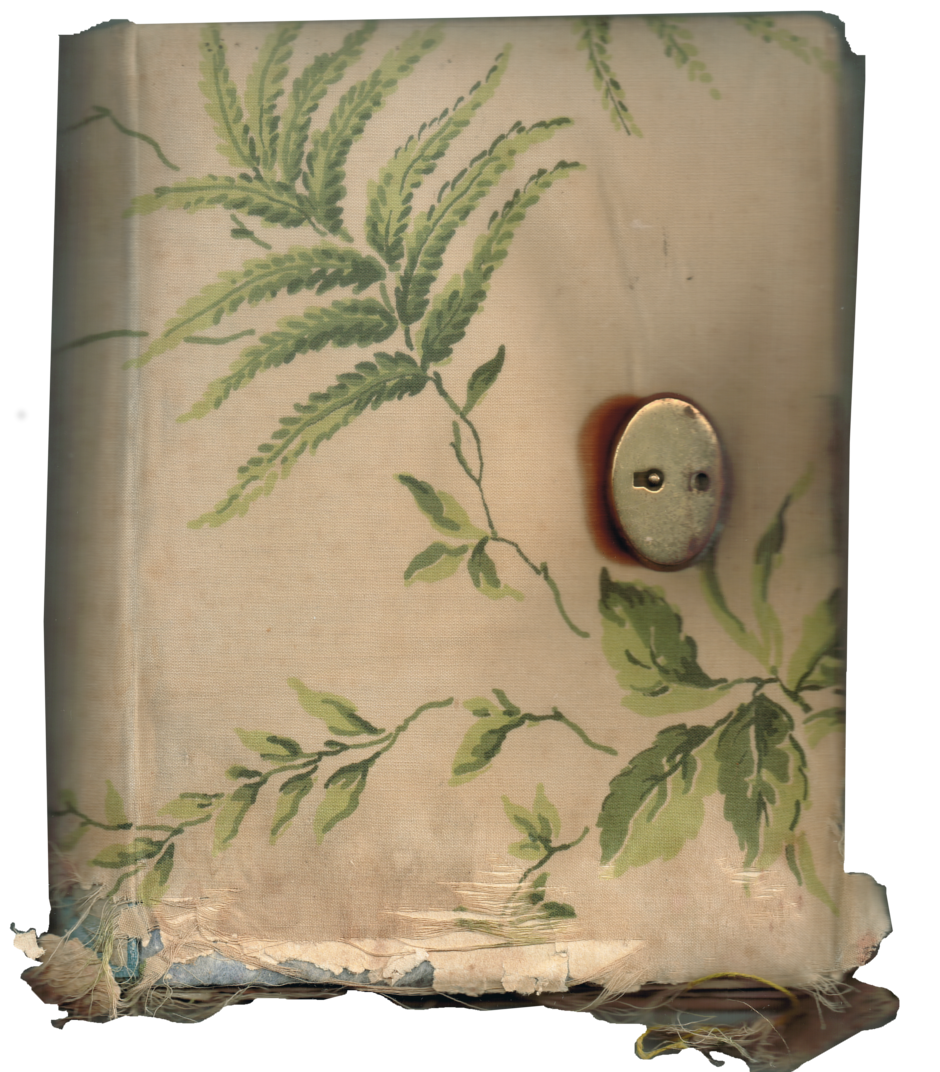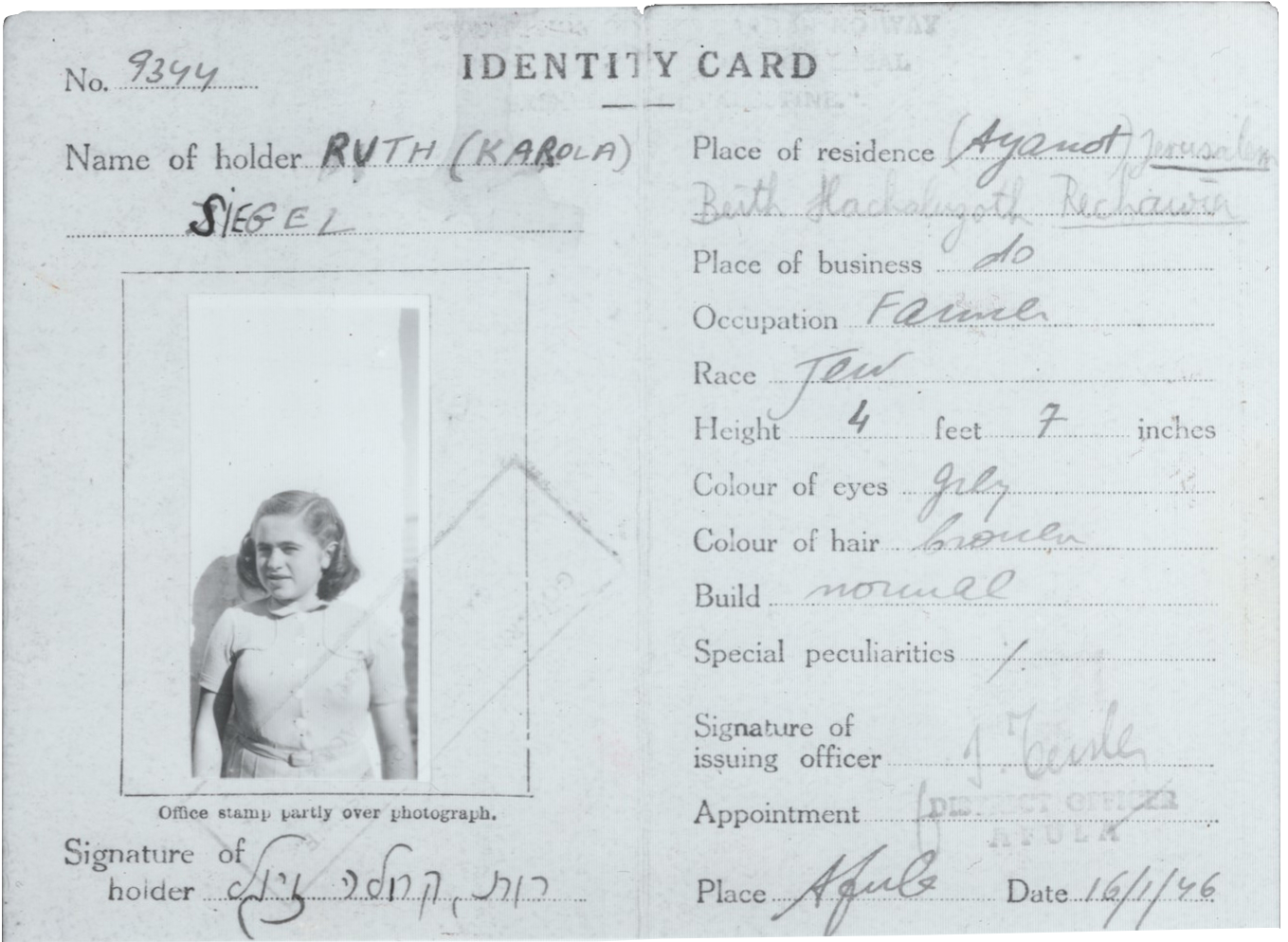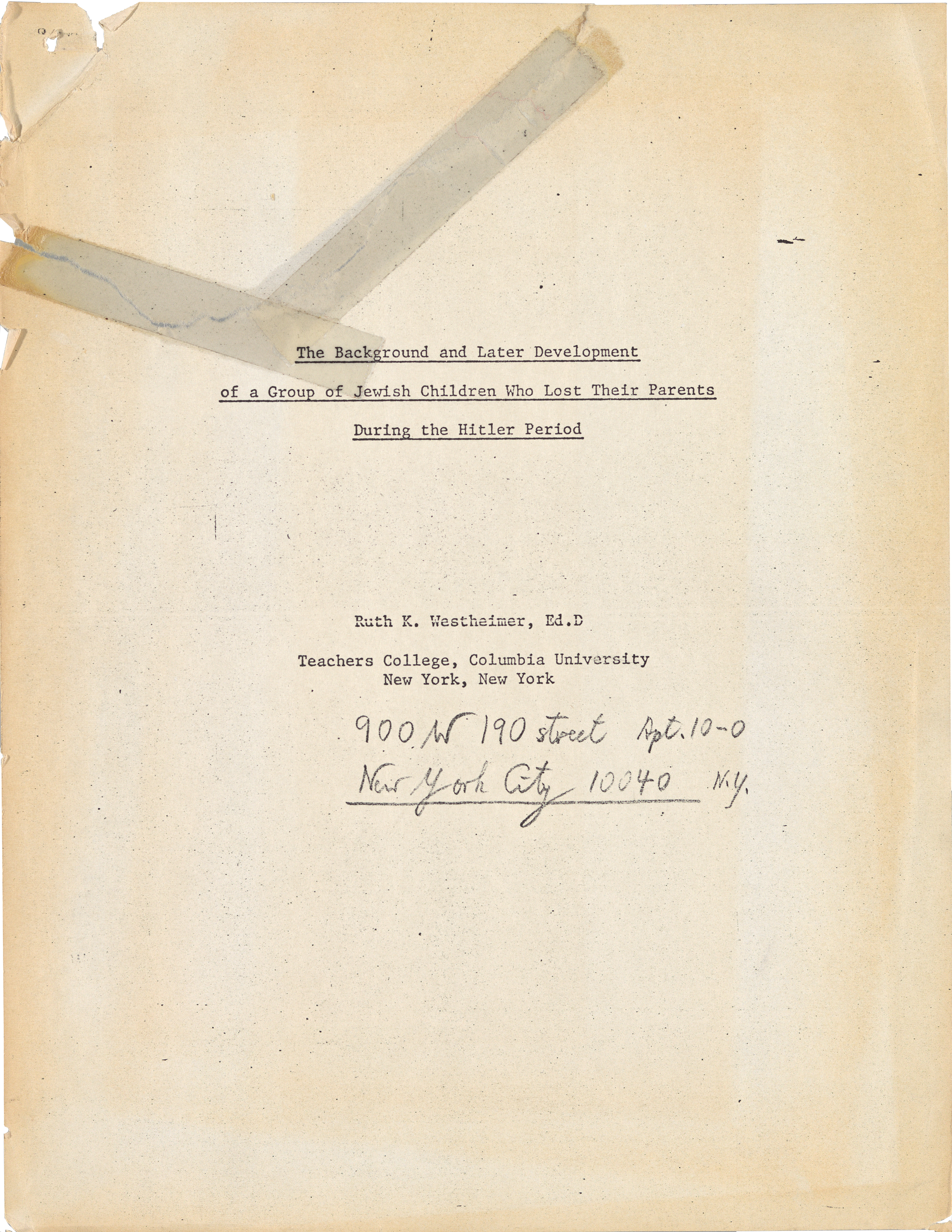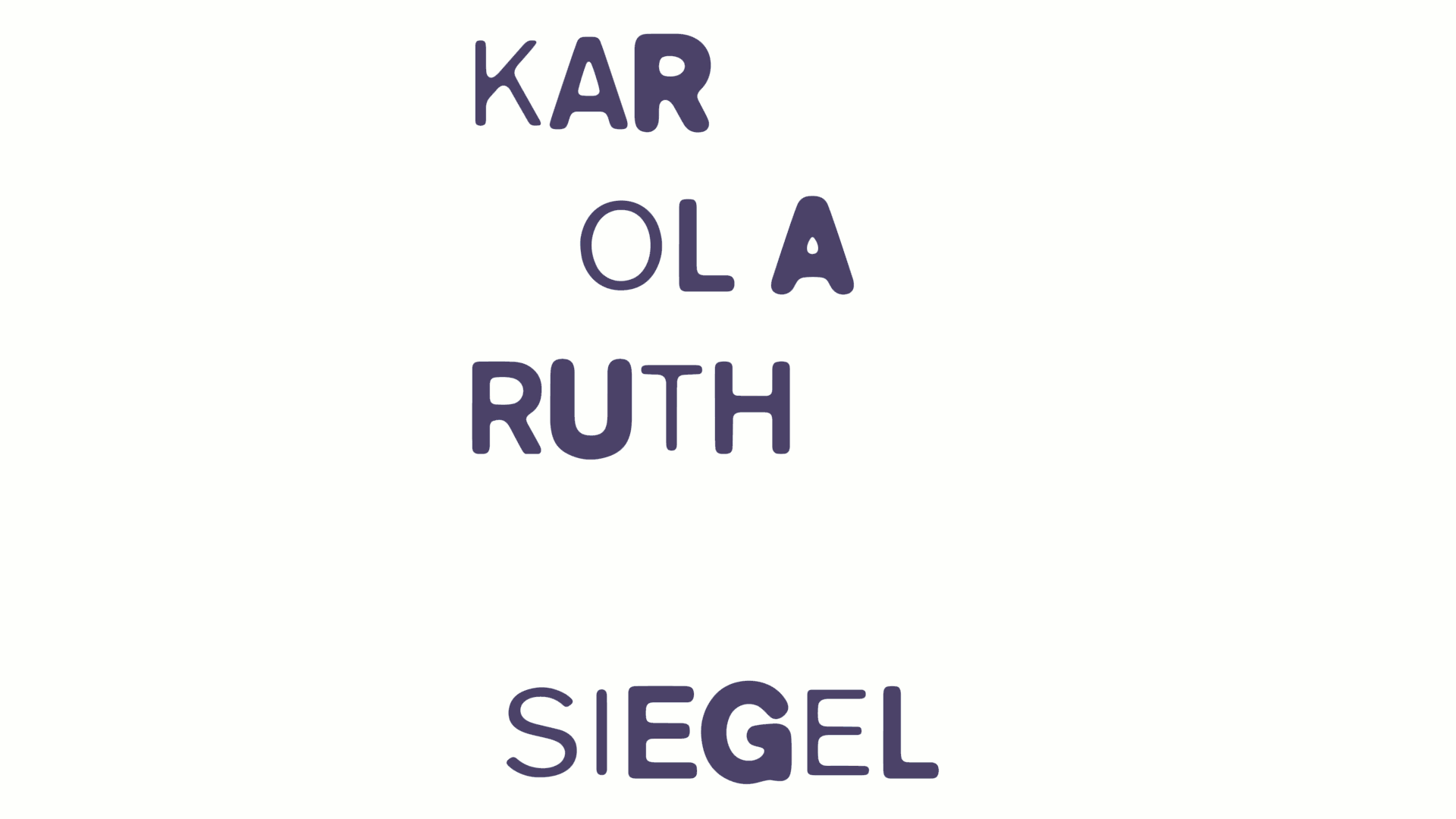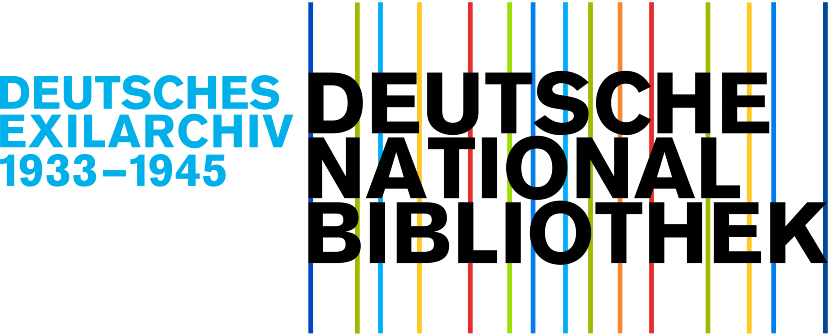Schools and Educational Institutions
Anna-Schmidt-Schule
Address: Blittersdorffplatz 39 (today: François-Mitterrand-Platz)
In 1886, the educationalist Anna Schmidt founded the private "Lyzeum Schmidt", which was intended to provide "daughters of good family" in particular with a higher education. From 1900, the institution was recognised as a higher educational institution for girls. During the National Socialist era, the principal, Käthe Heisterbergk, succeeded in keeping Jewish pupils longer than at other schools in Frankfurt - as late as 1938, a Jewish woman passed her Abitur here. During an air raid in the Second World War, the school building on Blittersdorffplatz was destroyed and after the war moved into its present building in Gärtnerweg.
The Anna Schmidt School was attended by: Elisabeth Calvelli-Adorno
Holzhausenschule (Holzhausen School)
Address: Bremer Straße 25
The Holzhausenschule (Holzhausen School) was opened in 1929 as a "simultaneous citizen school for boys and girls" on the corner of Eschersheimer Landstraße and Bremer Straße. In 1935, the school management set up two entrance classes in which only Jewish children went - they were to be separated from the other children. A total of 87 children went to these classes.
Manfred and Herbert Rosenthal, Felix Weil, Lisa Moos and Ruth Wellhöfer attended the Holzhausen School.
Israelitische Volksschule (Jewish Elementary School)
Address: Röderbergweg 29
The Israelitische Volksschule (Jewish Elementary School) was founded in 1882 and was affiliated with the neo-orthodox Israelite Religious Society. The school was aimed at poorer families, and no or only small school fees had to be paid. After its founding, the number of pupils increased rapidly, and in 1891 the school was able to move into a new building at Röderbergweg 29. There were numerous Jewish welfare and social institutions in the neighbourhood. After the November pogroms in 1938, the school building was needed for Jewish welfare, and the primary school first moved into the building of the Samson-Raphael-Hirsch School and then, after its closure, into the Philanthropin. It was able to continue teaching there until June 1942.
The Israelitische Volksschule was attended by: Leopold Bergmann, Lisa Baer, Mina and Hedy Schächter, Werner Dreifuss, Nora Bergmann, Cilly and Jutta Levitus, Ruth and Miriam Schames, Esther Edith Kleinberger, Manfred Hess, Hans and Ruth Selig
Israelitische Waisenanstalt (Jewish Orphanage)
Address: Röderbergweg 87
The Jewish Orphanage was founded in 1874, financed by Jewish social and welfare institutions. While in the beginning only orphans from Frankfurt were admitted, from 1935 onwards the institution also took in children from outside Frankfurt in order to offer them protection from the anti-Semitic atmosphere in the surrounding villages and small towns.
The orphanage had been run by the married couple Isidor and Rosa Marx since 1918. The couple successfully organised child transports to Palestine and Great Britain between 1939 and 1940. At Rosa Marx's request, her husband stayed in Great Britain on a scouting trip. Rosa Marx and the orphans who remained in Frankfurt were deported to concentration camps in 1942 and murdered.
The Jewish Orphanage was attended by: Hannelore Adler, Werner Dreifuss, Josef Einhorn, Ruth Junker, Esther Edith Kleinberger, Jutta Levitus, Cilly Levitus, Hanna Levitus, Elfriede Meyer, Heinz Schuster
Jüdische Haushaltungsschule (Jewish Home Economics School)
Address: Quinckestr. 18-20 (heute: Königswarterstraße)
Founded in 1897 on the initiative of members of the Frankfurt lodge B'nai B'rith, the Jewish Home Economics School offered girls training in cooking and home economics in half-year to full-year courses. A girls' hostel with 60 places and a boarding school were attached to the institution. From 1933 onwards, due to the increased anti-Jewish measures of the Nazi regime, it was no longer possible for many Jews to exercise their learned profession or to receive an education. The institution therefore also served to prepare for emigration: girls from the German Reich were to learn practical skills that were urgently needed in host countries such as Palestine. The exact date of closure can no longer be determined due to loss of records.
The Jewish Home Economics School was attended by: Edith Stern
Jüdische Anlernwerkstätte (Jewish training workshop)
Address: Fischerfeldstraße 13
At times, up to 130 boys completed their basic training in the Jüdische Anlernwerkstätte (Jewish training workshop). The attached dormitory offered space for about 70 trainees. The aim of the training workshop was to enable young people to acquire practical skills that would give them a better chance of emigrating abroad. From 1936 onwards, the facility was given the status of a vocational school and thus enabled state-recognised training, for example as a carpenter, welder and shoemaker. These skills were required if emigration to Palestine was to take place via the Youth Aliyah. The institution was closed in 1942, and trainees who remained in Frankfurt were deported to forced labour camps.
The Jewish training workshop was attended by: Leopold Bergmann and Walter Rosenthal
Kinderheim der Flersheim-Sichel-Stiftung (Children’s Home of the Flersheim-Sichel-Foundation)
Address: Ebersheimer Straße 5
The children's home was founded in 1863 with funds provided by the foundation of Julius and Amalie Flersheim, and was located in Ebersheimer Straße from 1930 to 1941. The home served to educate and train boys from the Jewish community; from 1933 onwards, children from the Frankfurt environs increasingly sought protection from anti-Semitic exclusion. In March 1938, 28 boys were able to leave for England with the help of James Armand de Rothschild. In September 1939, 48 children were living in the home again. The attempt to arrange for them to leave for Ecuador failed. The children and the home's staff were deported and murdered from 1941. A memorial stone in Ebersheimer Straße has commemorated the children's home since 2019.
The children's home was attended by Felix Weil
Kinderhaus der Weiblichen Fürsorge (Children's Home of the Female Welfare Service)
Address: Hans Thoma-Str. 24
The "Kinderhaus der Weiblichen Fürsorge“ (Children's Home of the Female Welfare Service) was opened in 1911. It originated from the "Verein der Weiblichen Fürsorge“ (Association of Female Welfare) founded by Bertha Pappenheim and Henriette Fürth in 1901. The children's home offered needy Jewish children accommodation, food and education. The house had 50 places for children from infancy to six years of age. From 1942 onwards, the children's home changed fundamentally because children from other shelters that had been closed by the National Socialists had to move in. In September 1942, 74 children and adults lived in the children's home. On 15 September 1942, the "Gestapo" (Secret State Police) evacuated the house. Most of the residents were deported and murdered.
Josef Einhorn lived in the children's house.
Philanthropin
Address: Hebelstraße 15-19
Founded in 1804, the Philanthropin, co-educational since 1810 and located in Hebelstraße since 1908, was a nationally renowned educational institution with a primary and secondary school branch as well as a grammar school. The school was supported by the Jewish community, but was open to all confessions. With the exclusion of Jewish pupils from Frankfurt's state schools and the influx of Jewish children from the surrounding area, the number of pupils at the Philanthropin rose sharply at first, but fell again somewhat by 1938 due to the emigration of families. In 1939, pupils at the Philanthropin were able to take the Abitur for the last time. The school was closed in July 1942. In 1966, the first Jewish school in Germany after the Shoah was opened, the I.E. Lichtigfeldschule, and in 2006 the school moved to the building in Hebelstraße. In 2021, the first class since 1939 passed the Abitur there again.
The Philanthropin was attended by: Ellen Adler, Manfred Rosenthal, Herbert Rosenthal, Felix Weil, Karl Robert Würzburger, Karl Kleinberger, Edith Levi, Ruth Eckhaus, Erika Jaffe, Walter Rosenthal, Edith Stern, Ruth and Margot Bauer, Anne Grünbaum, Hans and Ruth Marx, Marion Lore Stern, Ruth Wellhöfer, Lili Fürst, Renate Adler.
Rabbinische Lehranstalt Jeschiwa (Hoffmann’sche Jeschiwa) / Rabbinical Teaching Institute Yeshiva (Hoffmann'sche Yeshiva)
Address: Theobald-Christ-Straße 6
The Rabbinical Teaching Institute was founded in 1892 by Rabbi Dr. Markus Horovitz. Under its later director Dr. Jakob Hoffmann, it underwent a profound change, which is why it was also called Hoffmann'sche Yeshiva. Its special feature was that, in addition to religious education, it also taught the content of the secondary schools. In this way, the pupils were also to be prepared for the Abitur, university studies or their later professional life. Hoffmann, who was Zionist-oriented, also tried to find emigration opportunities for the students, some of whom reached Palestine with the Children's and Youth Aliyah. The teaching institution was closed on 10 November 1938.
Radiloschule (Radilo School)
Address: Assenheimer Str. 38-40
Little is known about the Radiloschule (Radilo School) in Frankfurt-Rödelheim. The Radiloschule was built in 1904 as a girls' school. On the same site, the building of the Rödelheimer Knabenschule (from 1914 Körnerschule) was erected in 1907. Girls were taught in the Radiloschule building and boys in the Körnerschule. At times, more than 1,000 children attended the two schools.
The Radilo School was attended by Edith Stern
Samson-Raphael-Hirsch-Schule (Samson Raphael Hirsch School)
Address: Am Tiergarten 8 (today: Bernhard-Grzimek-Allee).
The neo-orthodox "Realschule der Israelitischen Religionsgesellschaft" was founded in 1853 and was open to both boys and girls. It was financed by school fees and donations. In 1881, the school moved into the building opposite the zoo. In the years following the handover of power to the National Socialists, the school changed its curriculum in order to prepare the pupils for possible emigration. After the November Pogroms, the school could hardly be maintained due to various anti-Semitic harassments. In March 1939, the school was dissolved. The remaining 84 pupils were transferred to classes at the Israelitische Volksschule and the Philanthropin, and a small number were rescued by Kindertransporte.
The Samson Raphael Hirsch School was attended by: Lisa Baer, Mina and Hedy Schächter, Lisa and Walter Schnerb, Leo and Felix Weiss, Anselm Hirsch, Elfriede Meyer, Heinz Schuster, Dorothy Griesheimer, Cilly and Jutta Levitus, Ruth and Miriam Schames, Esther Edith Kleinberger, Hanna Levitus, Manfred Hess, Dina Mainzer, Hans and Ruth Selig, Lina Liese Carlebach, Josef Einhorn, Karola Ruth Siegel.
Schwarzburgschule (Schwarzburg School)
Address: Lenaustraße 81
The Schwarzburgschule in the Nordend received the status of a reform primary schools in 1921. Classes were homogeneous in age, boys and girls were taught separately. With the handover of power to the National Socialists, the Schwarzburgschule became strictly national pedagogical and national socialist. The pupils were urged to join National Socialist youth associations. Jewish parents withdrew their children from school during this time. Only two years later there were no more Jewish children at the school. Flora Pick, the only Jewish teacher, was dismissed in 1934.
Karl Robert Würzburger attended the Schwarzburg School.
Tora-Lehranstalt Jeschiwa (Breuer'sche Jeschiwa) / Torah-School Yeshiva (Breuer'sche yeshiva)
Address: Friedberger Anlage 4
The Torah-School Yeshiva was founded in 1892 by Rabbi Dr. Salomon Breuer. The Breuer'sche Yeshiva, as it was also called, was intended to enable the intensive study of Torah and rabbinic literature. In addition to courses for adults, courses were also offered for schoolchildren. As early as 1933, after the handover of power to the National Socialists, the management tried to move the yeshiva to Fiume in Italy, but this failed. However, many of the yeshiva's students were able to emigrate to the USA. On 1 April 1939, all Torah teaching institutions had to be closed.
Tora-Lehranstalt Thauras Mausche (Torah-School Thauras Mausche)
Address: Ostendstraße 18
The Torah school was founded and run by Rabbi Moses Schneider, who had come to Frankfurt from Lithuania in 1917, and was therefore also called Schneider'sche Lehranstalt. The students were primarily Eastern European Jews who had come to Frankfurt to study, but also children of immigrants who studied there in the evenings while going to work or school. About 50 people attended the classes there. During the November pogroms, the premises of the yeshiva were destroyed by National Socialists. Moses Schneider was subsequently able to escape to London with many of his students, where he continued to run the yeshiva.
Varrentrappschule
Address: Bismarckallee (today: Theodor-Heuss-Allee 25).
The Varrentrappschule, a primary school, was built in 1898 as a "simultaneous citizen school for boys and girls". As at the Holzhausenschule, separate classes were set aside for Jewish children at the Varrentrapp School "in order to completely remove the Aryan children from Jewish influence", as the mayor of Frankfurt Friedrich Krebs informed the regional council on 24 June 1935. As a result, the Jewish children began to leave the school one by one and transferred to the Philanthropin, among other schools.
The Varrantrappschule was attended by Lili Fürst.
Wöhlerschule (Wöhler-School)
Address: Lessingstraße 1
The Wöhlerschule was founded in 1870 by the Polytechnische Gesellschaft as a grammar school for boys and was located in Lessingstraße in the period before the Second World War. Due to its location in Frankfurt's Westend, where many Jews lived, the proportion of Jewish pupils was also high at the Wöhler School. Nevertheless, from 1933 onwards, Jewish boys were systematically expelled and often moved to the Jewish grammar school in the Philanthropin. 27 former Wöhler pupils fell victim to deportation to extermination camps, which is commemorated today by a memorial plaque in front of the school. A few pupils were able to escape from Germany on Kindertransports.
The school was attended by: Karl Robert Würzburger
